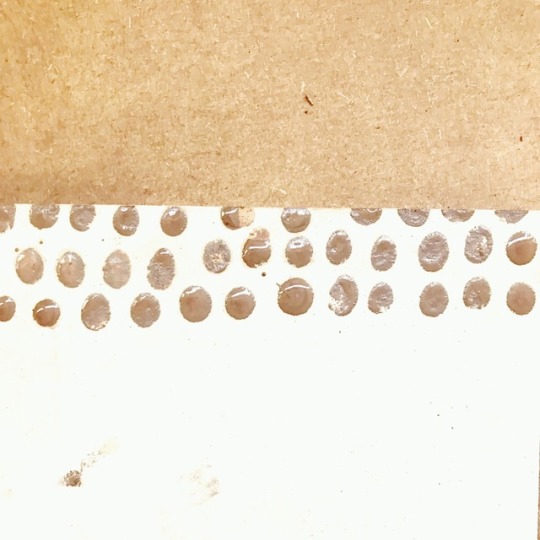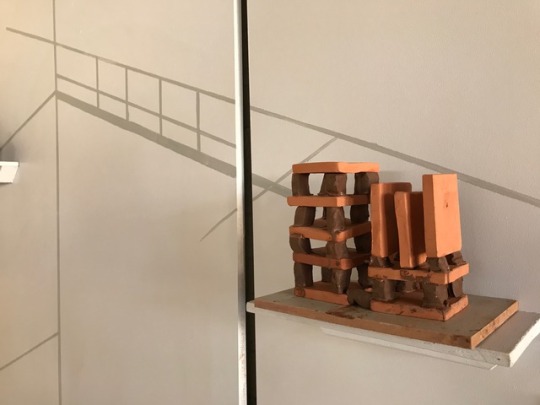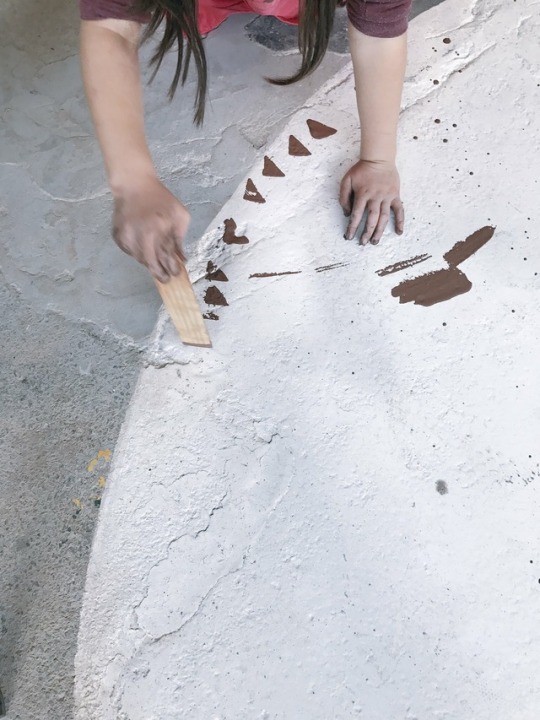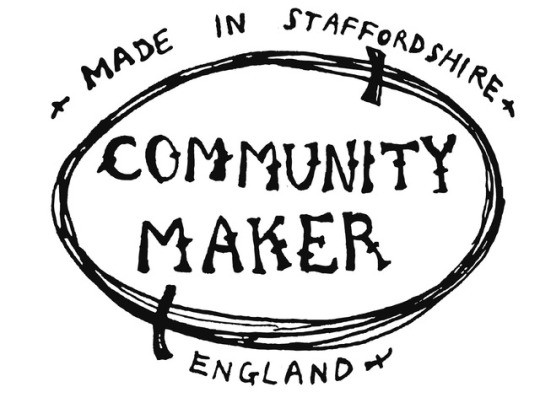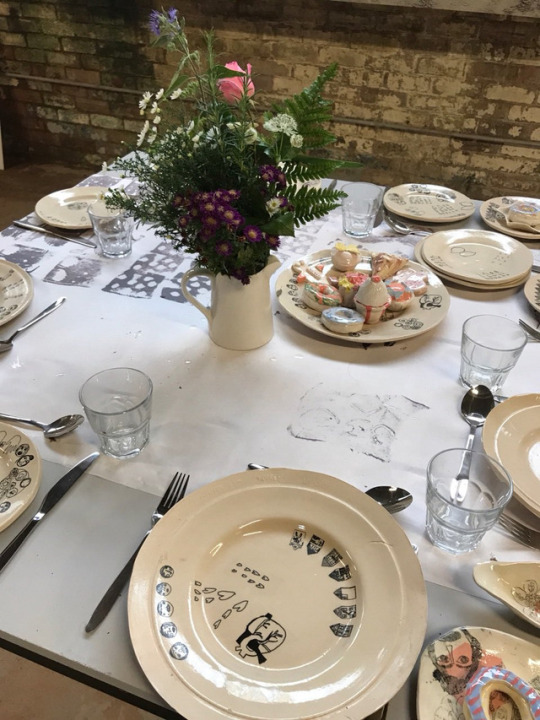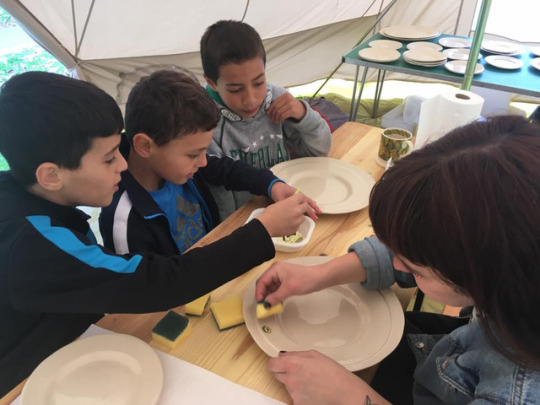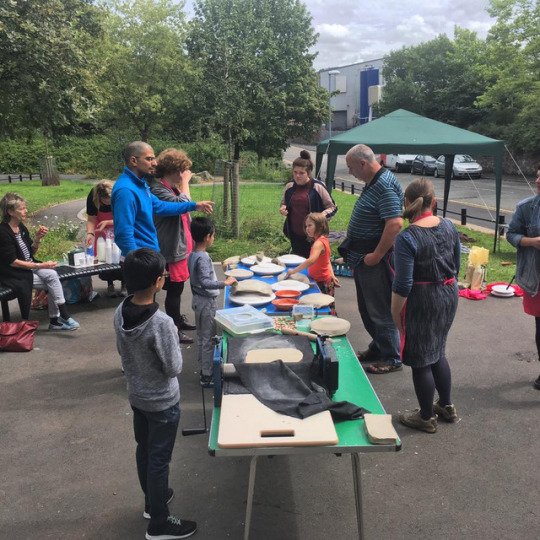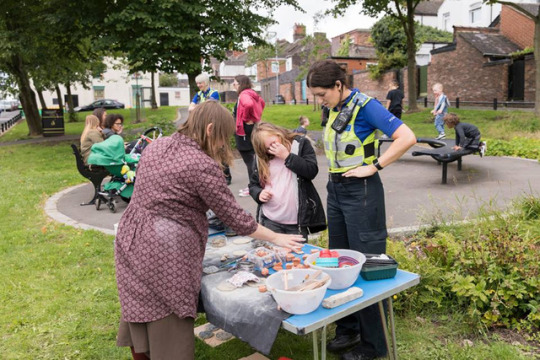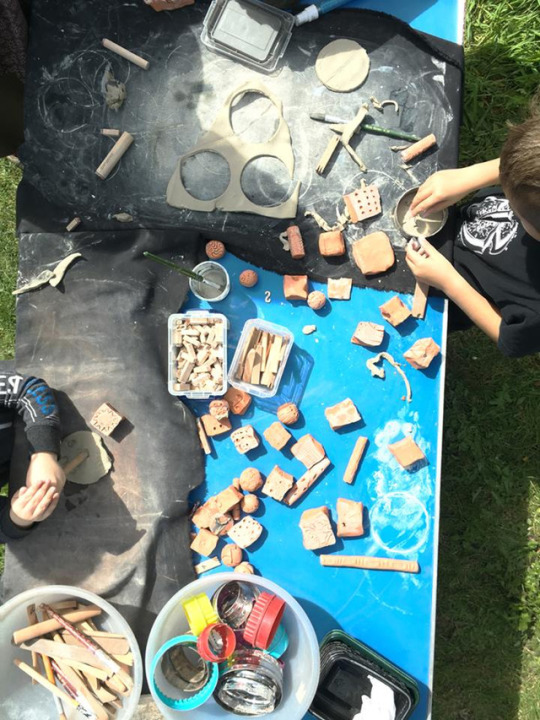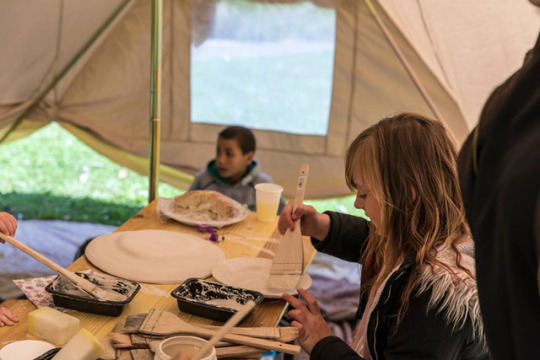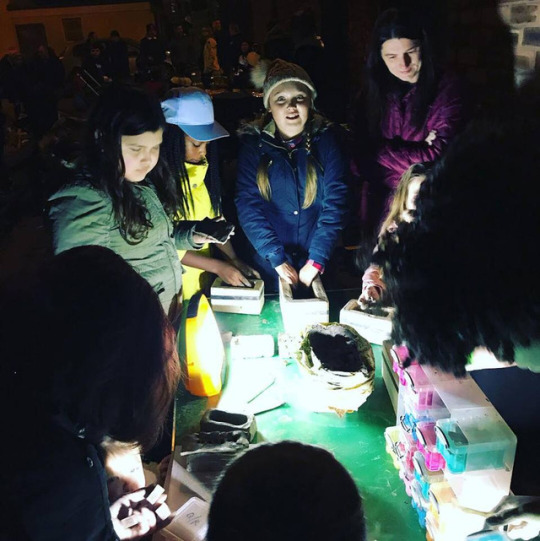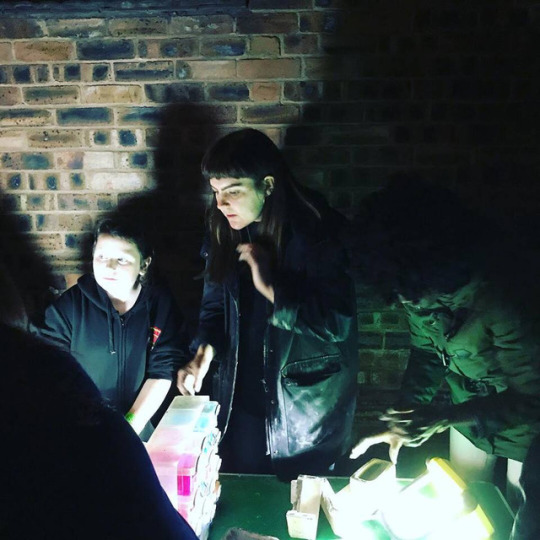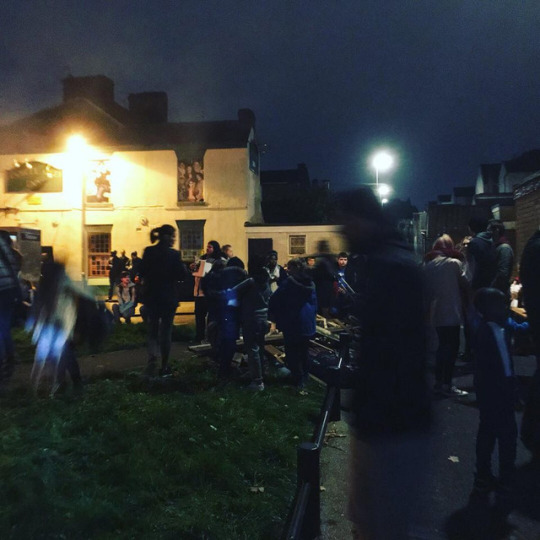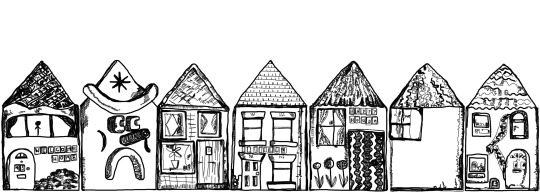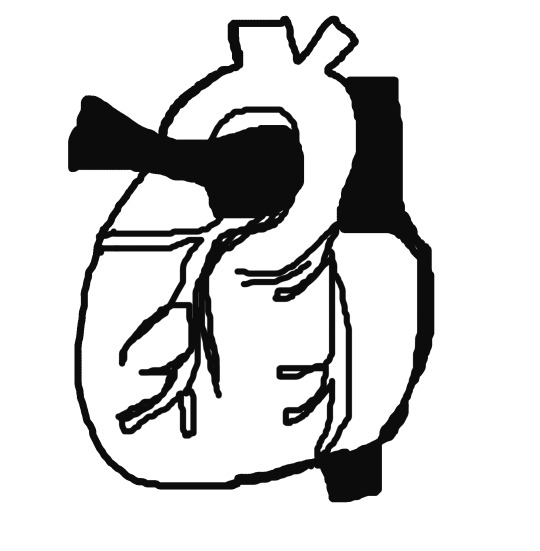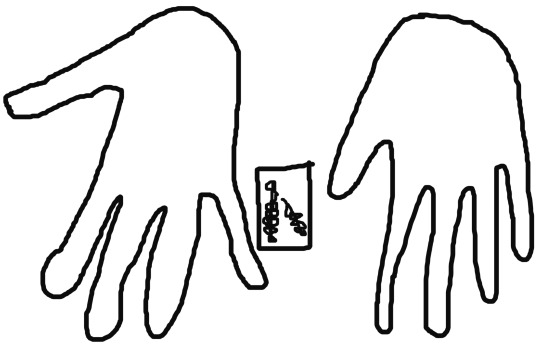Look out for stories, memories and images from people engaging with clay at the British Ceramics Biennial.
Don't wanna be here? Send us removal request.
Text
The Clay Pit was an interactive, large-scale clay playground, installed as part of the British Ceramics Biennial. The Clay Pit was a place to play; a place for people to explore clay in it’s various states: liquid, wet, leather, hard, dry and fired. Using a person centred learning approach called Reggio Amelia, participants were invited to create anything that they liked, using as little or as much of the materials as they wished.
4000 participants visited the workshop space during the festival. Community and education groups, visitors and visiting artists used oversized clay tools, creative props and copious amounts of clay to let their imaginations run free.
The designers of the Clay Pit, Dena Bagi and Priska Falin are passionate about the use of clay, with its ability to stimulate learning, create unique tactile experiences and fire the visual senses and creativity. The Clay Pit is supported by the Ceramics and its Dimensions project, which brings museums, universities and research institutes together to provide a view of ceramics past, present and future.
During the festival, I was one of the artists working on the Clay Pit. Participants of all ages, backgrounds and abilities constructed, played, explored and manipulated the material in many different ways. Each of their pieces, were individual in process and unique in appearance. People joined, printed, stamped, built, shaped, modelled and painted with the various states of clay to create some fantastic work. They used the tools provided as well as their hands to create sculptures inspired by foliage, architecture and heritage. Participants created portraits, they made drawings using the liquid clay and built structures using fired ceramics, and created pots inspired by visits to local factories. Visitors combined the various states of clay to create work that had no boundaries. None of the work created was fired, this approach allowed space for freedom with the material. The Clay Pit encouraged communal hands-on play, exploration and construction.
The work created, connected participants to self, community and place. The way people experienced clay whilst meeting new people was wonderful to see. One participant said “I found it really difficult at first, but I worked with the people around me to figure it out! The different states of clay interested me. The clay is tactile and inviting!” Others spoke of their former connection to the potteries industry and how the skills they learned, automatically came back to them when touching clay again.
A local schoolteacher said, “I am surprised at the versatility of clay. I am very interested in how clay can be used in the curriculum for storytelling with clay and setting up landscapes for language!” We saw many visitors come with families, working together as a team! “My Dad created the bricks, and I built the structure!” said one youngster. Some participants took some clay home with them so that they could continue making. It was clear to me that every single person who experienced the Clay Pit found inspiration in some way, whether that was the comfort in working with their family and friends, or discovering clay for the first time as a new material, even though it is so close to our local heritage.
Liquid, wet, leather hard, dry and fired clay was laid out in large scale trenches, inviting participants to help themselves to as much of the material as they wanted. This was an exciting way for participants to have complete control over what they would create from the start, and how they would create it. Participants described the quality and texture of the materials ‘relaxing’, ‘therapeutic’ and ‘calming’. Partakers were surprised at the variance in the different states of the clay. “I found the clay really cold and squishy. I enjoyed the liquid clay as it was useful, yet fun at the same time!” said one younger participant. The slip was “messy and fun!” said another “I got really excited because I didn’t know what was going to happen! The wet clay is the most exciting to me.”
It was interesting to see the contrasting approaches from different age groups. Younger participants seemed much freer in their composition, some just playing for hours. “My son spent three hours in the clay pit. I have never seen him so engaged with a material.” said one parent.
It seemed that older participants were initially unsure of what to create; the free approach can be daunting, yet the outcomes were very interesting. Some participants used previous experiences of clay to help them create. “This experience has got me back in to working with clay.” said a local artist who visited the pit. “I love the free approach, it really is a fantastic way of exploring the material. My approach is really organic. I like going with the flow, and this is really therapeutic. A great way to be free!”
The Clay Pit has been an incredible and invaluable experience for me, as an artist. Seeing the participants enjoying the material that I work with was really inspiring, and has given me a better insight into the importance of projects like this. The drop-in approach has meant that more people could enjoy working with the clay, especially as the workshop space was free, and open all day and every day through the festival. I saw a wide range of approaches to participants working in the clay pit and was surprised at how experimental people could be with very little instruction or guidance. Also, I saw many people unleash their creativity and imagination whilst making. I saw families connect through working together, and friendships form in communities. I am looking forward to seeing how the project develops in the future.
0 notes
Text
The final year of Community Maker - Anna Francis
The 3 year Paul Hamlyn funding for the Community Maker project ends this year, so in many ways the 3rd year of the project could be seen as the end point, and as a good point to stop and catch our breath, but also it is a time to reflect and plan for the future.The project has been a partnership between British Ceramics Biennial and AirSpace Gallery, with me as lead artist. First, it is important to note down everything that has happened within Community Maker over the summer of 2017. So,at the end of year one, the biggest finding from the project was that the community is desperate for a space to meet, and to put on events and activities; as being outside means you are really exposed to the weather and other elements. This was also demonstrated by Rebecca Davies in her Oasis Social Club project. These findings led to the offer of The Portland Inn pub, a question from the Council about whether the community could take it over, and run it. For the second year of the project's immense activity, I partnered with artist Rebecca Davies to apply to Arts Council, and we tested and delivered 54 activities and events over 4 weeks, with a recorded 622 participants. After that, Rebecca Davies and I worked on a business plan, based on our programme and everything we had learned, in order to begin the process of a Community Asset Transfer of the building. This was handed in in November 2016, and since then we have continued to campaign to get the building. In the meantime it was important to ensure that there was still a presence within the area, even though, in the background, we are working hard, this is not visible on the ground. So, the final year of Community Maker has been about continuing the conversation about what the building can be, and what the community needs. Image: Tile making decal imagery created by Community Maker participant. The Portland Inn, in Summer 2017, was uninhabitable, the hole in the roof is much worse, and the spaces are very mouldy and unhealthy. This meant that we were back in the tent in the green space again for our programme of activities. As it announced on the brochure of activity, that was delivered to each of the houses in the area: 'Clay has been used to gather and activate the community, encouraging individuals to communicate and form ideas about the future of our place. This summer, you can join Anna Francis to complete a series of interactive 'clay tests'. The tests are designed to see what types of clay and creative engagement should sit within the heart of the new social enterprise, The Portland Inn Pub.' The plan was to have a launch event, and then a few weeks later, to begin a series of 4 Saturday making sessions, from 1-4pm with a core group of individuals, signing up to attend all of the sessions. We learned in year one, that asking people in the area to commit to a programme was impossible, I had thought this may be because the project, and I, were new to the area, and that given that 2017 was the third year, perhaps our commitment to the community may be matched by some members of the community committing to 4 Saturdays with us this year. Image: Faces of the Community decal imagery created by Community Maker participants. The launch showed that people weren't really confident to commit to this, and there are a number of factors that could have affected this. 1. being back in a tent - we are in a temporary structure, with no heating, ammenities etc. 2. problems affecting the area in 2017. Image: House decal imagery created by Community Maker participants. When the project began in Summer 2015, the one pound home owners had been moved in for approximately one year, and though there were still a number of residual issues, of fly tipping and some minor anti-social behaviour, things felt to be improving in the area. Our programme on the green space that summer was well attended, it was a pleasant place to be based and there was a lot of positivity and hope. This then gave us a measure, to see how much had changed in the area in Summer 2017. From the very first event, we noticed a change in atmosphere on the green space. Living close by, I was already aware that the well reported problems with addiction to legal highs in the city were impacting locally. It was also evident that a number of properties in the area were being operated by drug dealers. This, along with a public space protection order on the city centre, meant that the green space where we were hosting creative activity, which was just outside the protection order zone, had become known as a space to easily access, and consume drugs. We learned during the project, that it is known as 'The Mamba Fields.' The associated problems caused by the above meant that running the project on the space was very challenging. We realised quickly that we needed at least 4 people to be present at each event, in order to manage the space, assure the safety of participants, and still deliver a viable and productive workshop. At times, the precariousness of the situation left us feeling very exposed. The situation for the residents, participants in the activity too came into focus via the project. People told us that the green space was now viewed as a no go zone, and that the community would avoid the space when we were not there. All of this showed a need to reconnect the community to the services tasked with operating in the area. We contacted Marvin Molloy from My community Matters, a key partner in our work in the area, to ask him to help us to set up a meeting. The community were invited along with key service providers, the police, anti-social behaviour teams, drug services, housing teams, selective licensing team, and others. The idea of the meeting was to make visible the challenges in the area, and to ask for a multi-agency approach to dealing with the issues. The first meeting, there was a brilliant turn out from the community, but a disappointing turn out from the services, key partners were missing. At this stage, Marvin and I got in touch with our local MP Ruth Smeeth. Ruth has been a real champion of the project, and so we felt it was important to get her support in engaging the services. With Ruth's support, more of the services were engaged in understanding the urgency of the challenges being faced by the Community. Neighbours came to the meeting and talked about 'fear of walking into town' and young people refusing to leave the house, as they didn't feel safe. Since then, a monthly meeting has taken place with the community, but with the services meeting fortnightly, to first set targets, and then to deliver the changes needed to improve on some of the problems in the area, without simply passing them on to somewhere else (as has happened here as a result of the public space protection order). This has been really positive, and within weeks the improvements to the look and feel of the area were visible. Community members have been incredibly active, and vocal about what was needed, and this has made a difficult situation better, quickly. There is still more to be done, but everyone is working together to ensure support is given where needed. Image: Heart decal imagery created by Community Maker participant. Leading the project over the years, and delivering the summer programme, meant we were able to see quickly, matters affecting the community, because they affect us too. The challenges this summer in delivering the workshops have galvanised the community around the project, really bringing everyone together around a common goal of improving the neighbourhood for those that live here. In many ways, the creative activity, making with clay, became secondary to the work needed to deal with some of the issues we faced in working here, and at times the real work felt to be in advocating for the community in the all services meetings, but still, a programme of creative workshops was delivered over a month. We wanted this time to see if we could make something quite sophisticated with the community. Alice Thatcher, our ceramics specialist on the project, has been working with us since year one, and knows the community well now, and has a great rapport with everyone. For both Alice and I, it was important that though we may have been operating from a bell tent on a green space, we wanted to step up a gear in terms of the ceramic skills being covered. In week one, we brought moulds to the space and made press moulded plates with the community. In week two, we worked on printing with clay, and making clay stamps, while our plates dried out and were fired. In week three the plates returned to the space to be glazed. Finally in week four decals made from images from year one and two were applied to the plates. We had a lot of rain over the weeks, but the final session in pouring rain showed the commitment of participants, who stayed for the whole 3 hour session, despite the rain and the cold. This session was very special, with participants, some who had come for all three years, but some who had only just started to come this year, told us how important the sessions have been for them. Working with clay has provided a moment of pause for people, the transformative nature of the material, which can move from one state to another quickly, without fuss feels like a mirror for the community. 'We're going to miss these sessions,' one neighbour said. The Community Maker plates made during this summer's workshops were displayed at the British Ceramics Biennial from September to November. Thousands of people saw works made by our community on display beside the biggest names in ceramics. A special meal was hosted one Saturday of the festival, with key participants from the project invited for a 3 course gathering, eating from the plates we made. We invited our local MP, and drank a toast to the project, and to the community. Perhaps the very last events for Community Maker were a community bonfire for bonfire night, where bricks were made, as memory boxes, by firelight to be fired live in a raku kiln, at the Christmas Celebration, planned for mid-December. These two events are different from the others, as they were not planned within the Community Maker project, but instead are events which the community has organised, and asked us to support. This is an important moment. Over the three years that we have been running the project, we have organised or been central to organising events and activity FOR the community, these two events are a turning point, we are now working on events WITH the community. That is the most important outcome of the Community Maker project in my book. The urgency to have the Portland Inn transferred into community ownership became very clear this summer. This community needs a project like this, in order to be able to respond quickly to changes, and to be a support network for each other. As much as we love our tent, we know we cannot have another summer like 2017. Rebecca Davies and I along with the partners in the project are working with the council to make the project happen, and coming up with a plan for Summer 2018, to ensure the community has a space to meet and make together, even if the pub is inaccessible, hopefully, due to renovation. Community Maker was used as a case study in the Local Government Association publication 'People, Culture, Place - the role of culture in Placemaking.' and within the newly launched Culture Hub, a partnership by LGA and Arts Council England, highlighting good practice in delivering culture with councils and their partners.
0 notes
Text
Community Maker
“Community Maker is a 3 year project, a partnership between British Ceramics Biennial and AirSpace Gallery. In 2015 – the project was all about aiming to create space for a community to get together, eat, meet and make – and explore together, how to develop the area. I am the lead artist of the project, and much of my thinking around the project stems from the very interesting dilemma of being an artist and a resident. I have worked in public and community contexts many times over the years, but this is the first time I have done so within my own neighbourhood. The interest for me stems from the context we, as a family, find ourselves in, as members of the £1 home scheme – we were tasked, as part of the deal, with being ‘active members of the community – and agreeing to be part of community life, using our skills and resources to support the community to develop.’ We, and 32 other households across 4 streets agreed to this when we took on our £1 houses in this area. I was really interested in exploring what role an artist might be able to take in this context, and the Community Maker project takes this as a starting point.” Anna Francis, 2016
I have been working with the British Ceramics Biennial and Anna Francis on this project since 2015 and I am really pleased to have the opportunity to continue to create work with Anna and the Portland Street community again. During the sessions, we will be creating a range of ceramic ware which will be used in a feast during the British Ceramics Biennial festival. The Portland Street community will be invited to attend the celebration and will use the work created to feast on dishes they have made. Our first session was a ‘taster session’, which explored various states of clay using BCB’s ‘Clay Pit’. Participants were invited to collect their materials and tools using the ‘Reggio Emilia’ approach. This approach invites participants to explore clay with no direct instruction. There were 4 states of clay; slip, wet clay, dry clay and fired clay. This gave the community a chase to re-discover clay and explore the material with no boundaries. This session was also an opportunity to sign people up for the Community Maker course. The course started the following week, this session was a plate making session. With many of the community getting involved, we created 19 plates using Spode press moulds and each participant learned a new skill. “I felt upset before the workshop, but I feel happy again” said Amelia, aged 8. Participants described the session as relaxed and fun. Chloe said “I feel this workshop has given me confidence to work with clay again and I am really excited to see the finished work”. One participant said “I love how fun it can be and I love making the ideas in my head a reality”. It is clear that working together, sharing skills and creating are extremely important aspects of community growth. Alongside our ‘main’ activity, each week we deliver a drop-in activity. The first week’s activity, led by Dena Bagi was a fun activity, which allowed the participants to use clay to collect textures from around the community green space, the results were fantastic and the children really enjoyed using clay in such a free way. I’m really looking forward to seeing the work grow. Alice Thatcher Plate-making images by Glen Stoker

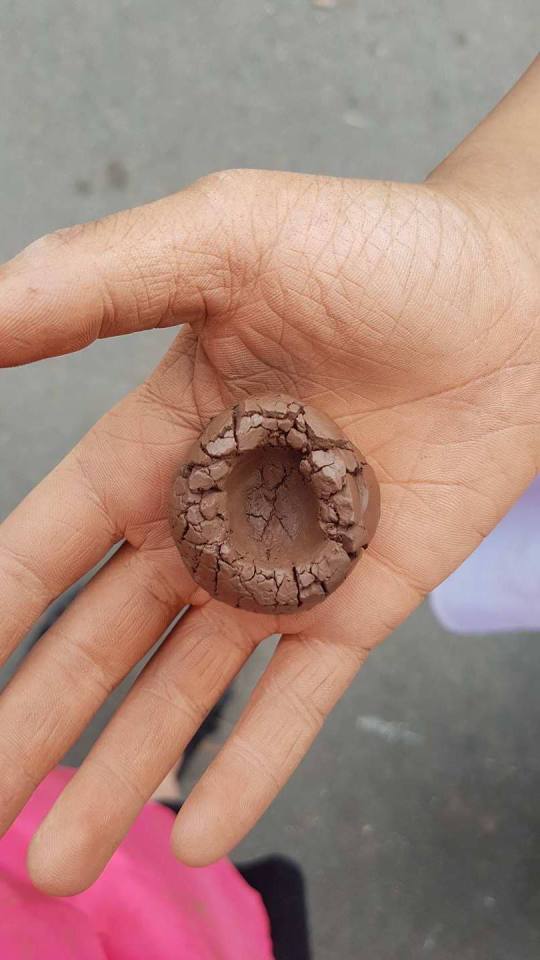

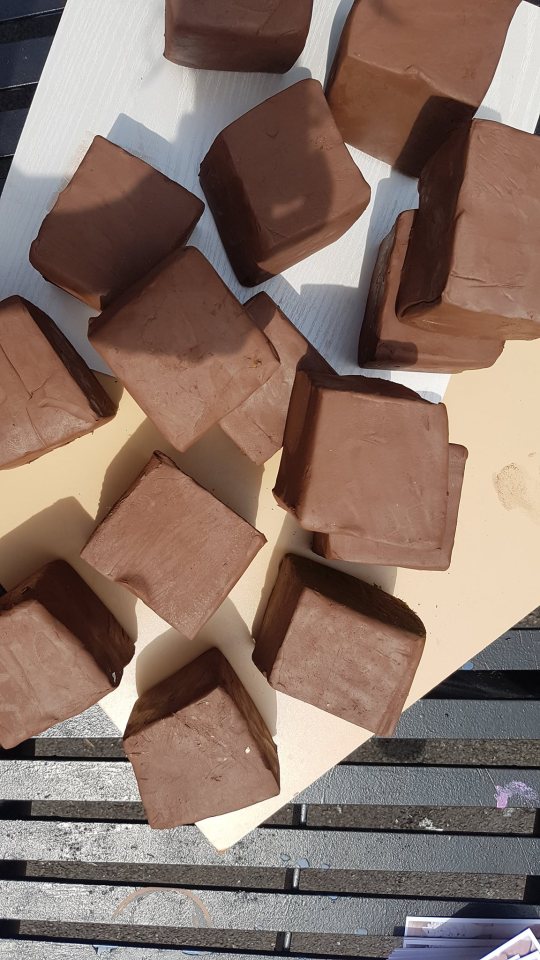
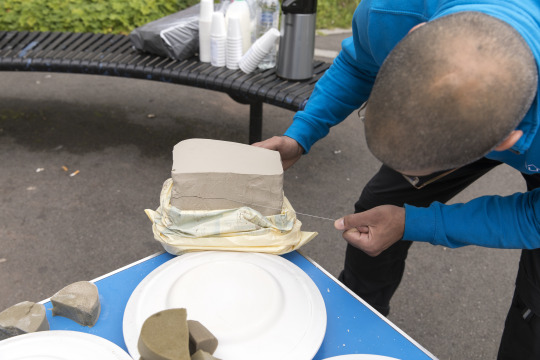
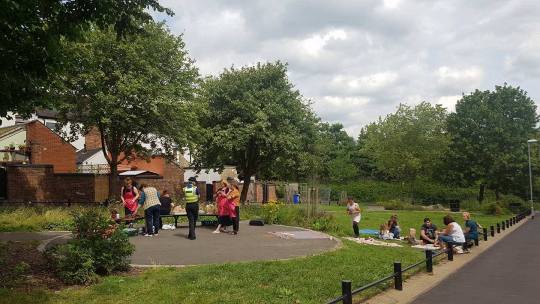
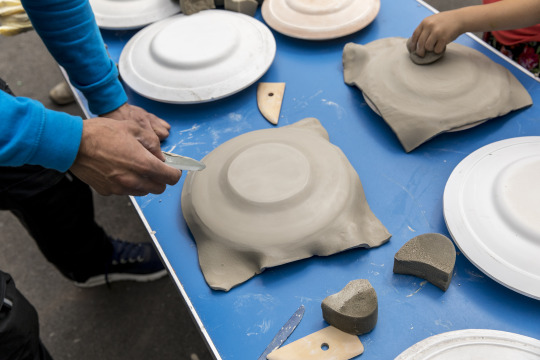
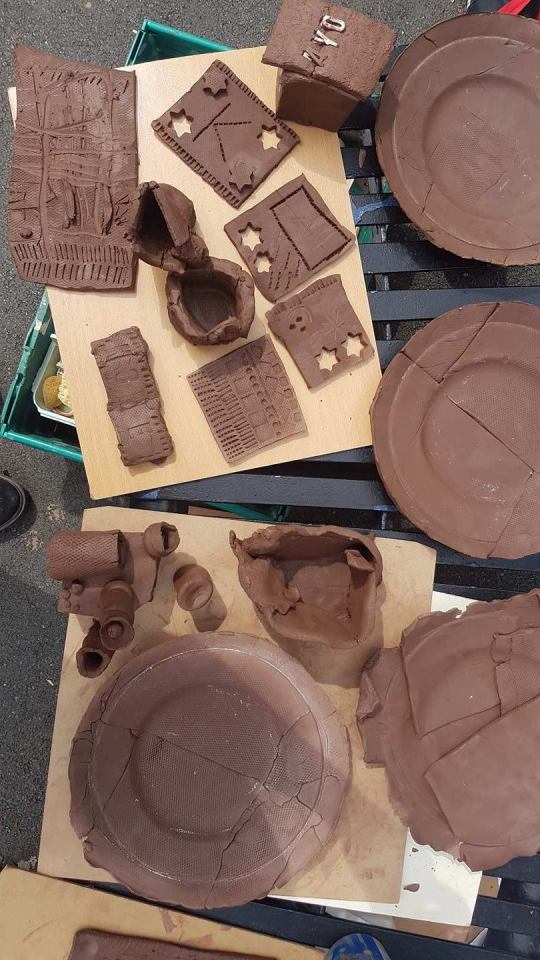
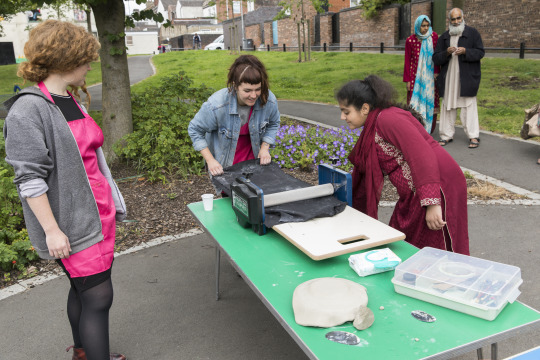
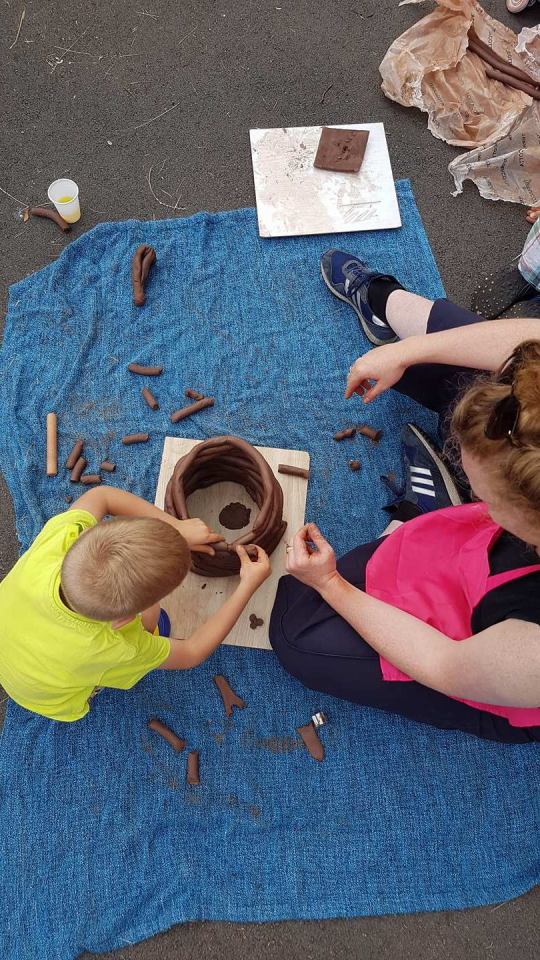
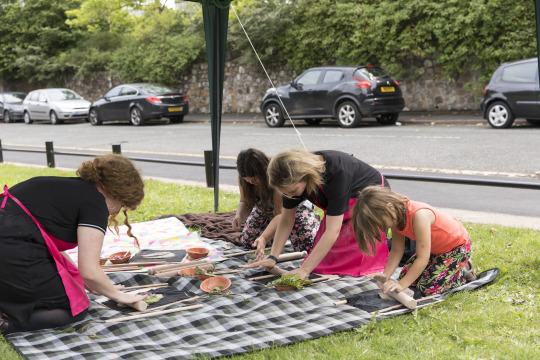
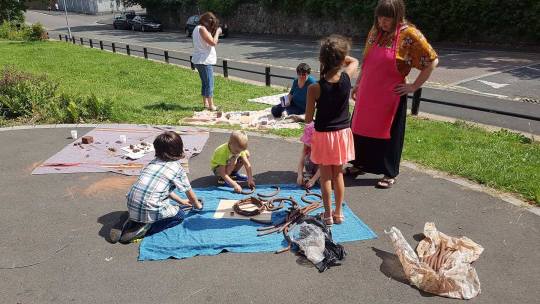
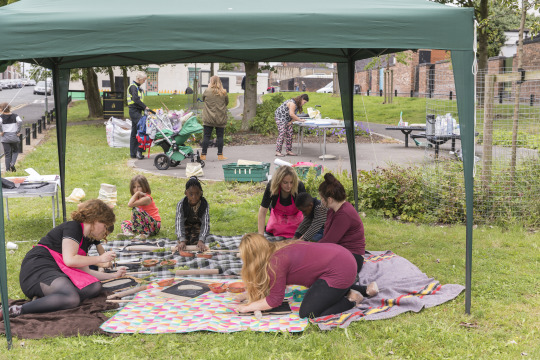
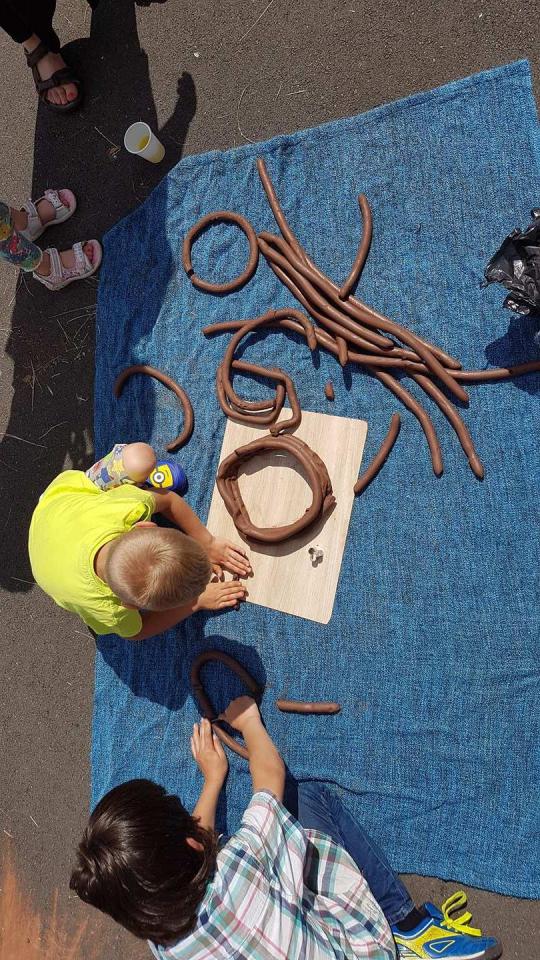
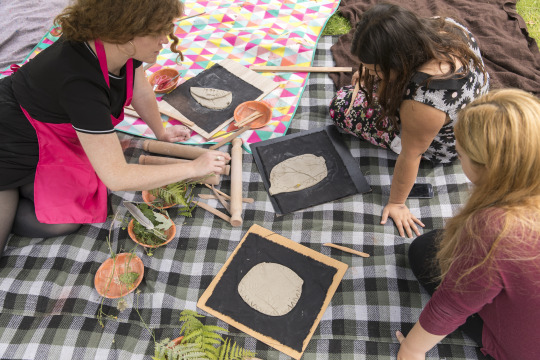
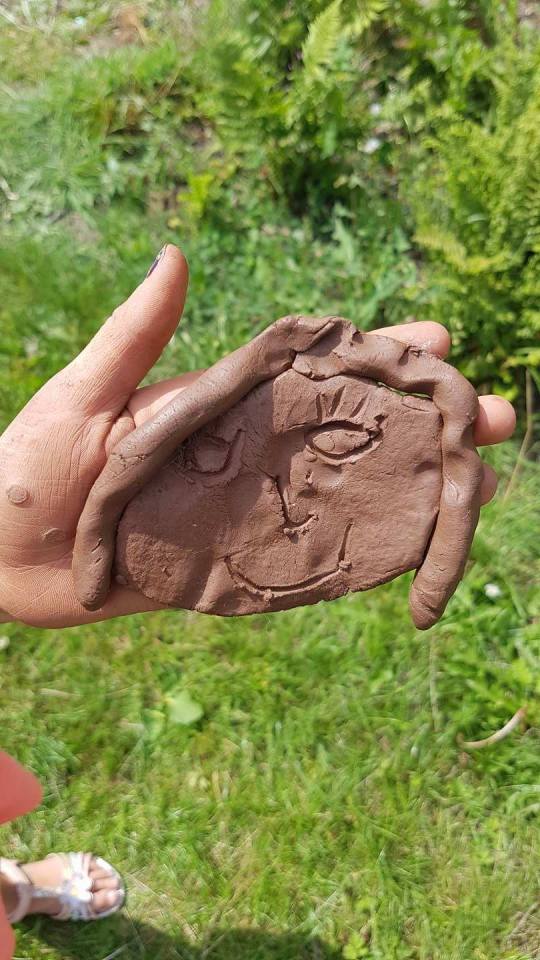
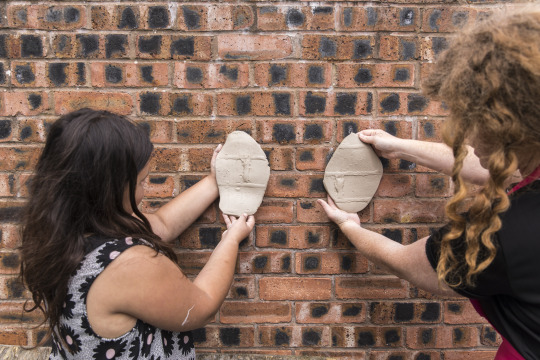
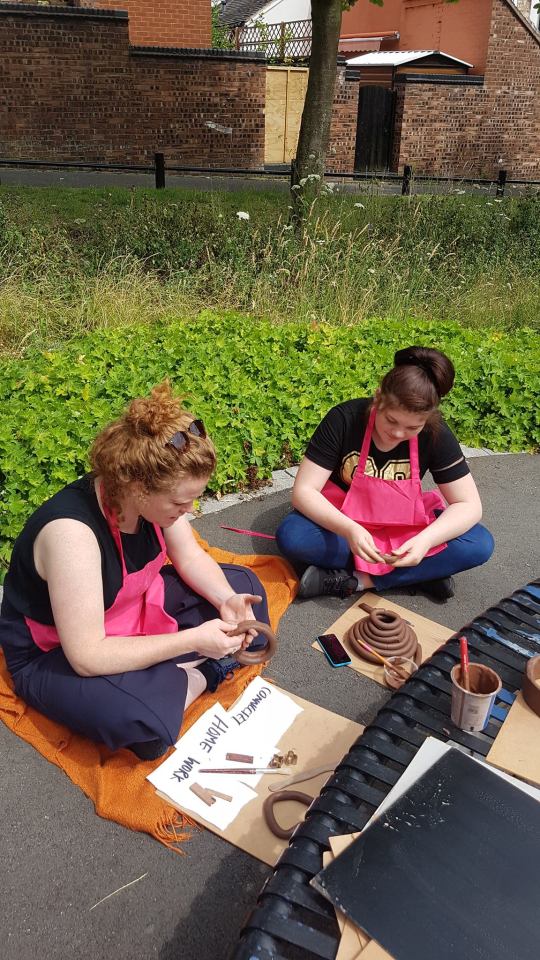
0 notes
Text
Artist In Training Programme ‘World in One City’. Development
The ‘World in One City’ project explores themes surrounding cultural identity, place, heritage and feasting. Bringing together food and clay, throughout the weeks, the Burslem Jubilee group have reflected on the new community they have found themselves within. The participants have also been learning some of the history of Stoke-on-Trent and have developed new skills in ceramics. The Jubilee Group represents 40-60 adults living in the city who await decisions on their visa or immigration/asylum status. I am working on this project as part of my Artist In Training Programme with the British Ceramics Biennial and Arts Connect. After reflecting on the group’s needs and how the artists work whilst considering these needs, I am now giving consideration to how the artist’s practice can be discussed with the group appropriately, and the parallels between participatory needs and how the artist works. The Burslem Jubilee is a vulnerable group of people. With the journeys and experiences that they could have been through, it is incredibly important to always consider this when we are developing work. Whilst making work which could challenge people’s perceptions and attitudes towards refugees, asylum seekers and migrants, it is important to create work that demonstrates this, yet stays appropriate and provides a safe place for people to learn new skills within a new community. Whilst working with the group, Joanne Ayre uses discussions about food and culture to inform the work created ,and tailors to the groups needs by making conversations comfortable and considerate. Whilst working alongside Joanne for the past few months, it is clear that her way of engaging is inspiring to participants, and the participants motivate her in return. This shows through the work created, and is extremely important in participatory practice, especially when working with vulnerable groups. I feel very grateful to be part of such a wonderful project. Assisting Joanne with her work has been really insightful and inspiring for the improvement and movement of my artist practice. I have learned a great deal from her work methods and her communication skills, with all the people involved in the group. Her work is explorative yet tailors to the groups needs. Working alongside Jo, and the participants themselves has been a fantastic experience.
1 note
·
View note
Text
Artist In Training Programme ‘World In One City’
Our final session with the second World In One City group was led by artists Steve Dixon, Eleanor Sims and Joanne Ayre. We created medals using mixed media techniques and added decals to the pieces created previously. As well as creating and finishing pieces, Barry Taylor joined us in the BCB studio for a conversation with the Burslem Jubilee group. The discussion was based around stories about 'home', 'journey' and 'Stoke', and the information collected will form a new artwork to be exhibited as part of 'Refugee Tales' which will be exhibited during the British Ceramics Biennial festival. "We sit together, discuss and share. I feel a sense of belonging here!" "I have a new life in Stoke. People are welcoming here. I feel safe!" Creating the medals have been fantastic for the participants, not only for the group to learn a variety of skills, but also help them gain an understanding of other refugees and asylum seekers, specifically during World War One. The pieces created were very well made, and the ownership and pride shone through, with great detail going into creating the pieces. Projects like ‘World In One City’ are hugely important. With recent negative press, projects like this can change attitudes towards refugees, asylum seekers and migrants. It is extremely important for these groups to engage, interact, build communication skills, form positive relationships and to have a place to feel safe. A really lovely last session with amazing outcomes. I'm looking forward to seeing all the completed work exhibited.
Alice Thatcher, Artist In Training
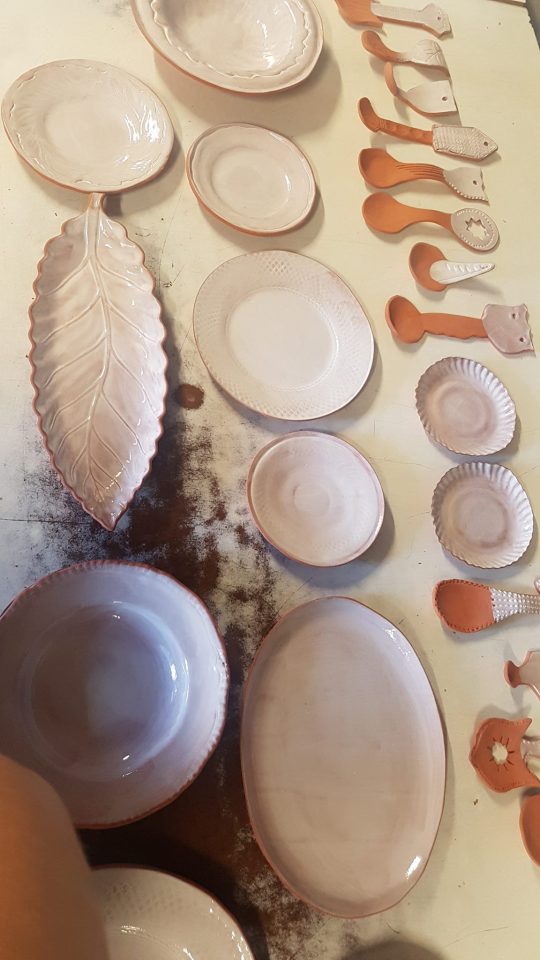
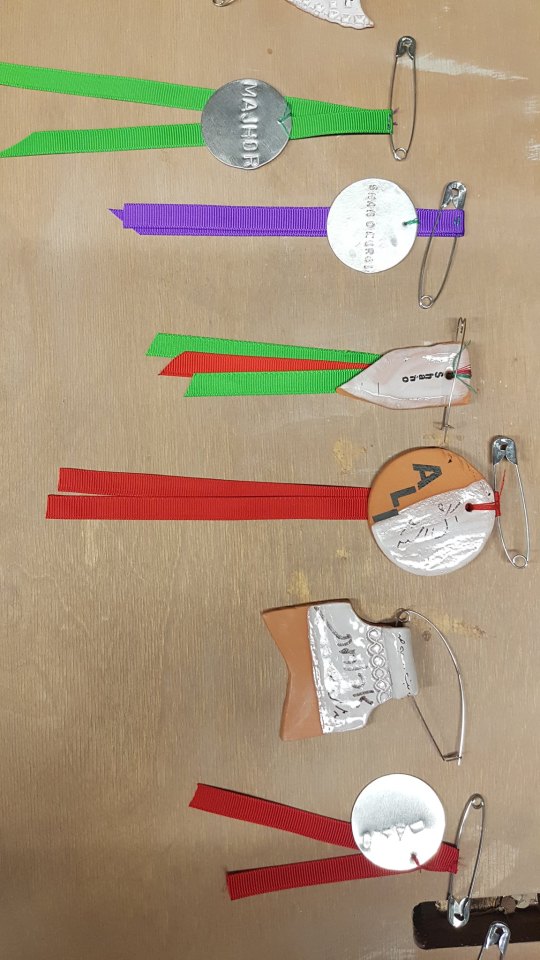
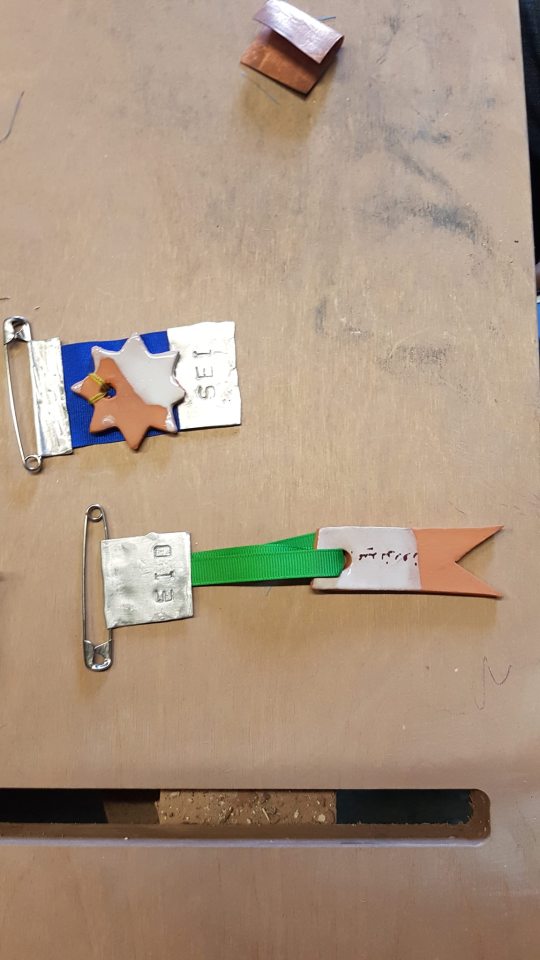
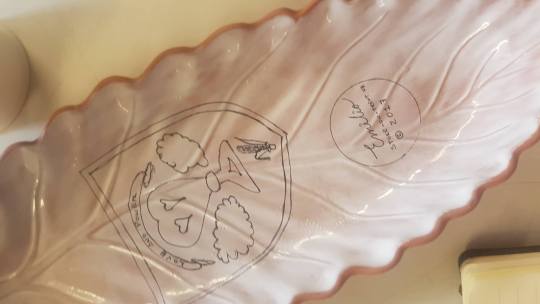
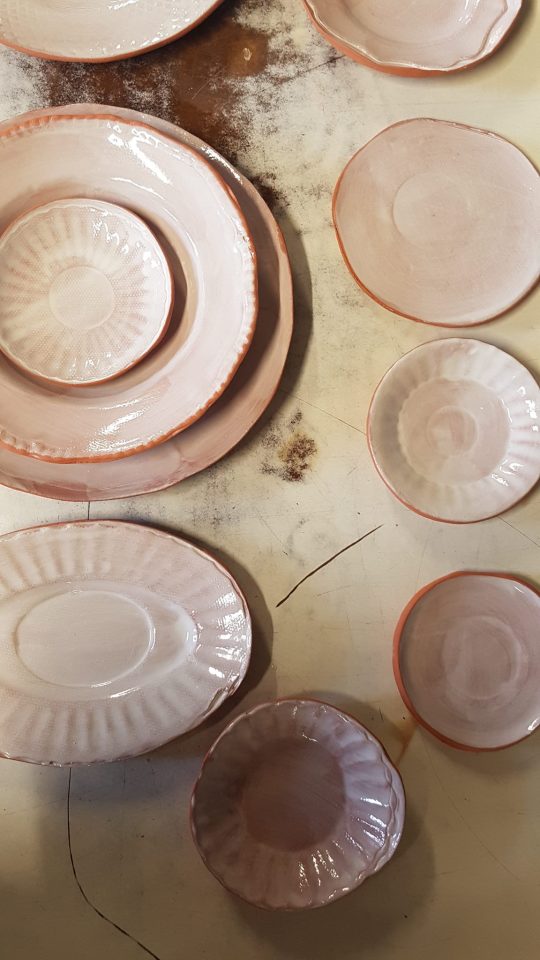
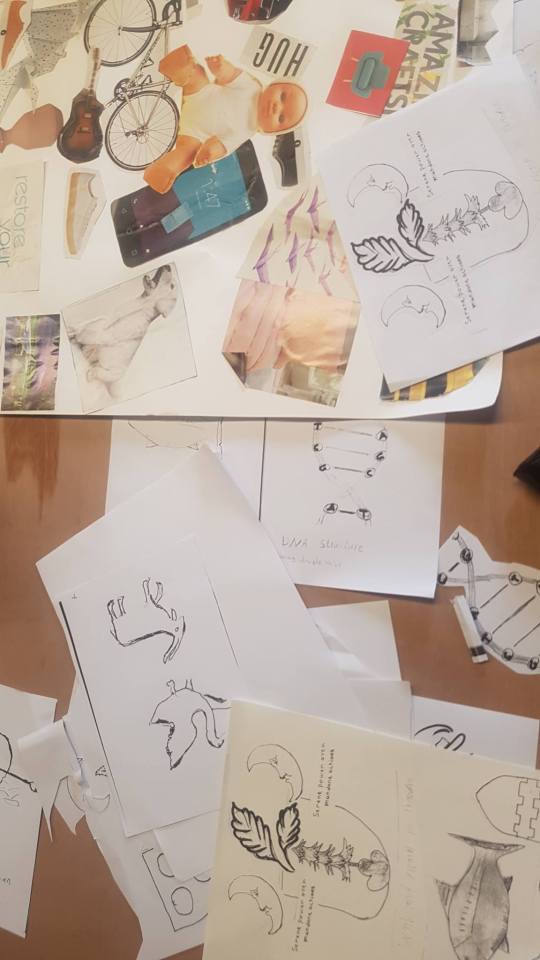
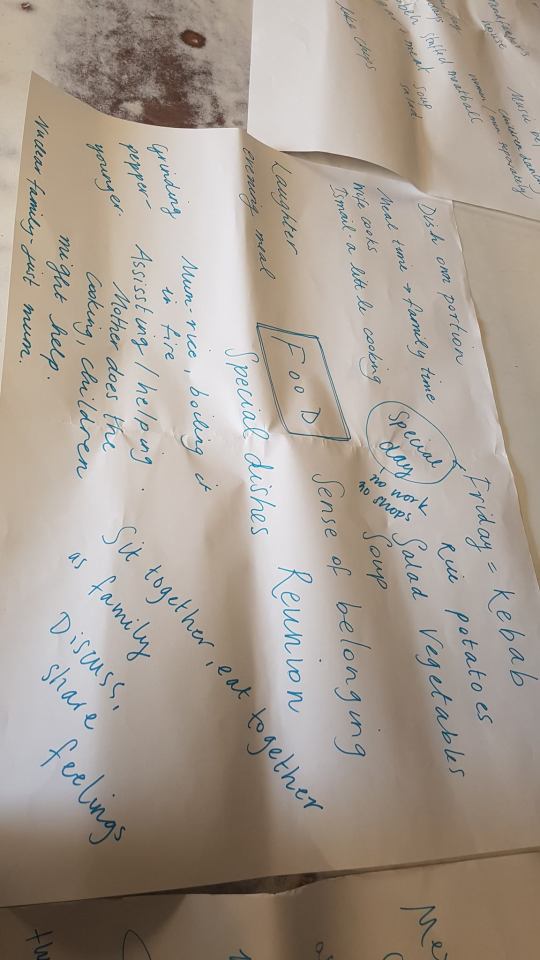
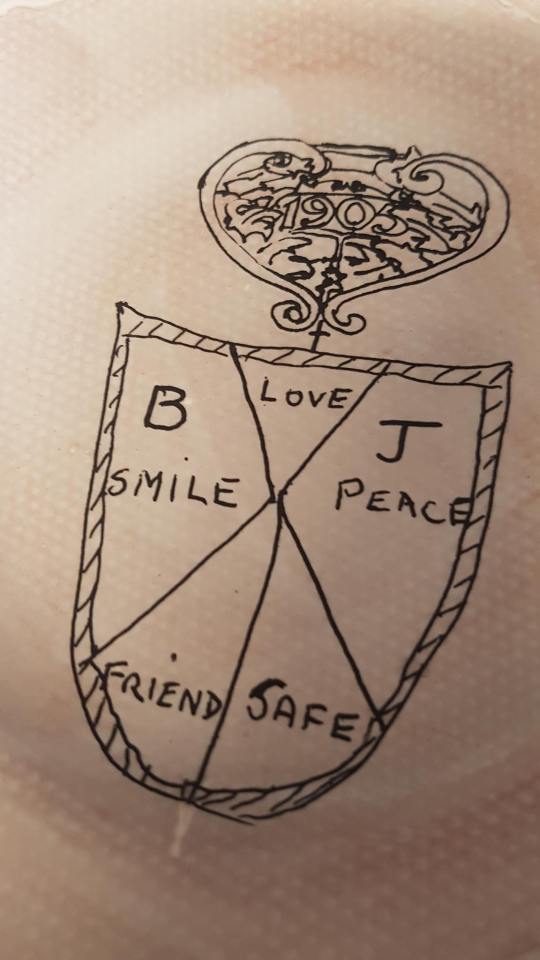
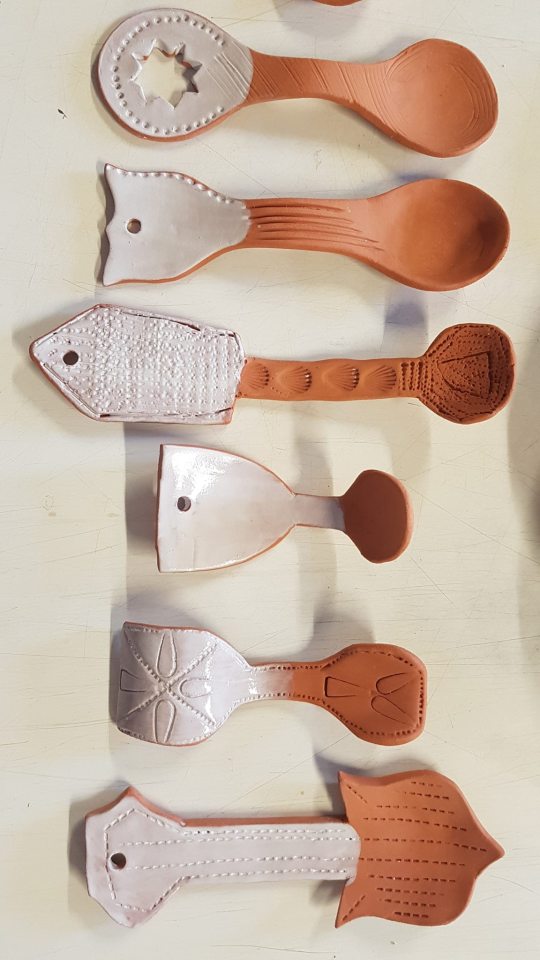
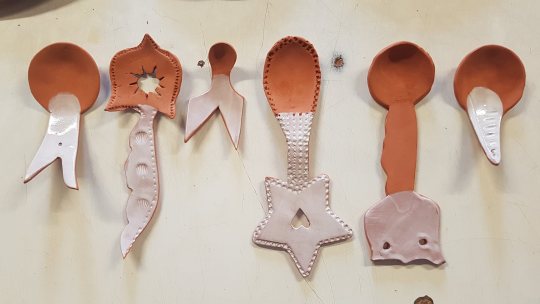
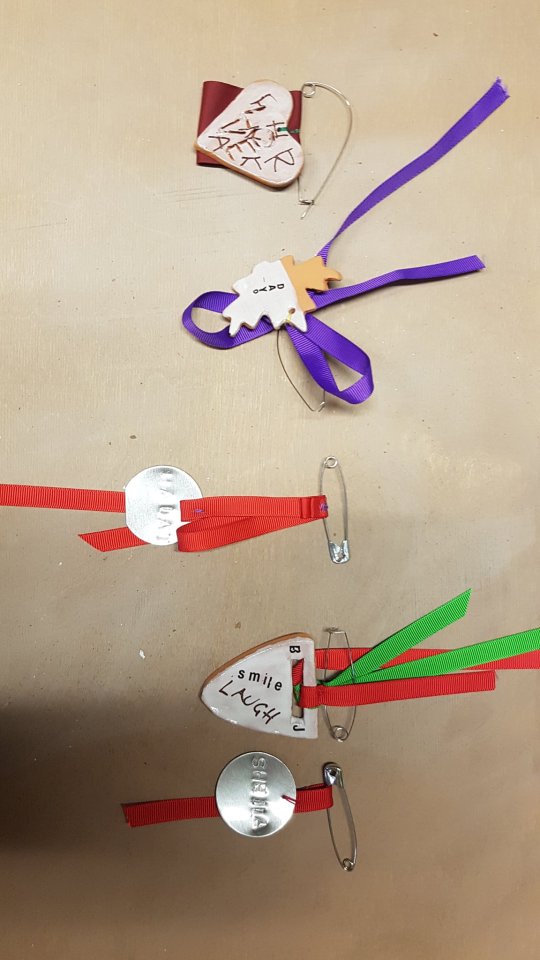
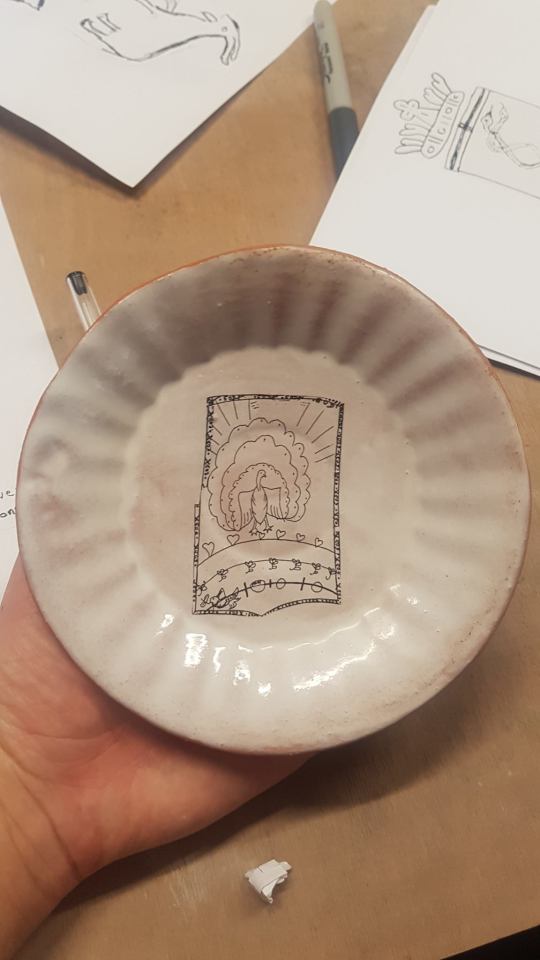
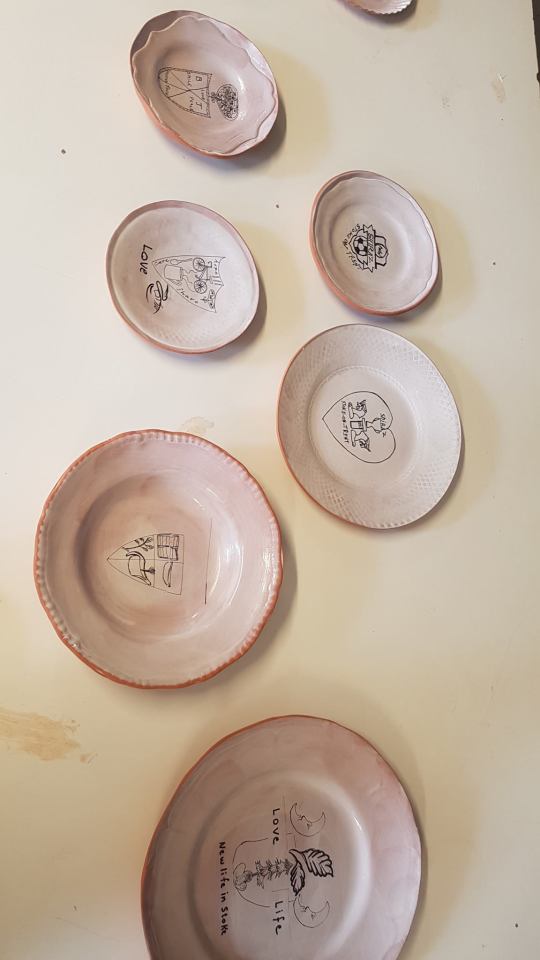
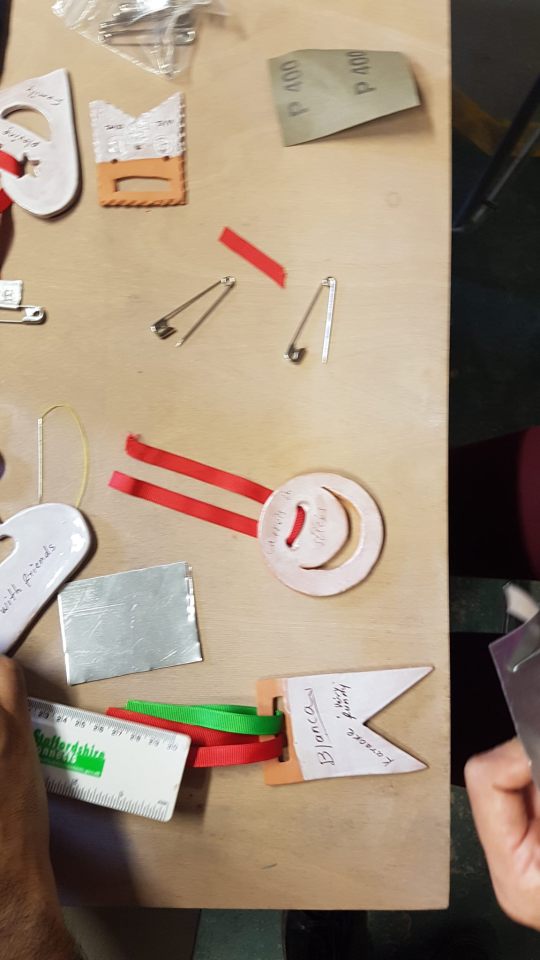
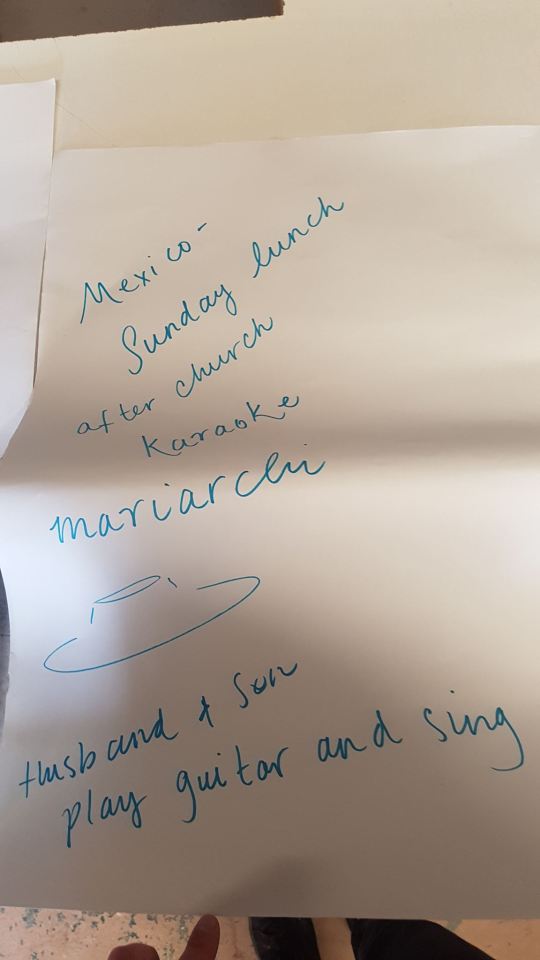
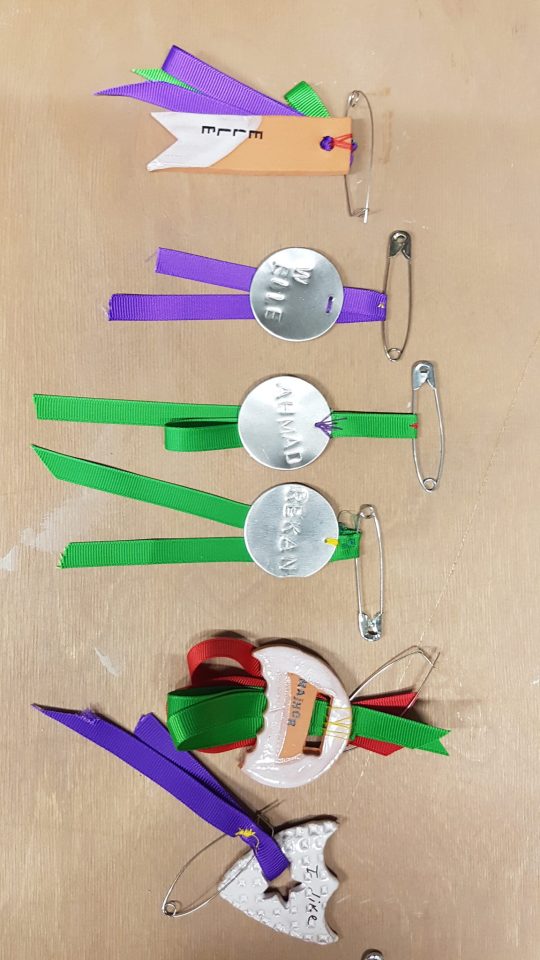
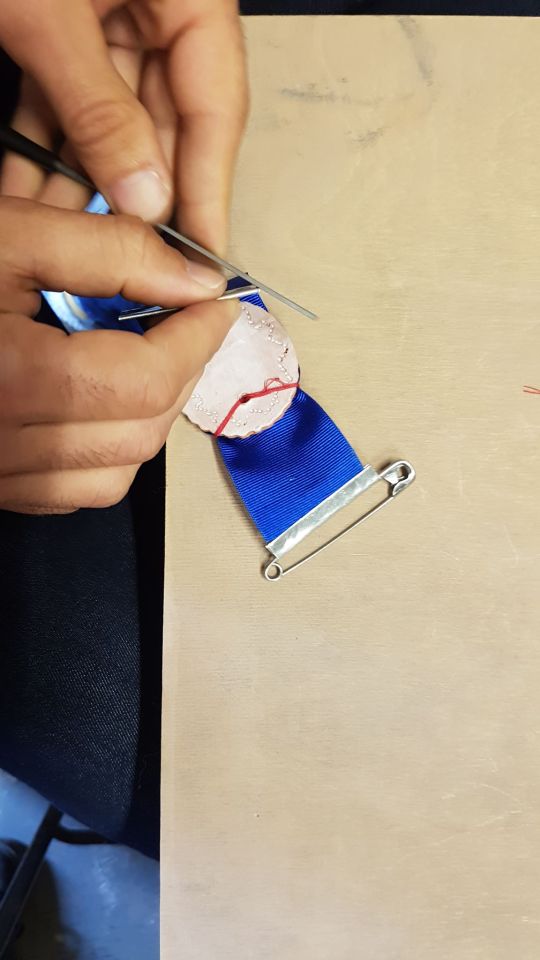
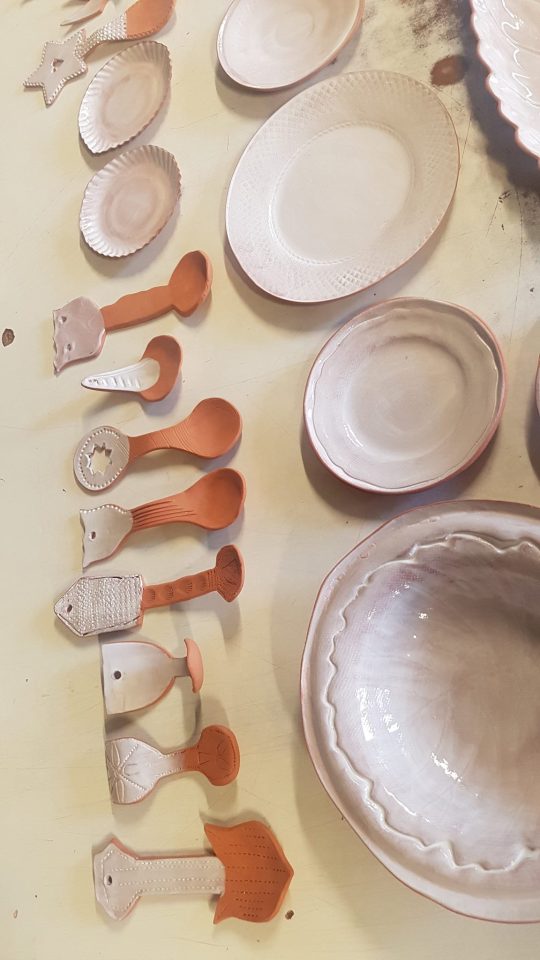
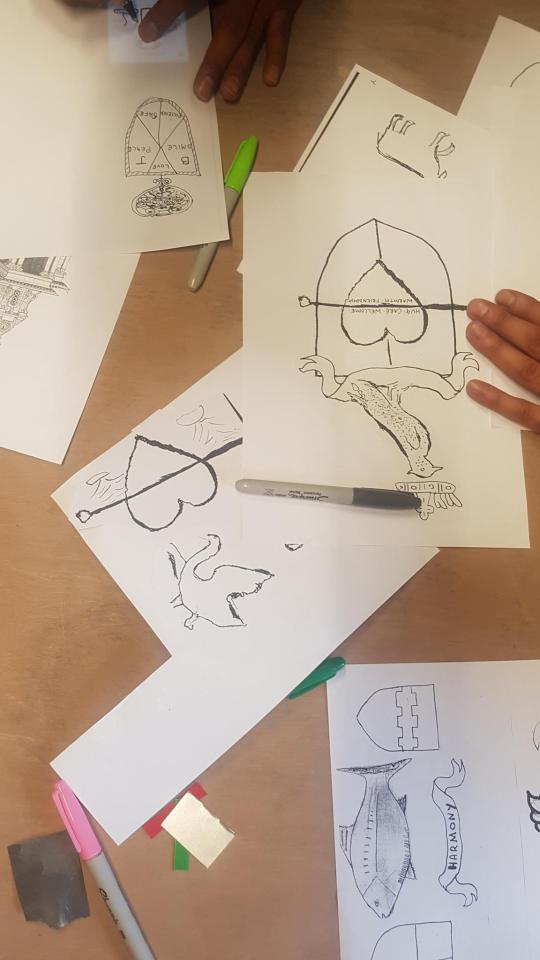
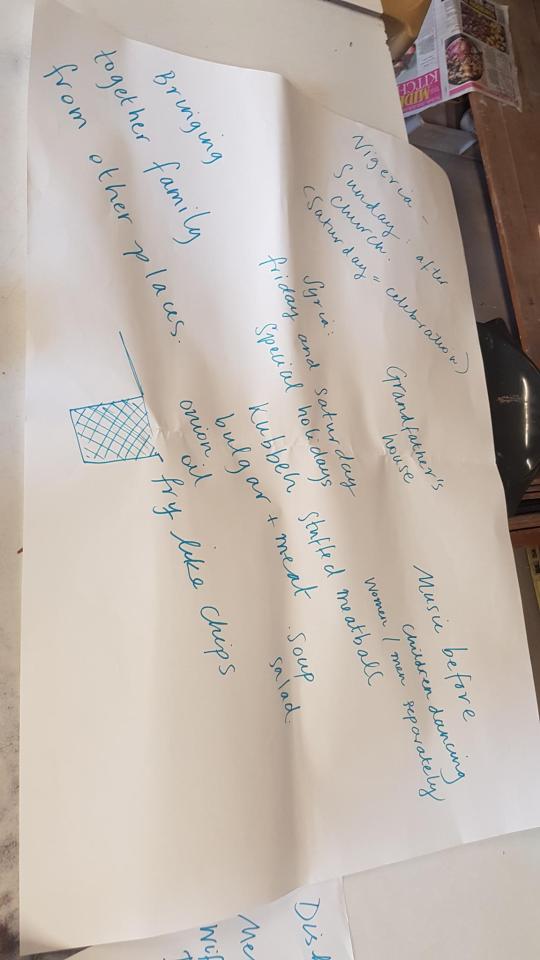
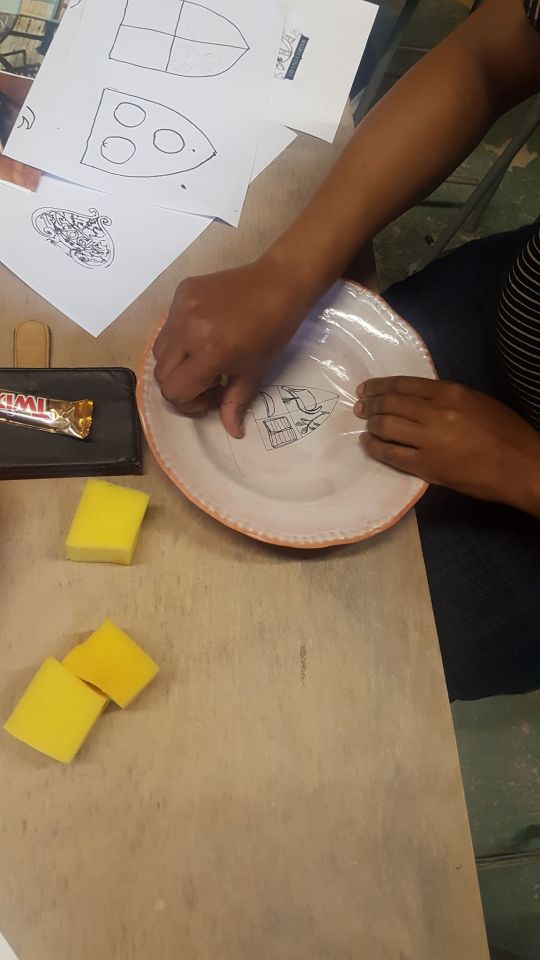

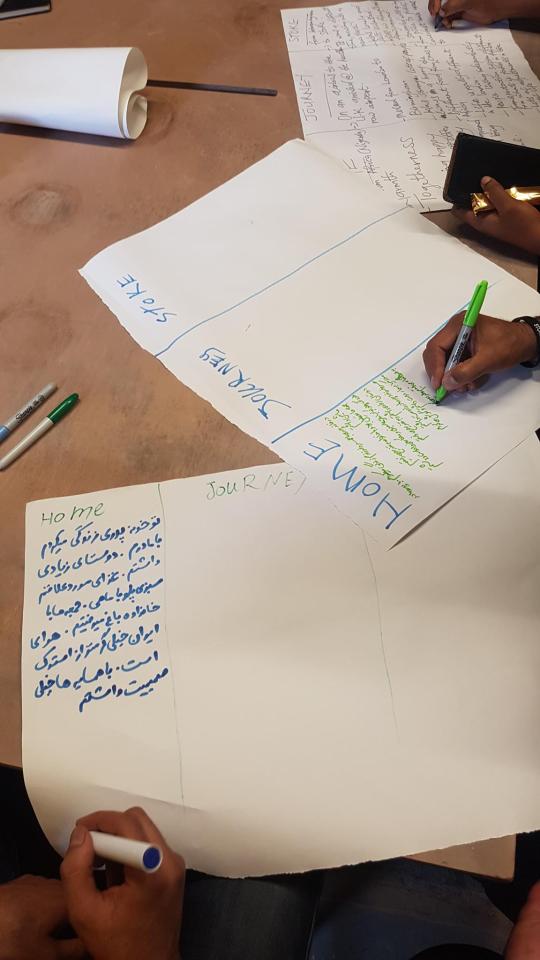
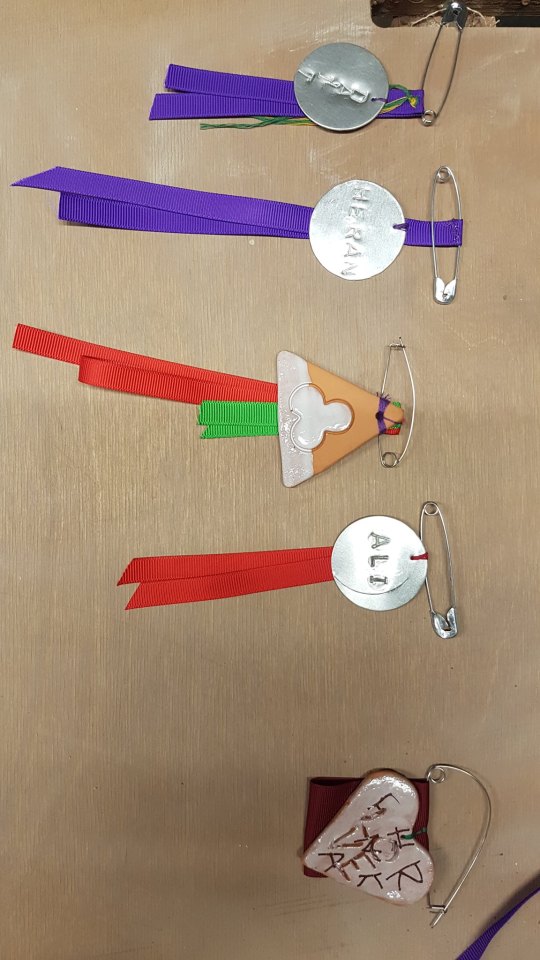
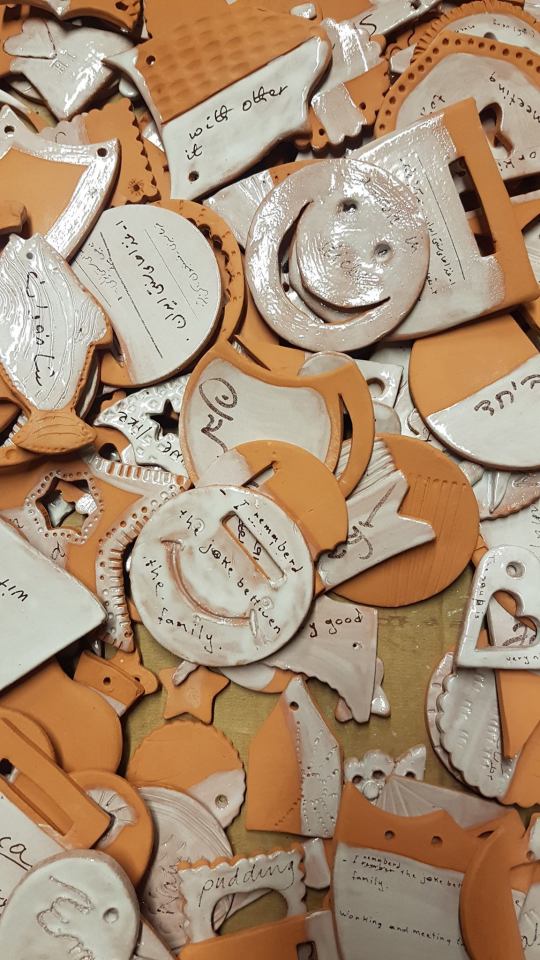
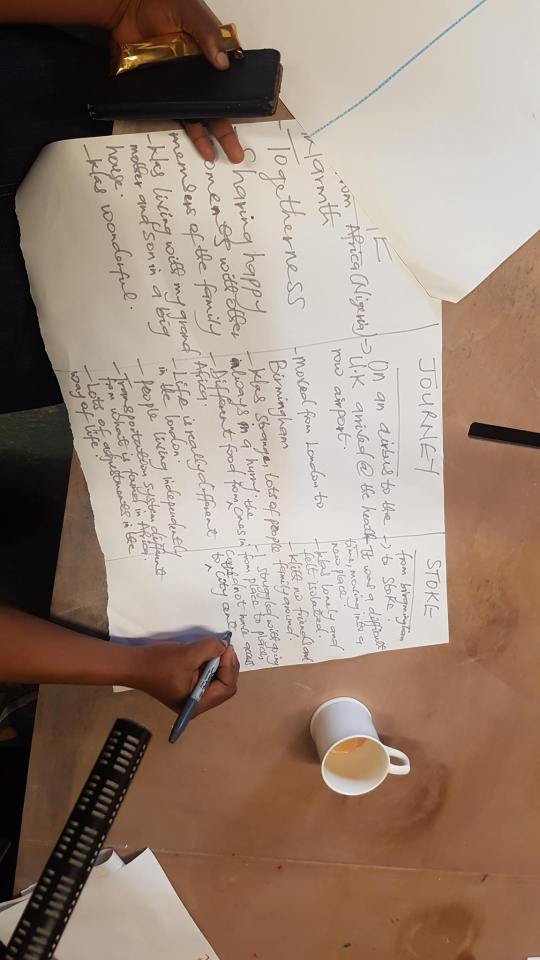

#britishceramicsbiennial#aitp#artistintrainingprogramme#participatoryarts#clay#ceramics#refugeetales#worldinonecity
0 notes
Text
Artist In Training Programme ‘World In One City’
Week six of World In One City was a very relaxing and calm session. We started the day by creating tea caddies and tea strainers with Joanne Ayre. Joanne started the session off with a discussion about teas, and we shared stories and talked about how significant and familiar a cup of tea is in so many cultures. The group seemed to be easing into their new community, whilst learning new ceramic and creative skills. A really lovely way to start a session. After eating lunch and drinking tea, artist Eleanor Sims began a badge making activity. We created name badges using various media and techniques; metal, ribbon, stamping, stitching. It was great for the group to learn a mixture of new skills, whilst creating something they can wear with pride. The group members who couldn't be at the sessions didn't miss out as the participants created badges for those who couldn't be there. This was a warm-up activity to prepare the group for creating their medals the following week which are inspired by the medals given to the Belgian refugees during World War One. "Today was amazing, I love it! We learn new things every week!" said Ahmad. Group leader Dianne, described the session as therapeutic. This session was really productive and it was lovely to see the participants feeling a sense of wellbeing and empowerment through the many creative processes learnt.
Alice Thatcher, Artist in Training
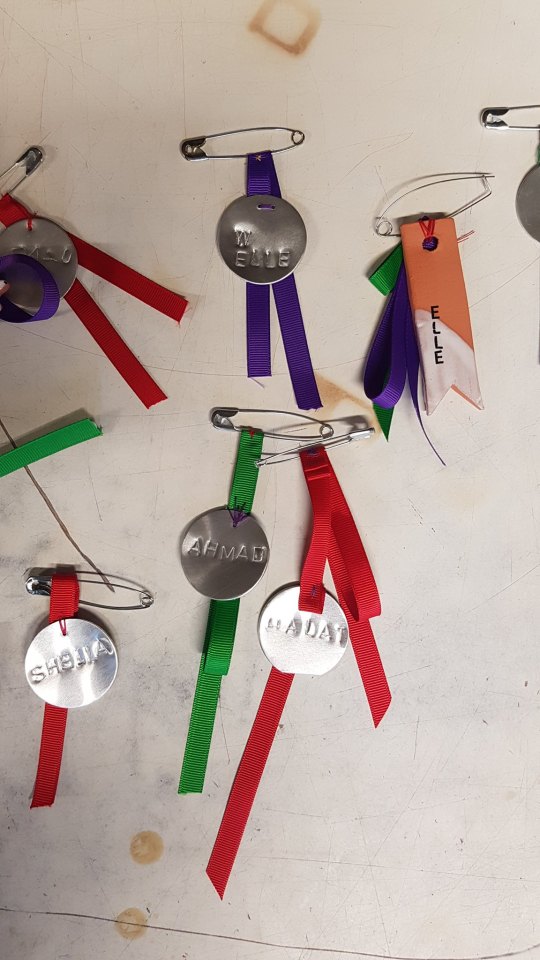
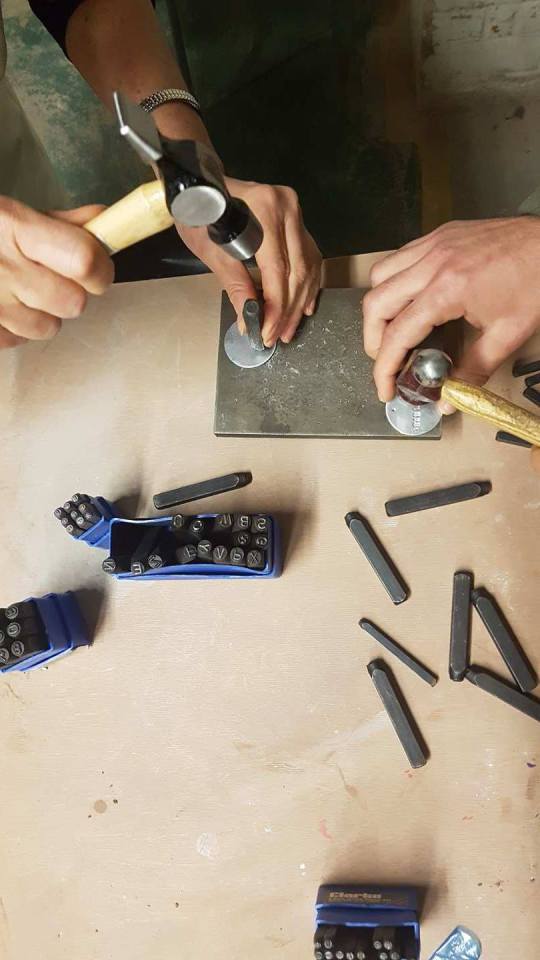
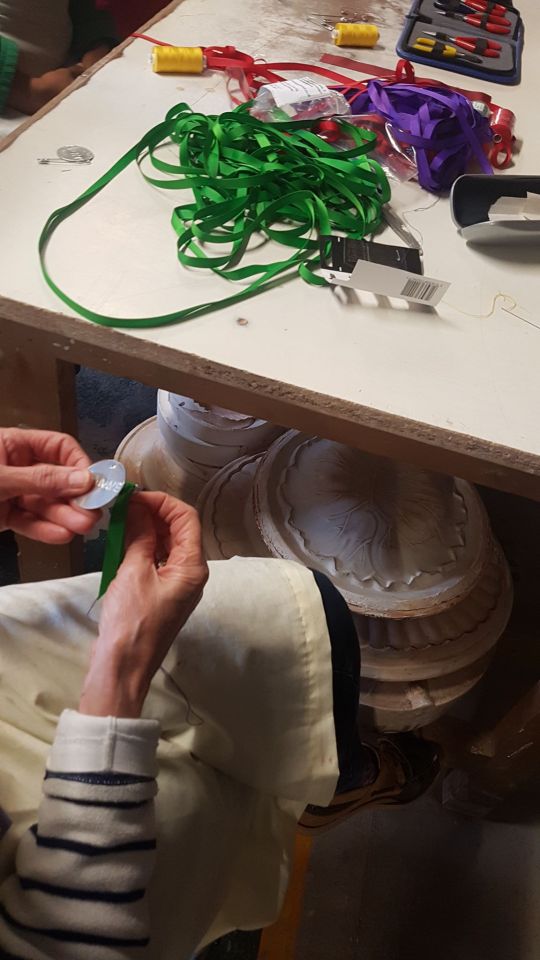
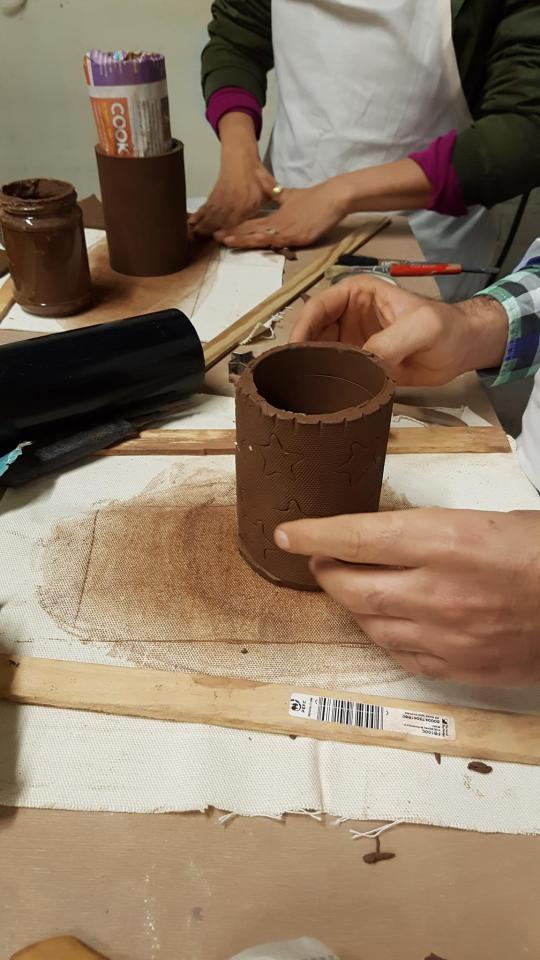
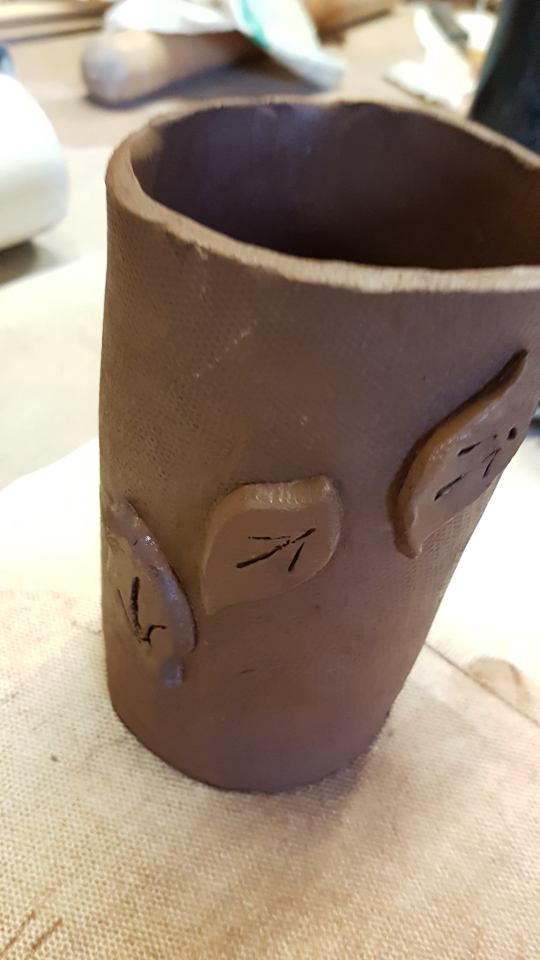
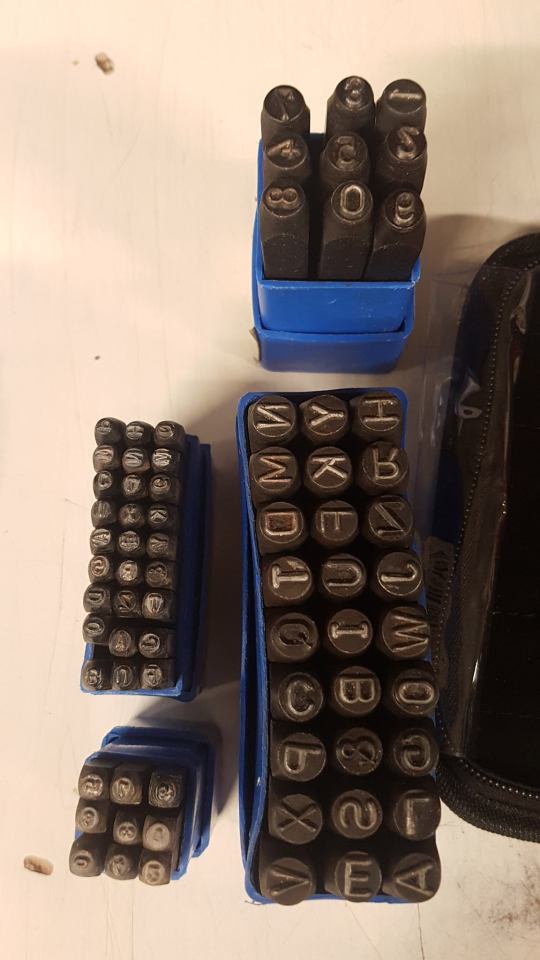
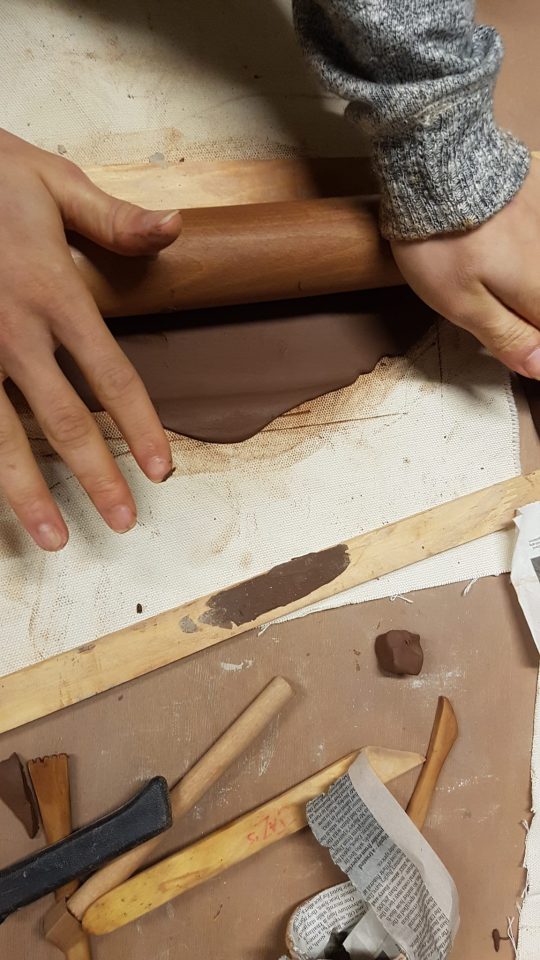
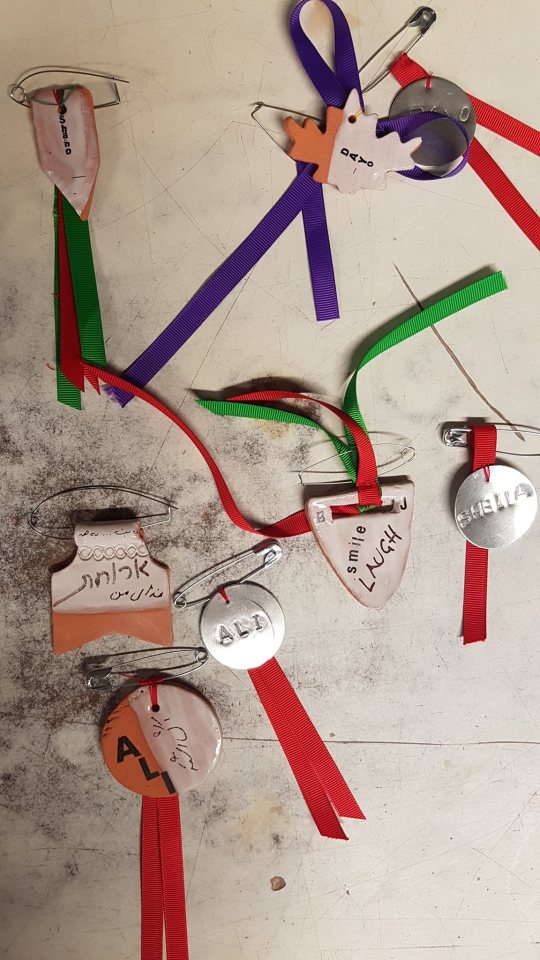
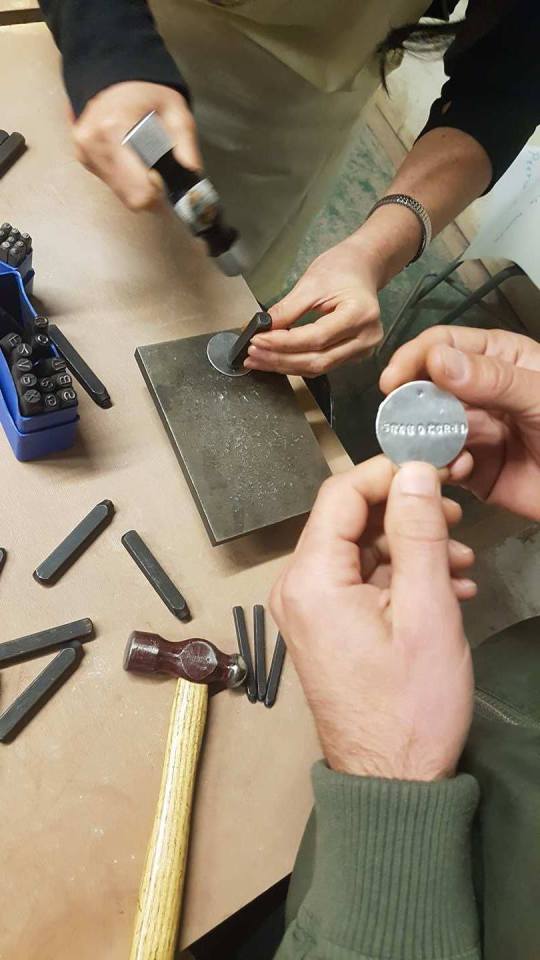
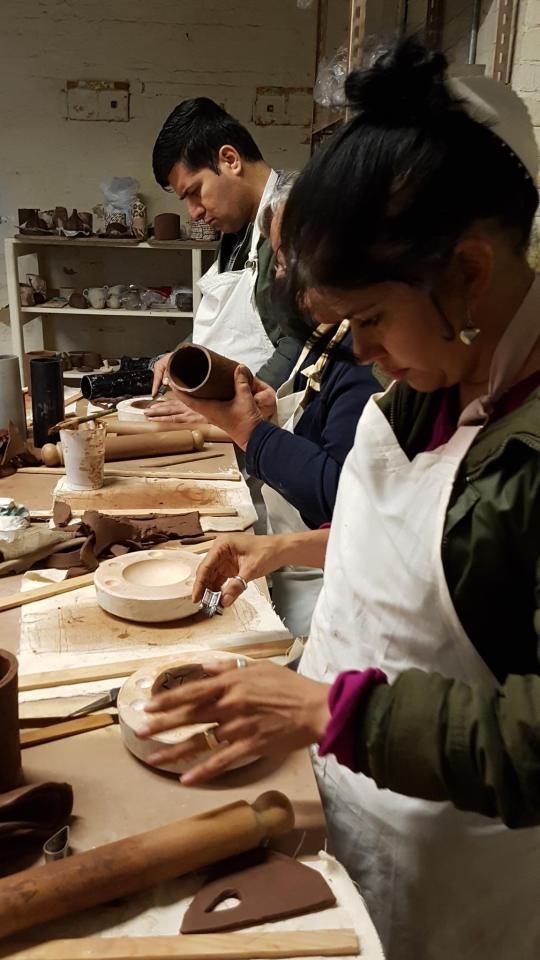
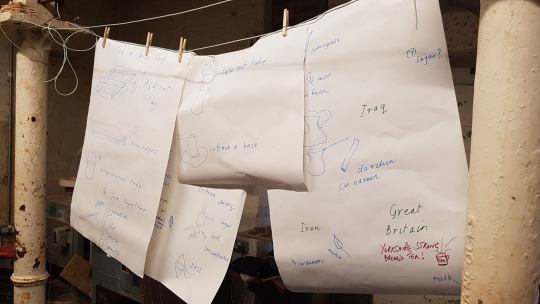
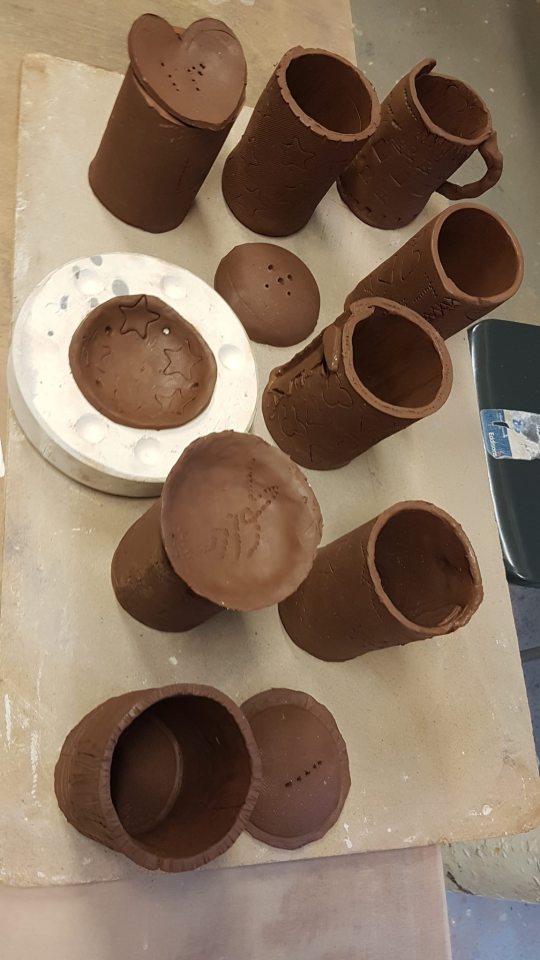
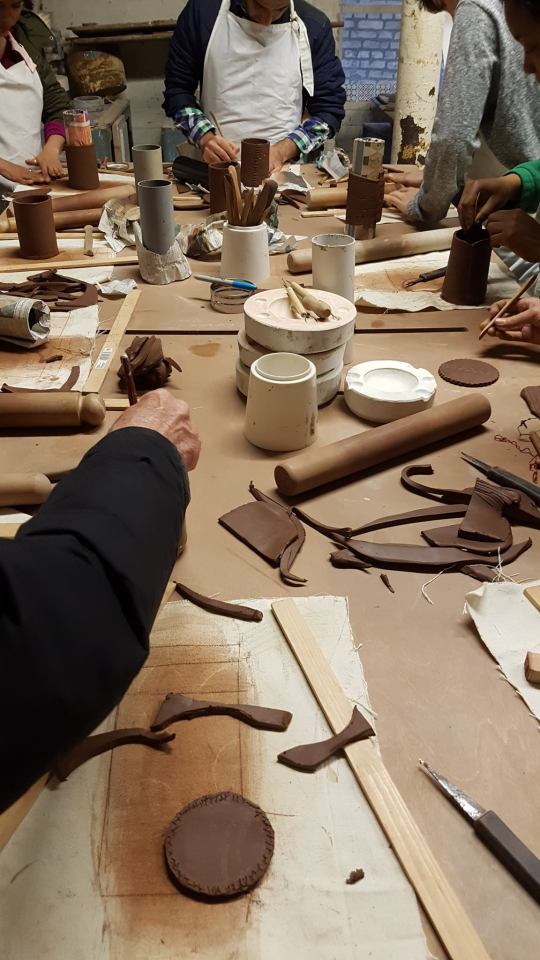
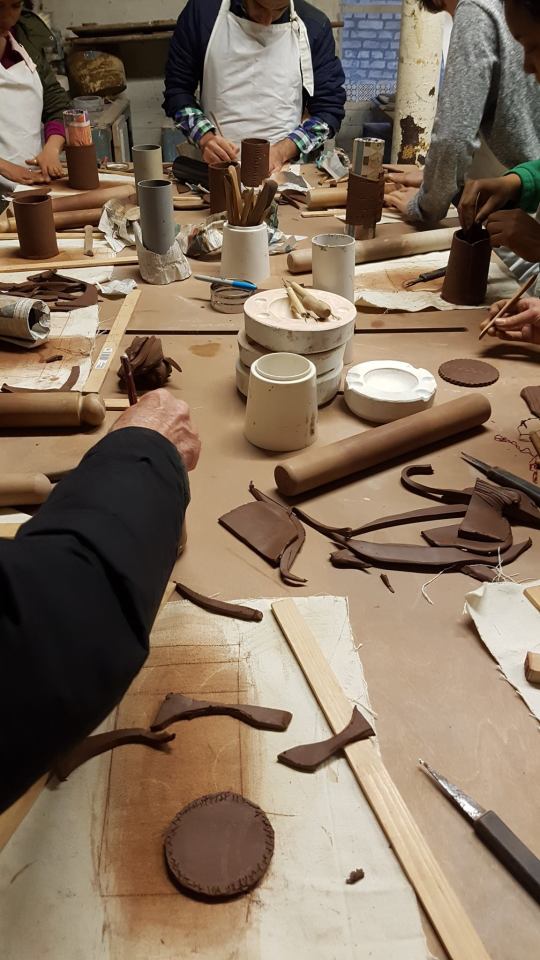
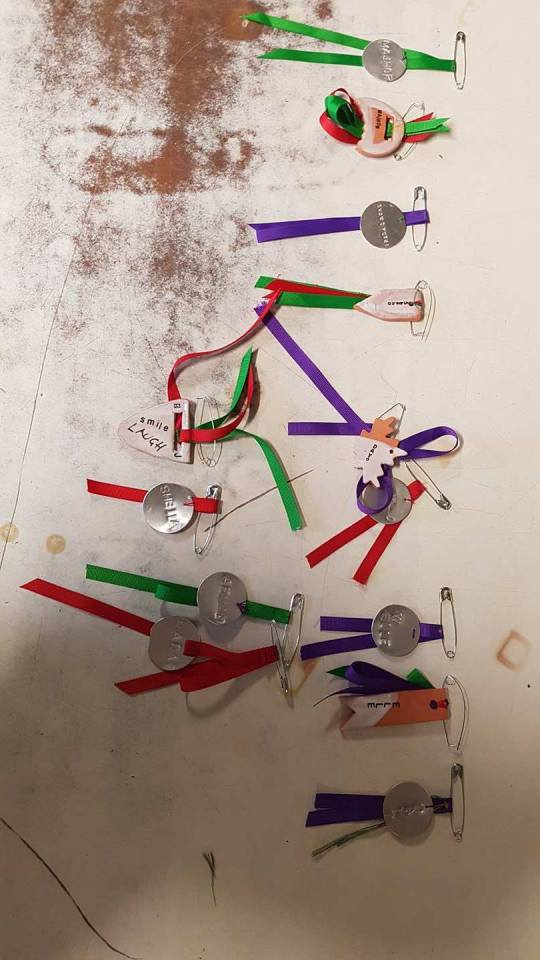
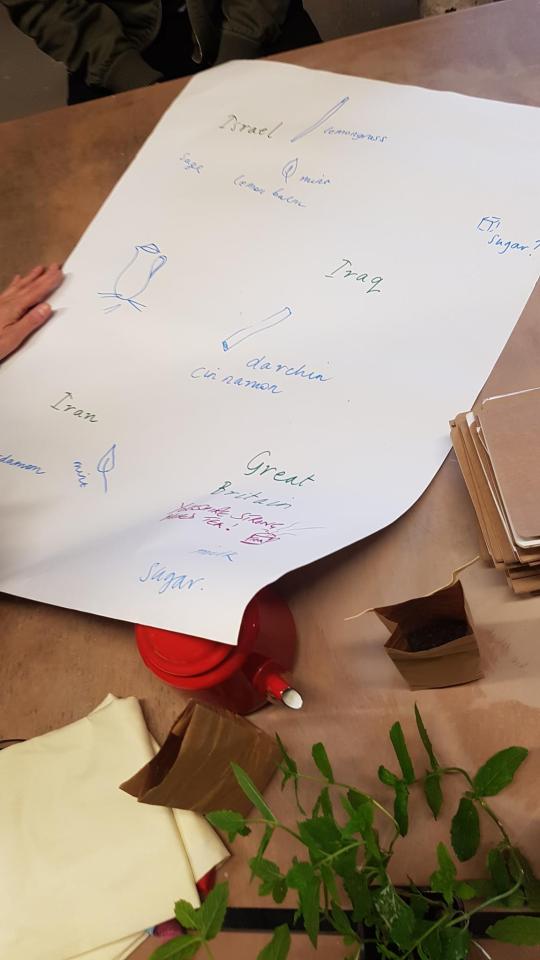
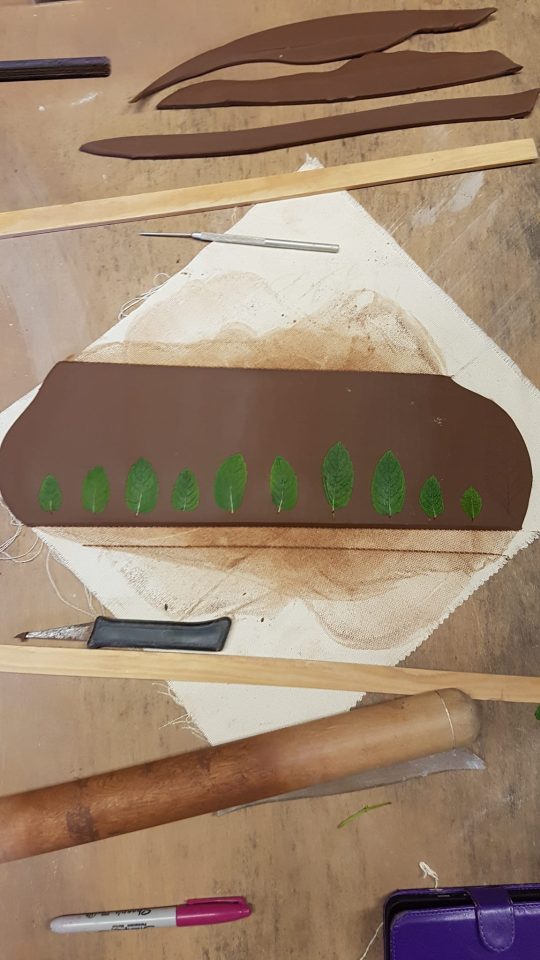
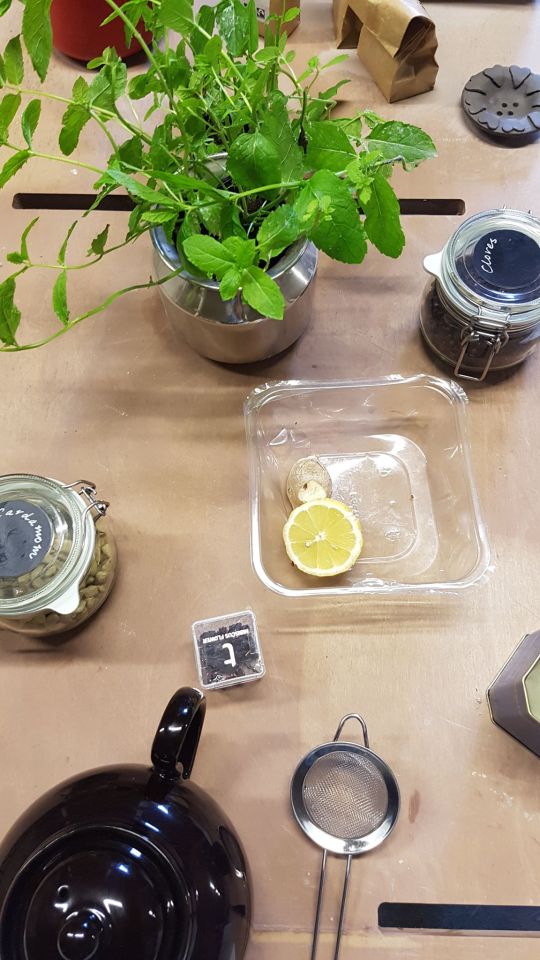
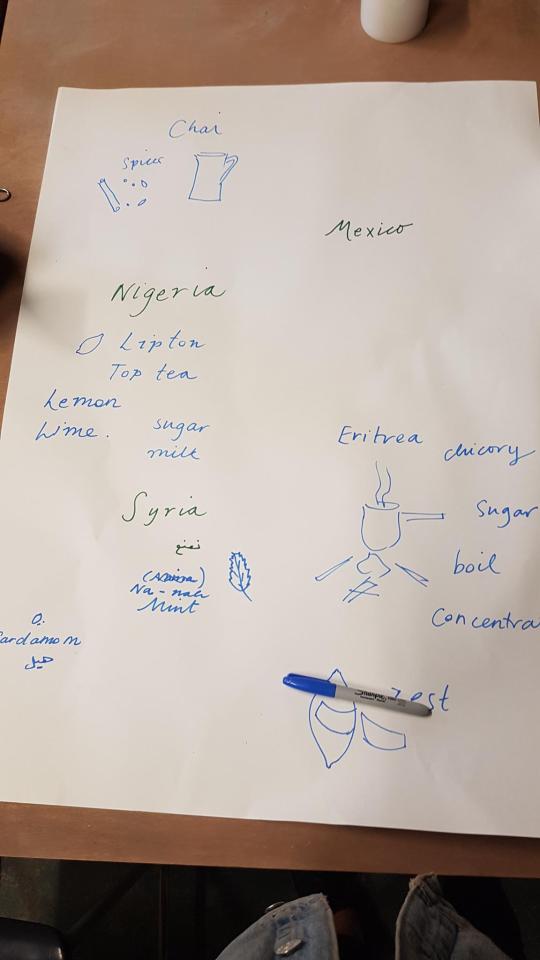
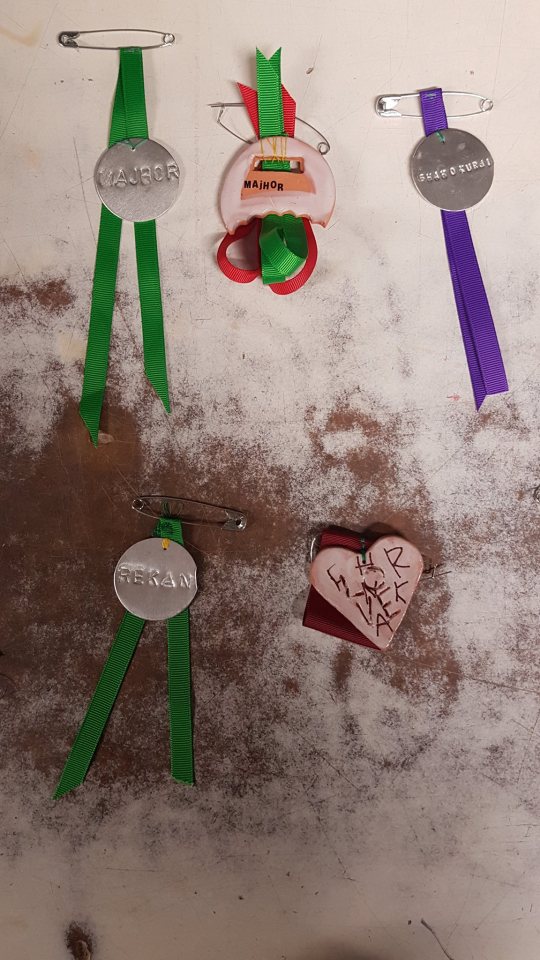

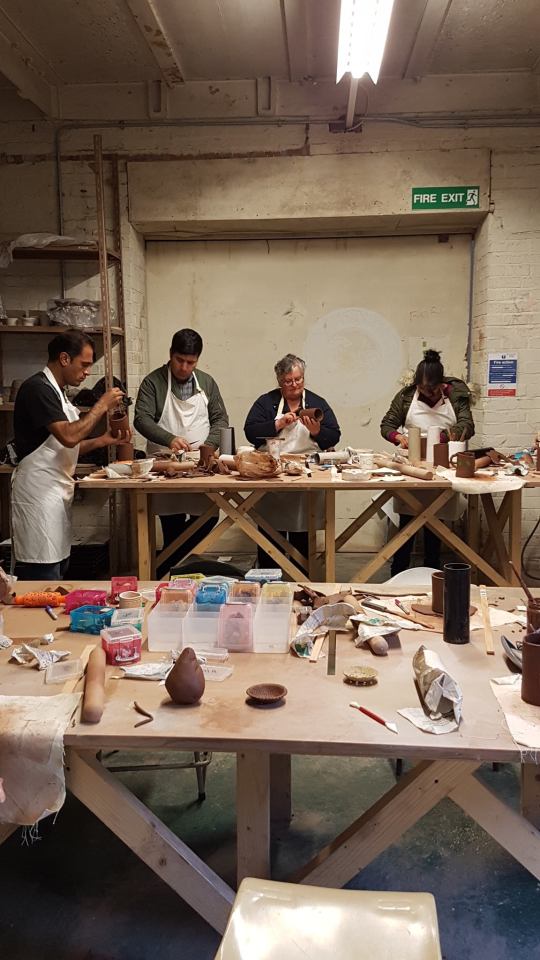
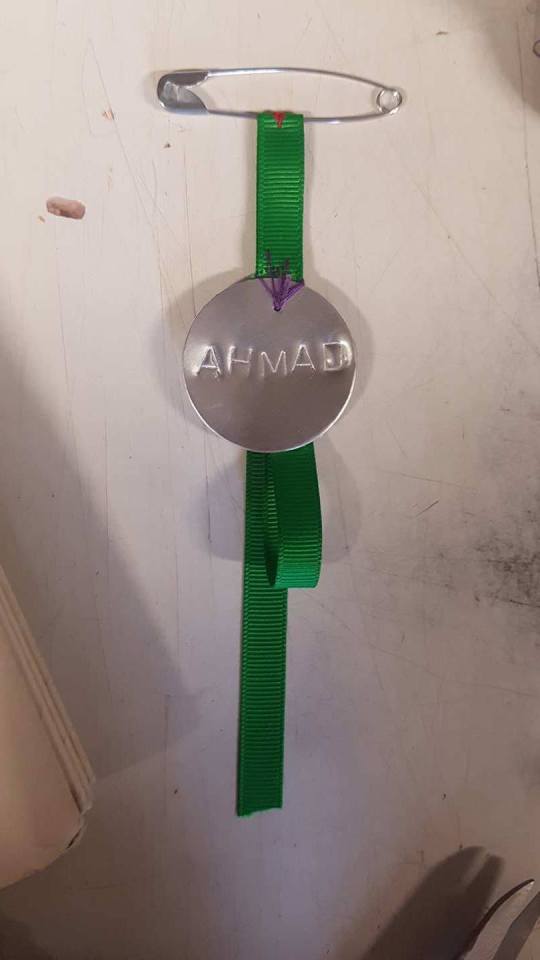

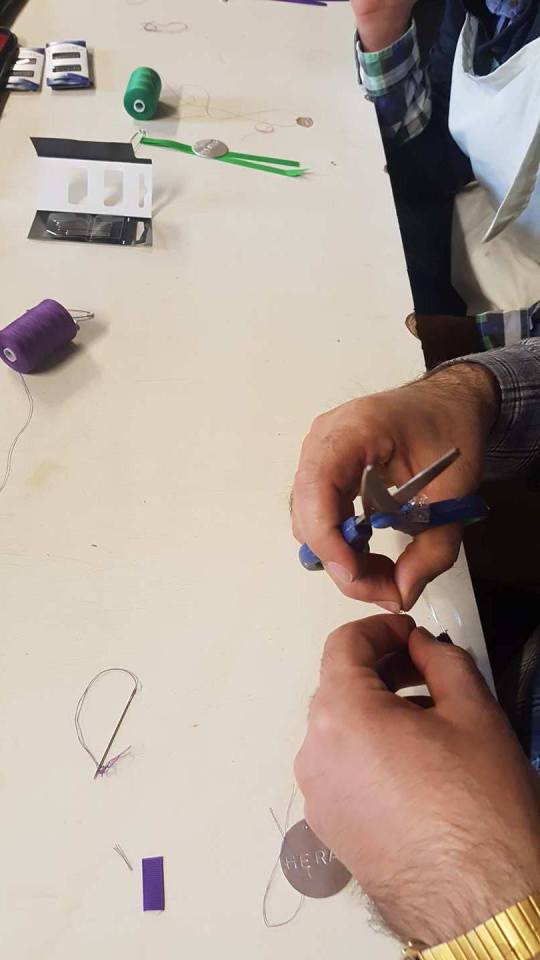
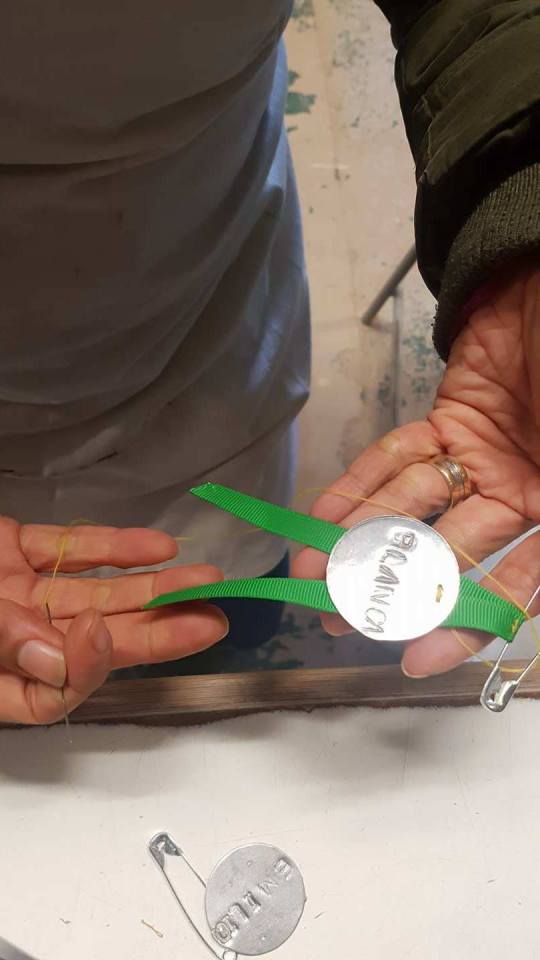
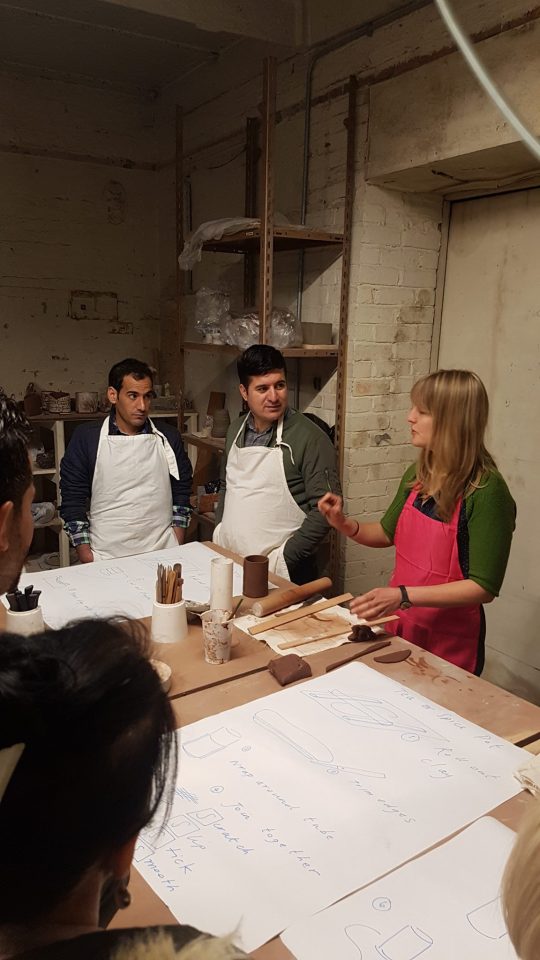
0 notes
Text
Artist in Training Programme ‘World In One City’
Week four of ‘World In One City’ was a very relaxed and reflective session. Joanne Ayre invited past participants to join in on the workshop, this seemed to help the new group settle in, with many familiar faces, the session had a real sense of community spirit. Using old magazines, we asked the participants to choose images which they related to, whether that be images which reminded them of home, or images which inspired them. The images were used in a large scale collage. This collage informed the pieces we later created during the session. “I love being here. I gain lots of skills and I feel a sense of wellbeing” said Dayo. We created plates, bowls, dishes and spoons, and glazed the work created the week before. With so many participants, the session was really productive. The group described the session as relaxing, welcoming and calm.
Alice Thatcher, Artist in Training
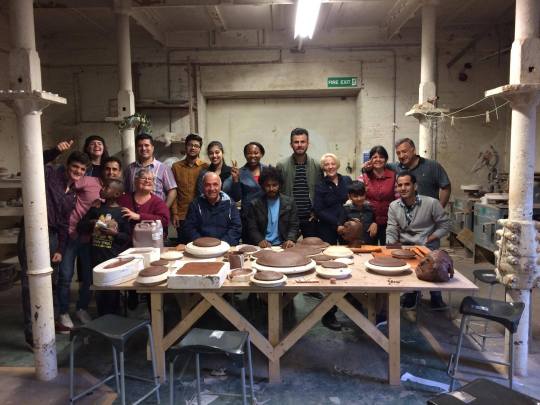
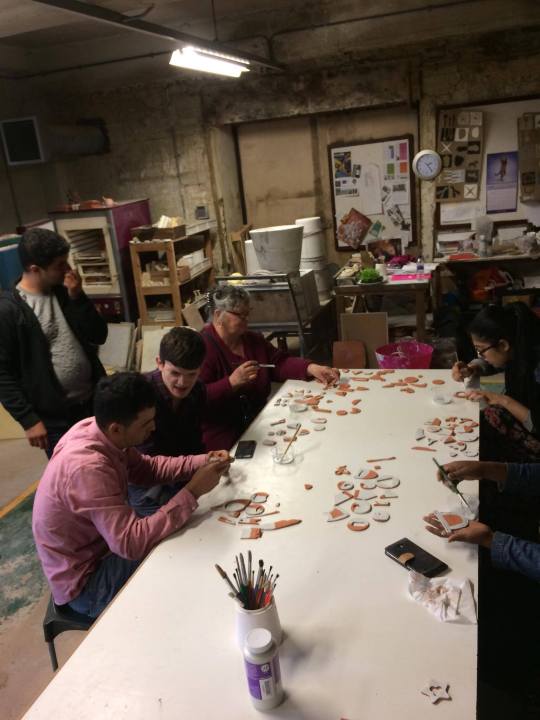
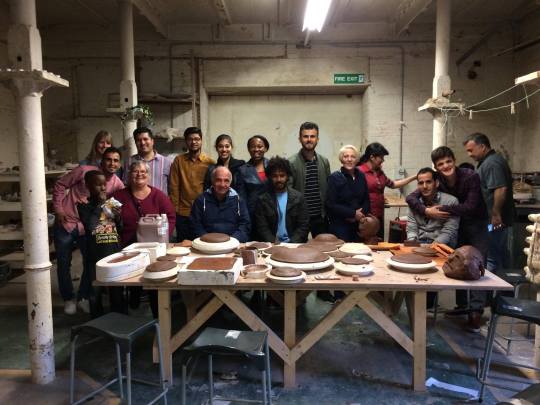
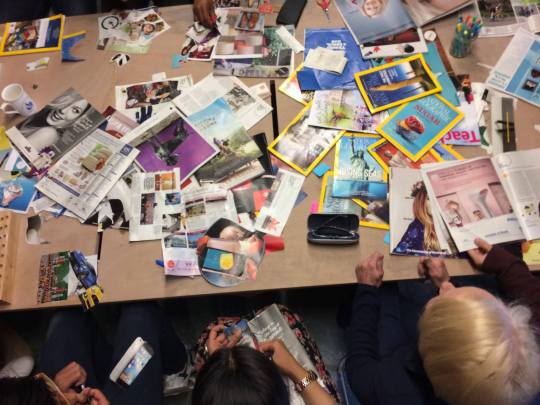

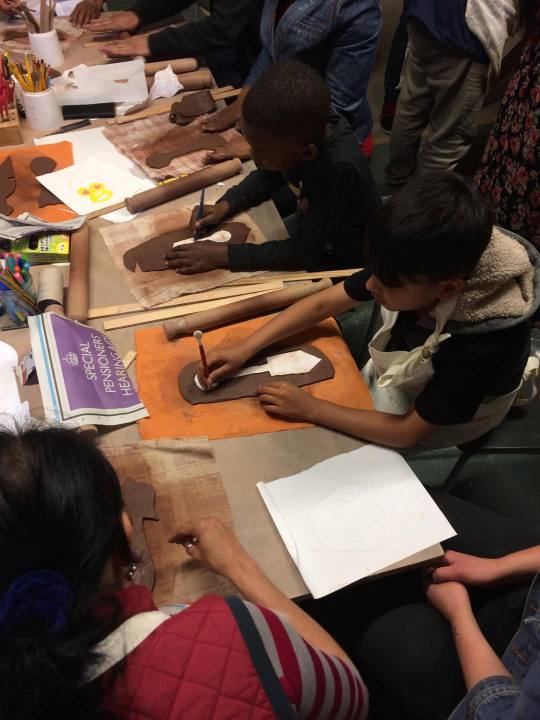
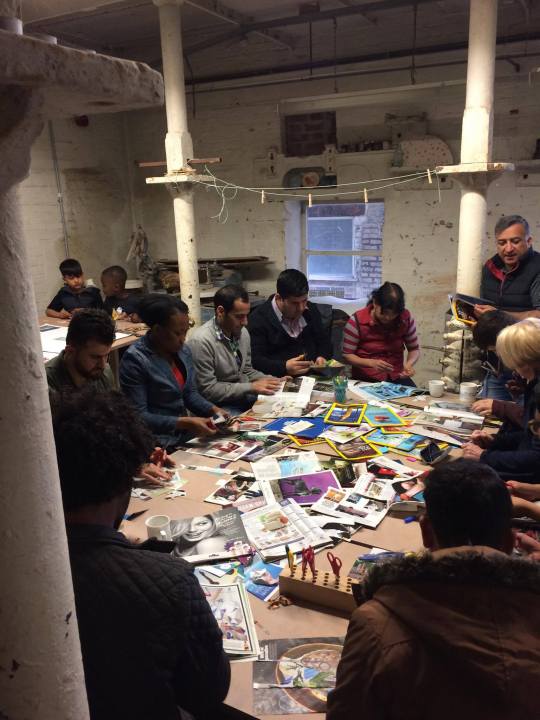
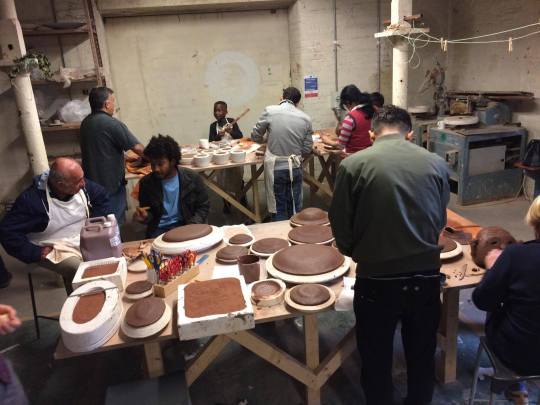
0 notes
Text
Artist In Training Programme ‘World In One City’
Week two and three of the second ‘World In One City’ block were led by artist Steve Dixon. Steve’s work comments on contemporary issues ranging from the Iraq war to colonialism and the banking crisis. With the participants, Steve designed crests based on the heritage, history and their experiences of the group’s new city. During the second session, the participants designed their crests using pen and paper, the motifs included symbolism that the group researched and designed. The images were transferred on to ceramic decal paper using a printer, then onto mugs. The mugs will be used in their sessions each week, this will connect the participants to their new community, giving them a sense of pride and belonging. The feedback from the participants was fantastic. The group described the second session as amazing, with great experiments and transformations. they found the task pleasantly challenging and they loved to express themselves freely. During the third session, led by artist Eleanor Sims, the group used terracotta clay to create low relief badges, also inspired by crests. These mixed-media creations will eventually be exhibited at the British Ceramics Biennial. The group really enjoyed this session. They seemed really calm whilst using clay and enjoyed the repetition. The participants reflect of their sessions weekly by giving us 5 words. Ahmad chose the word love. “I chose the word love because the word is for everyone. It is perfect! We worked together and shared ideas. This is great motivation, we kept on going.” said Ahmad. It was fantastic to see the confidence of the group grow throughout the session and creating almost 100 pieces helped to develop their skills. They found the session inspiring, they felt connected, they enjoyed working from memory in a creative way.
Alice Thatcher, Artist in Training
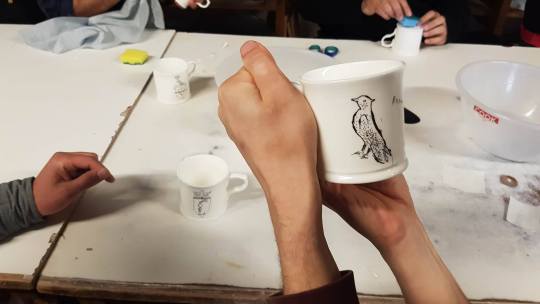
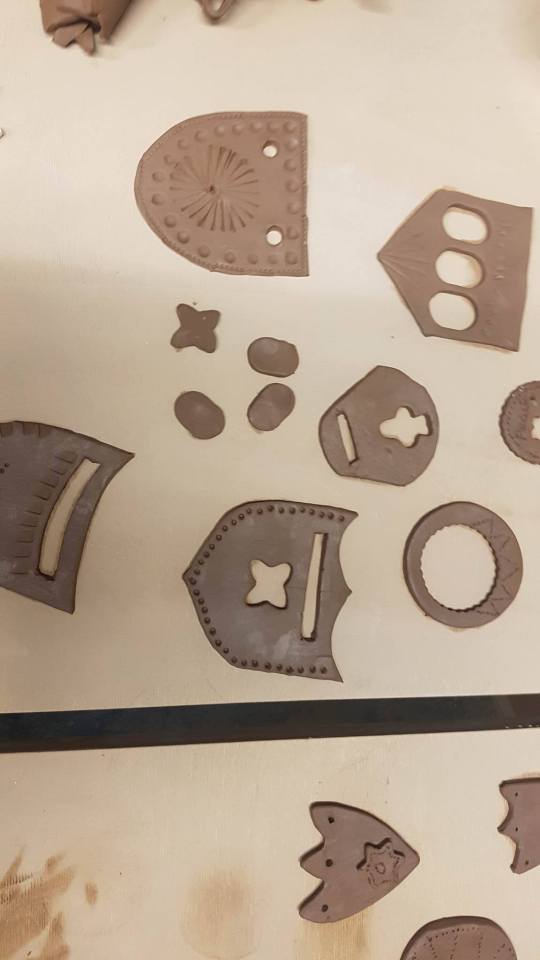
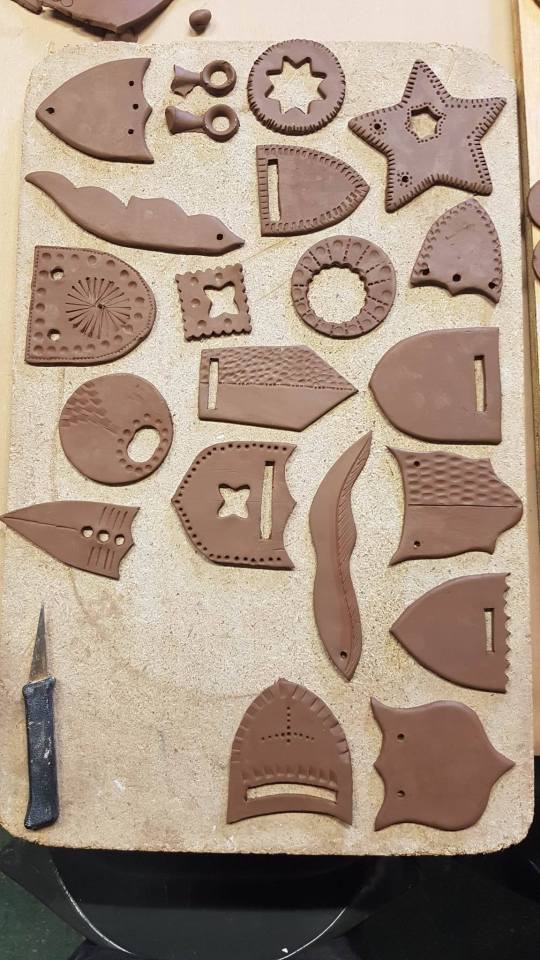
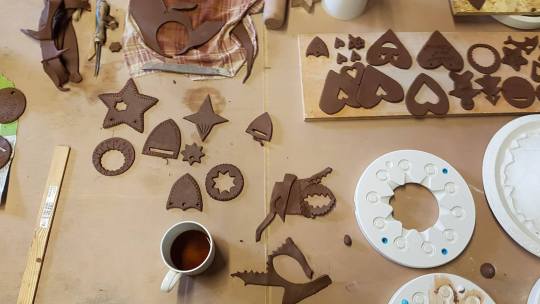
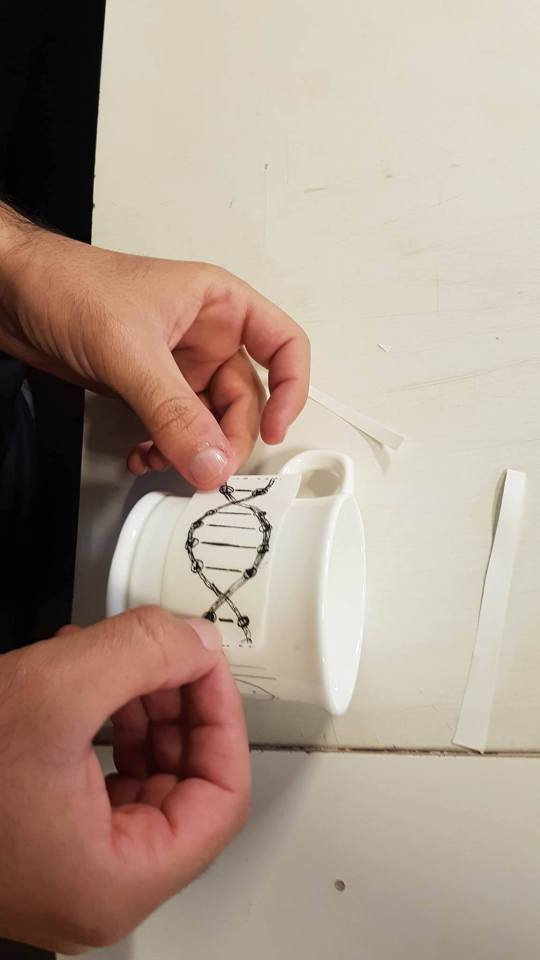
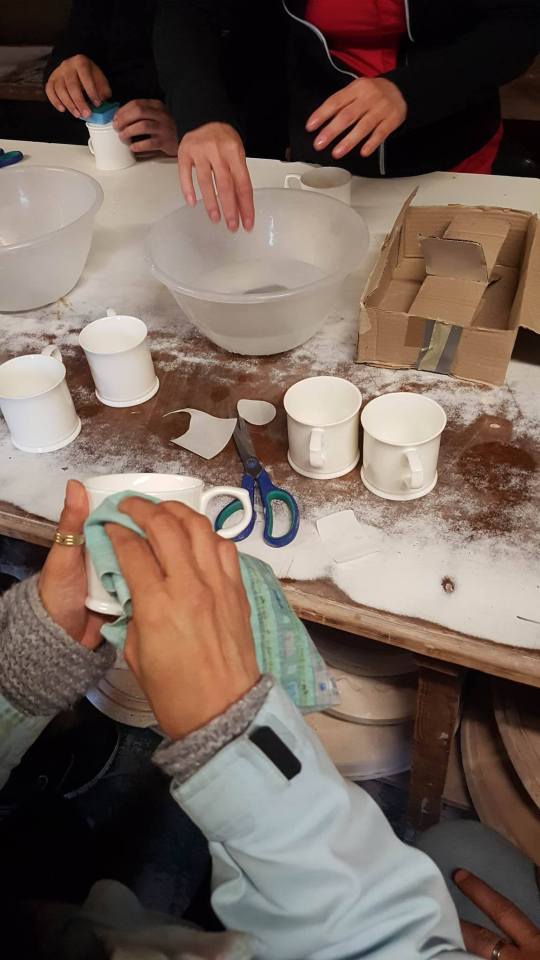
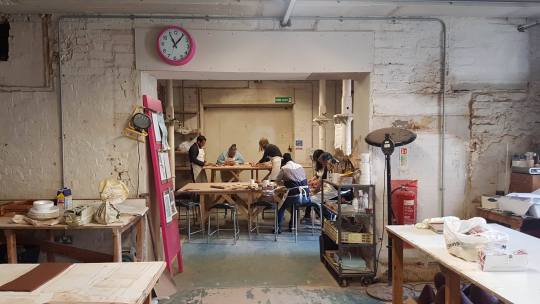
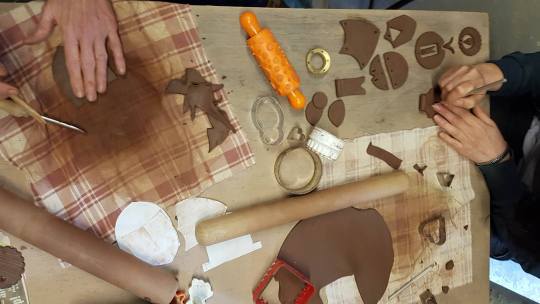


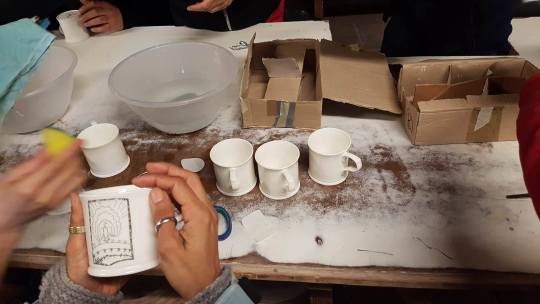
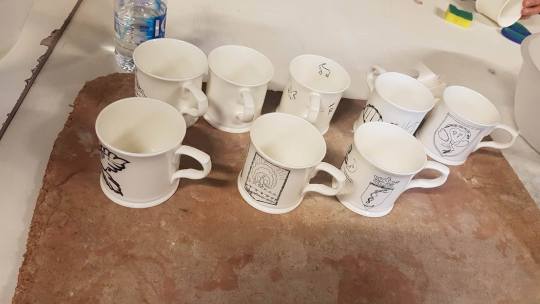

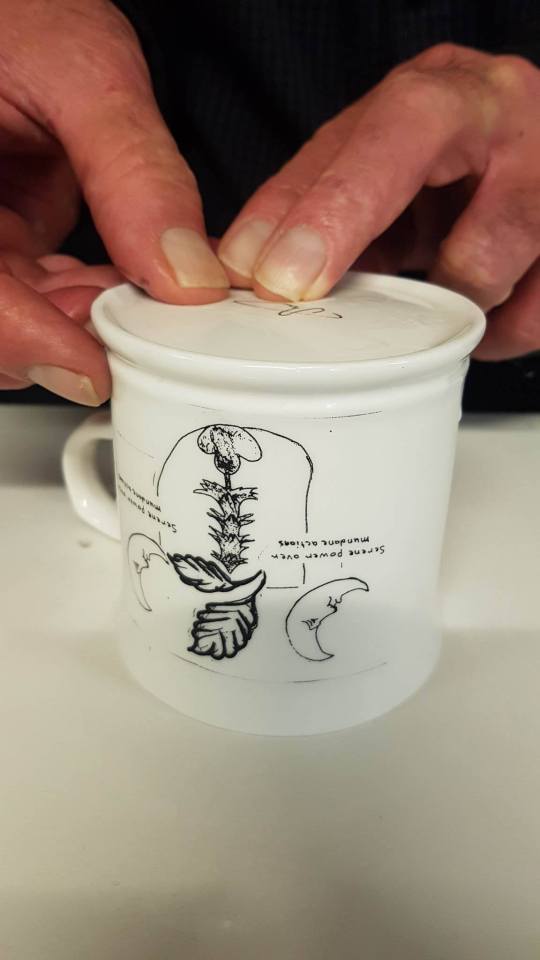
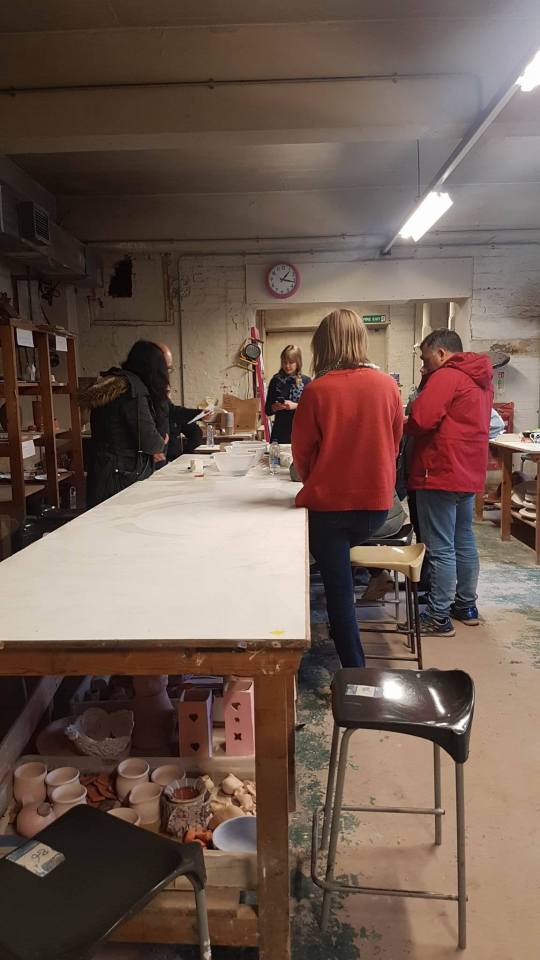
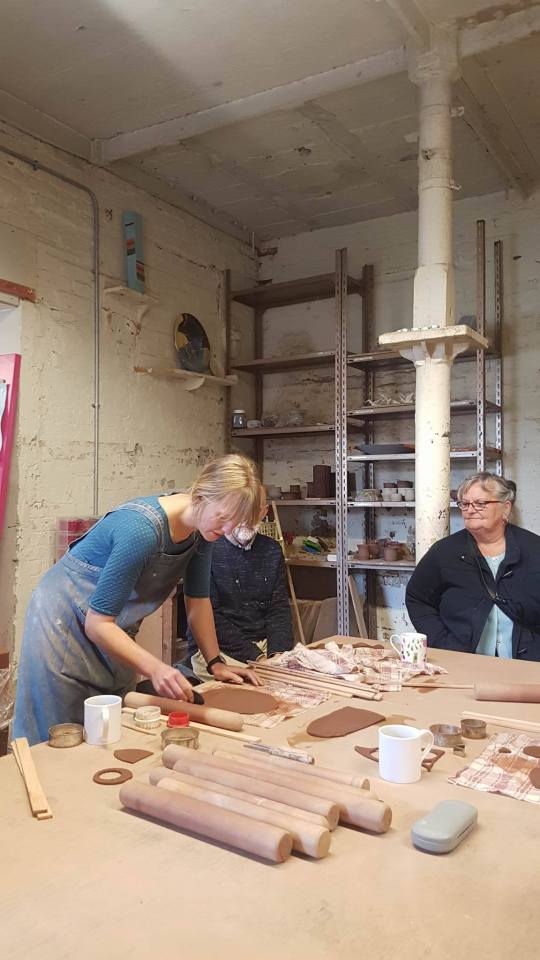
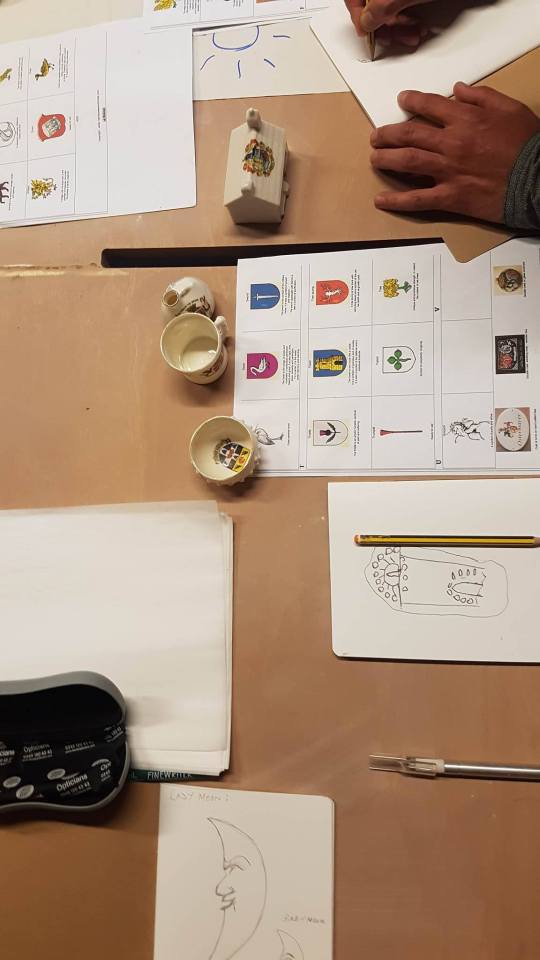
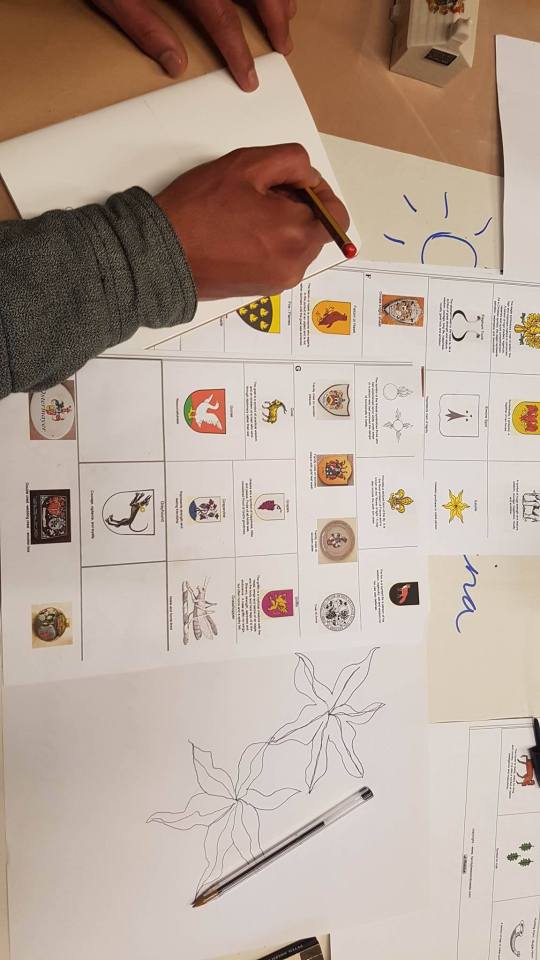
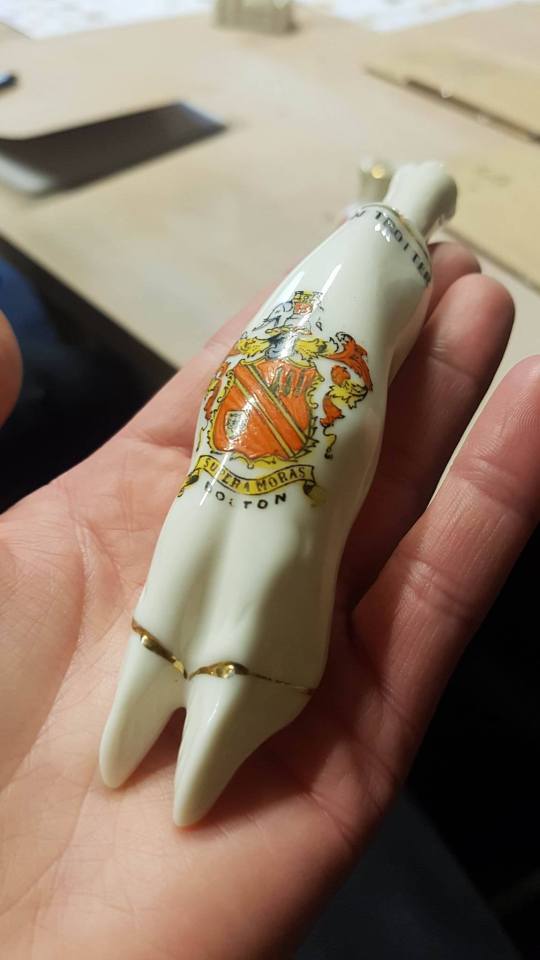
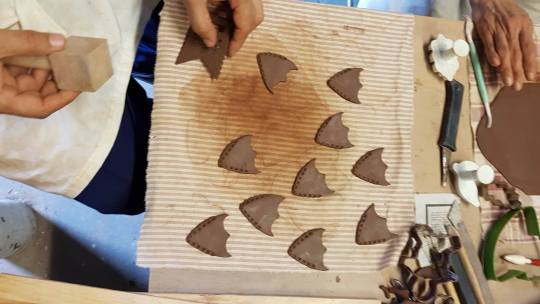
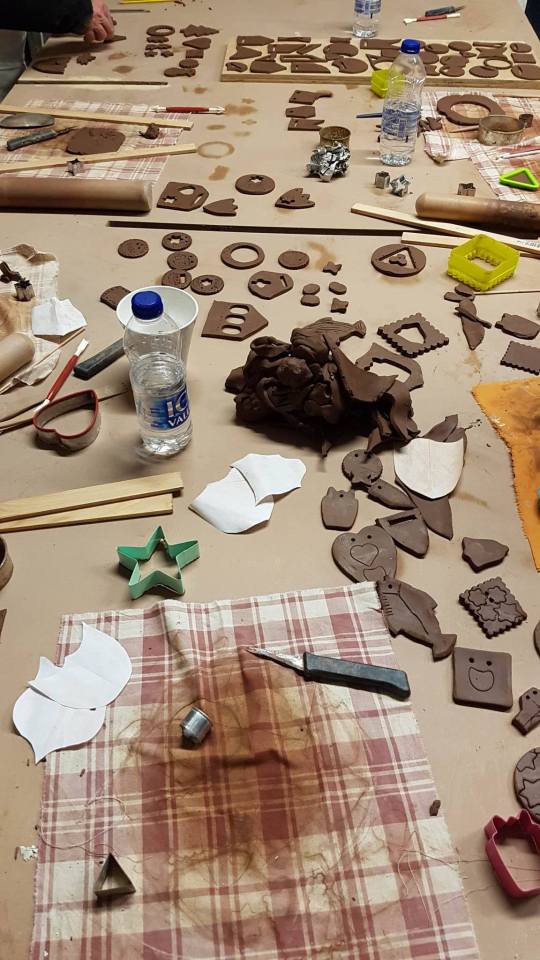
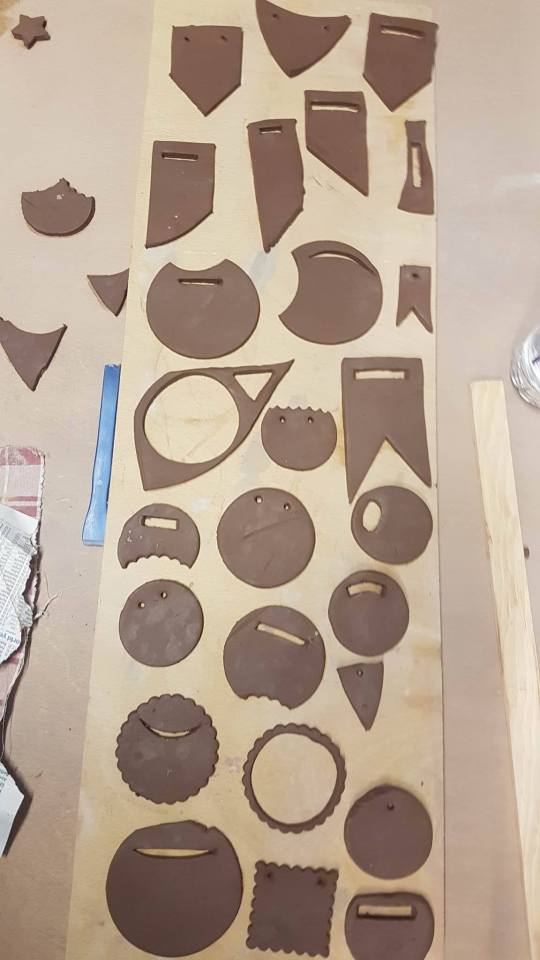
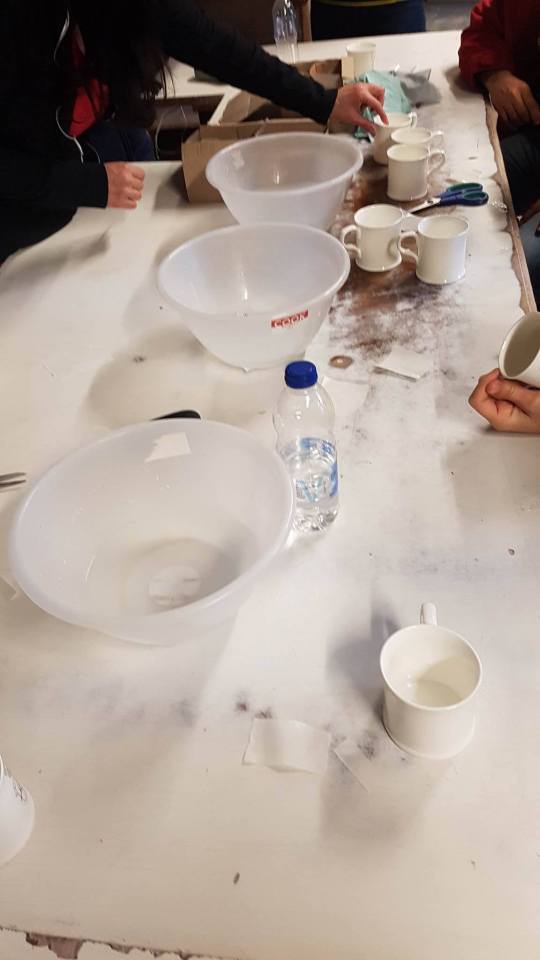
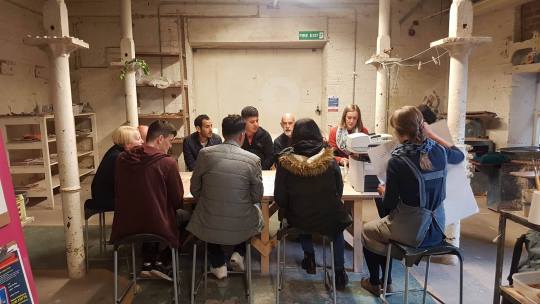
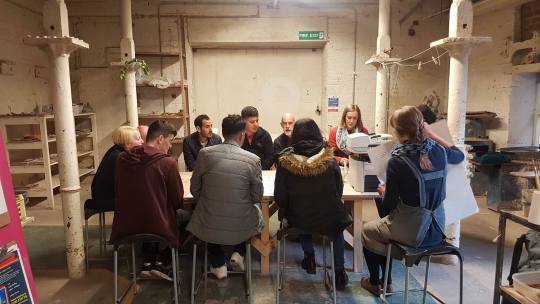
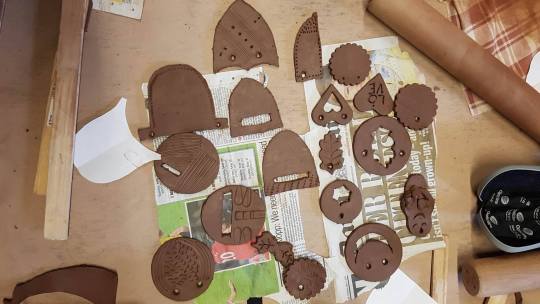
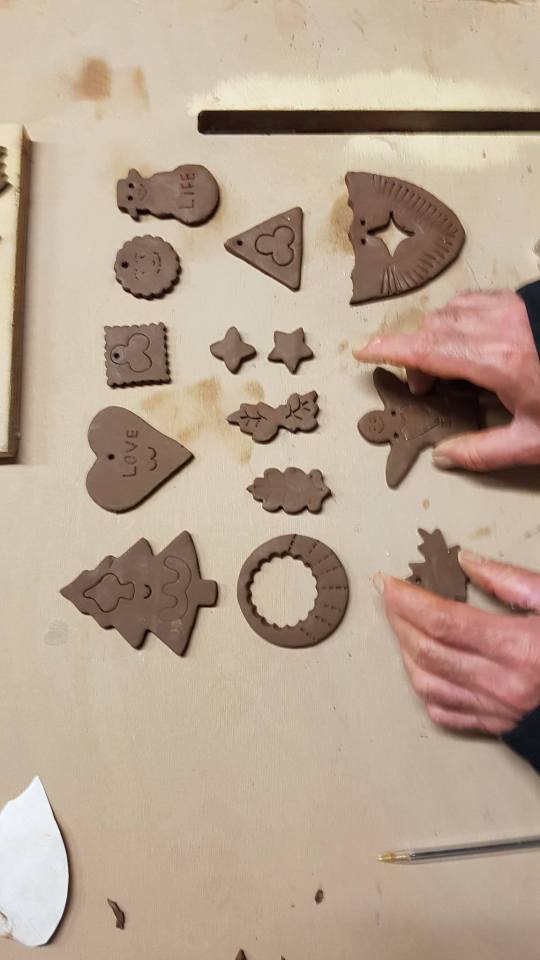
0 notes
Text
Artist In Training Programme ‘World In One City’
At the start of May we welcomed a new group to the BCB studio and Spodeworks ready for our second block of 'World In One City' sessions. We began the session with conversations about food and feasting. We then looked at examples of crests, discussing symbolic images and the culture behind these. Each participant designed their own symbols and sculpted them using clay. This was a great start to the project as the participants could get a feel for the material they will be working with, and the initial conversations helped the group ease in to their new surroundings. After our lunch, which was provided by the 'Bread In Common' team, we took a trip to the Emma Bridgwater factory and had a tour. This is a perfect way for the participants to see a working pottery and learn about the history of Stoke-on-Trent. A really great first session. It was wonderful to see the group settle in, get to know one another and enjoy working with clay! “This is a comfortable and fun place to be!” “Working with clay is really interesting. I like to create what comes from my imagination!”
Alice Thatcher, Artist in Training
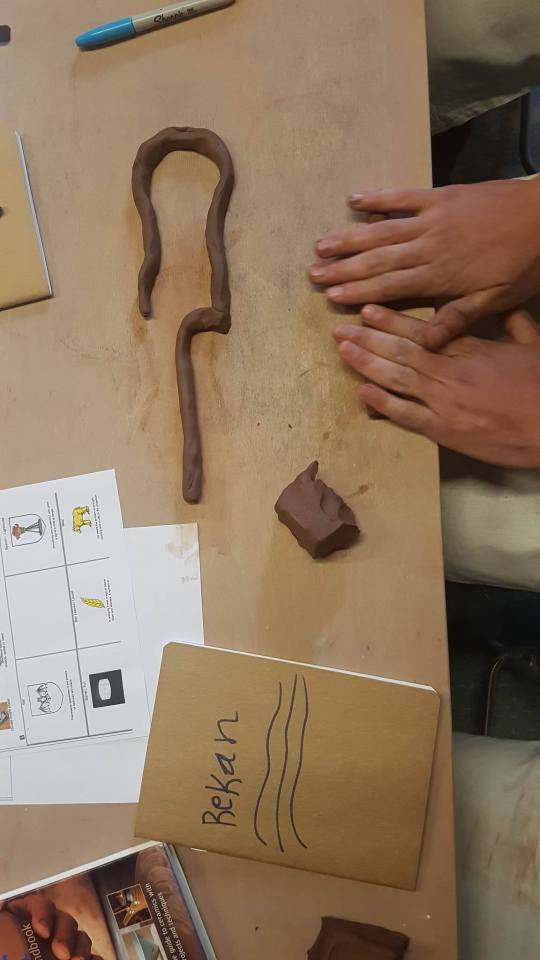
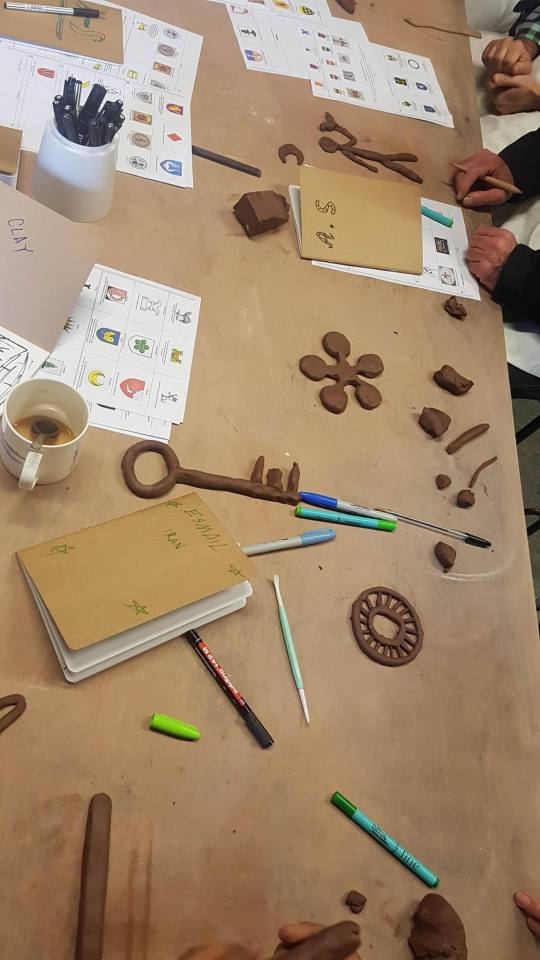
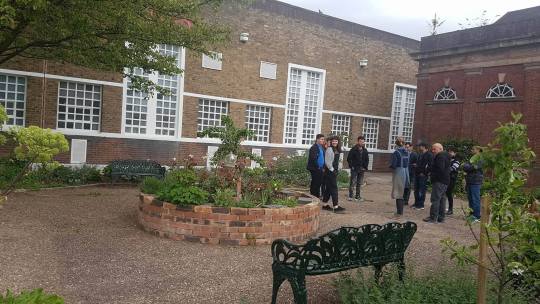
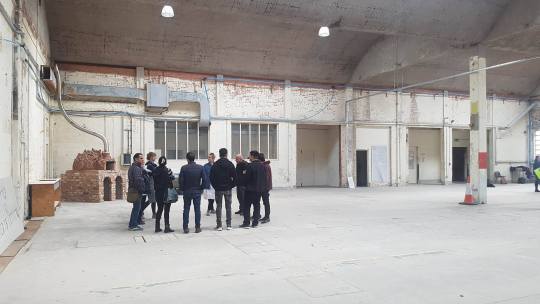

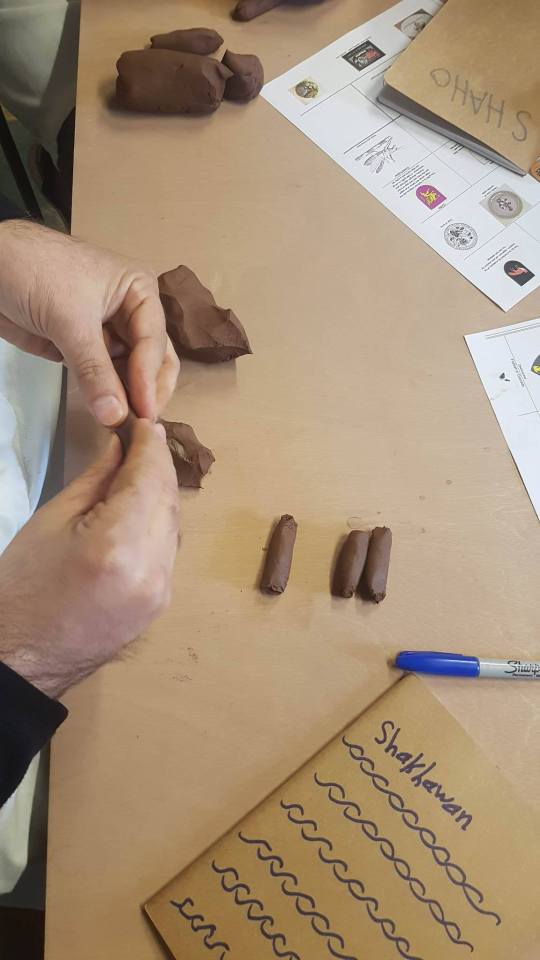
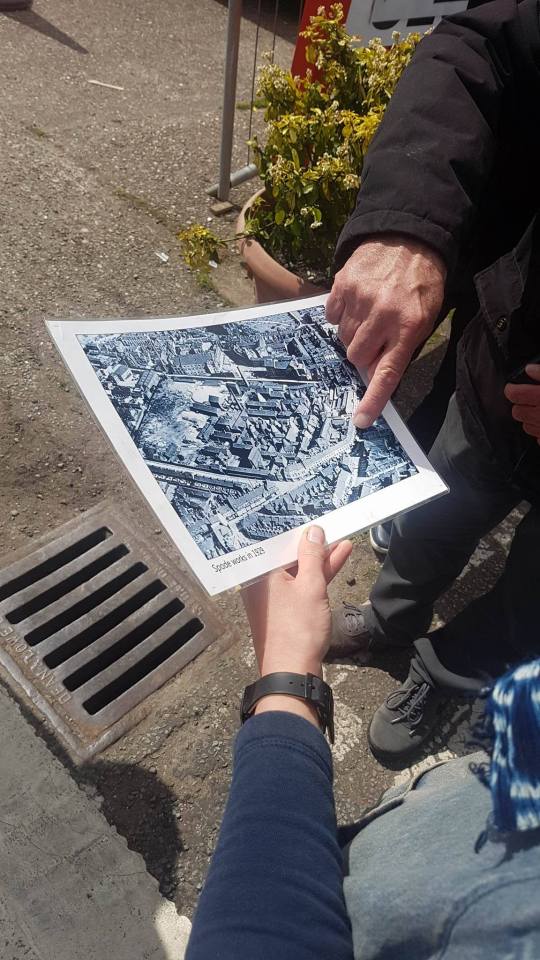
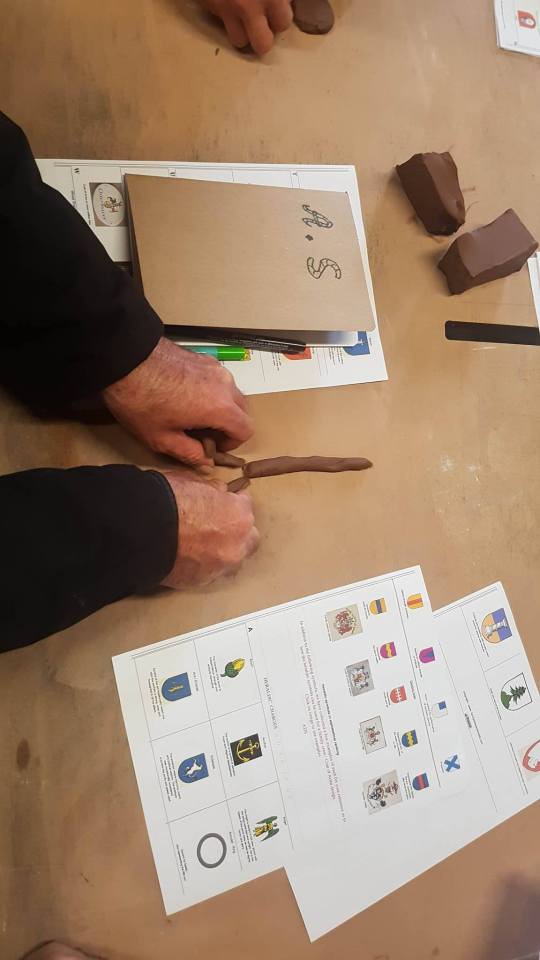
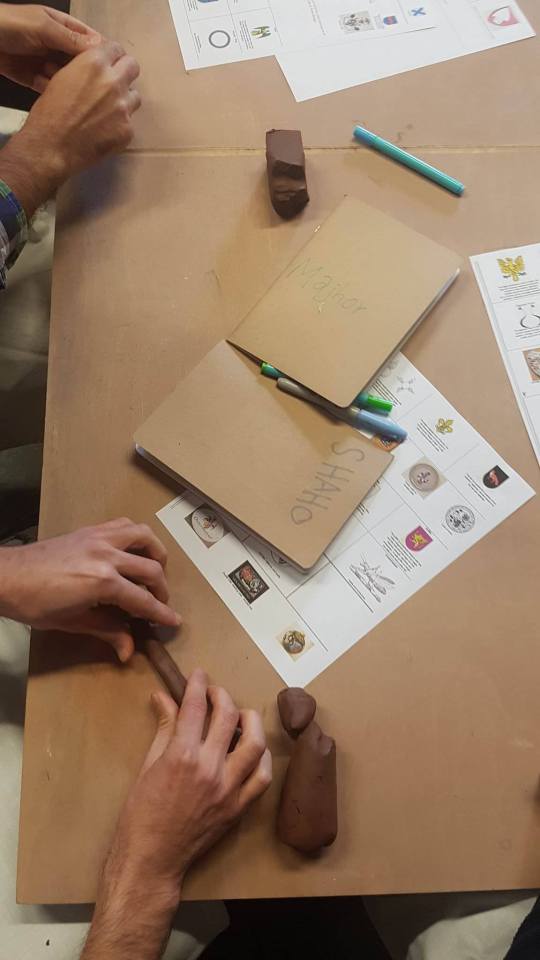
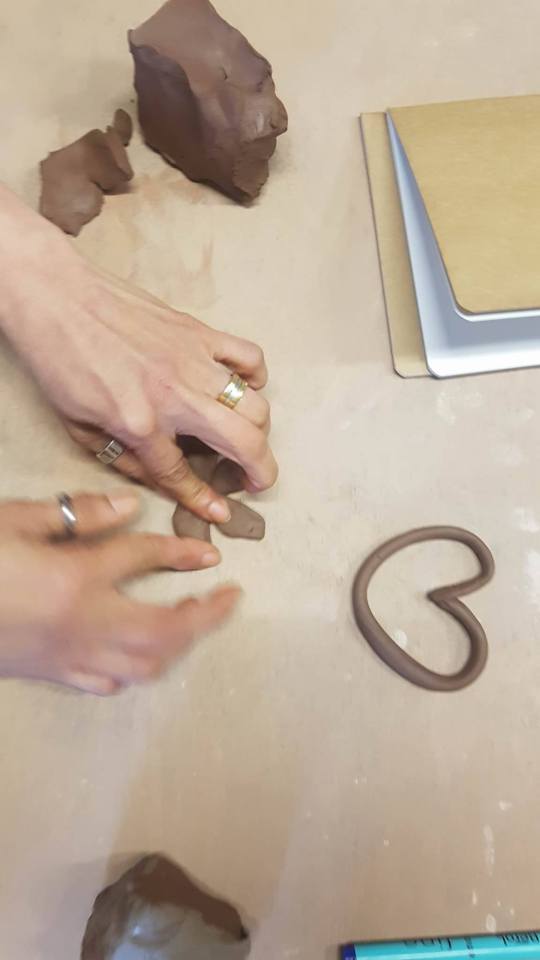

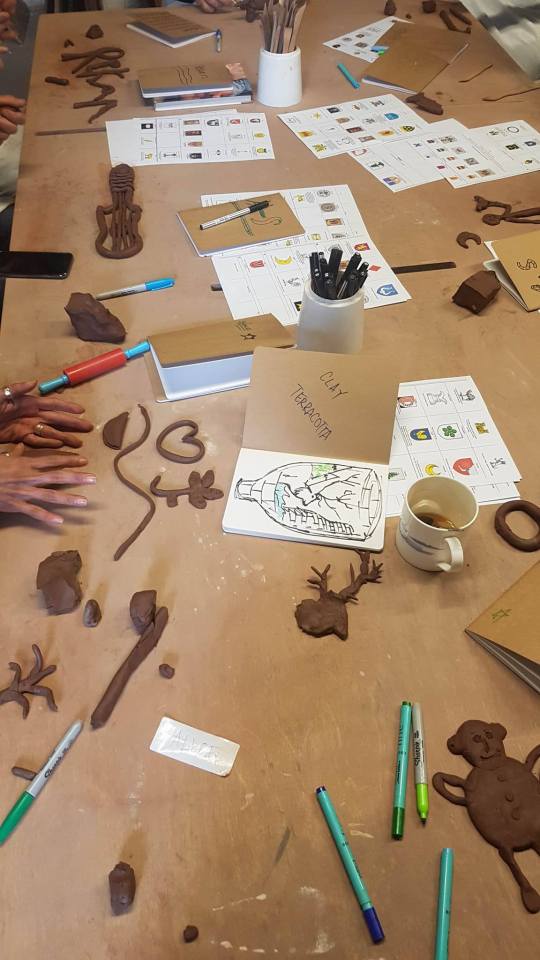
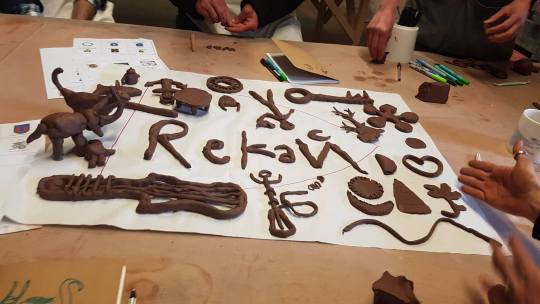

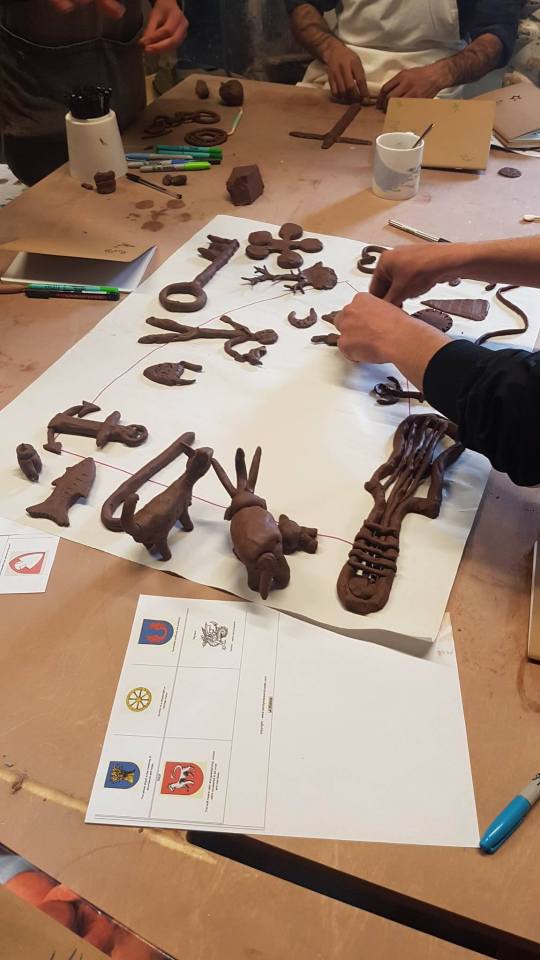
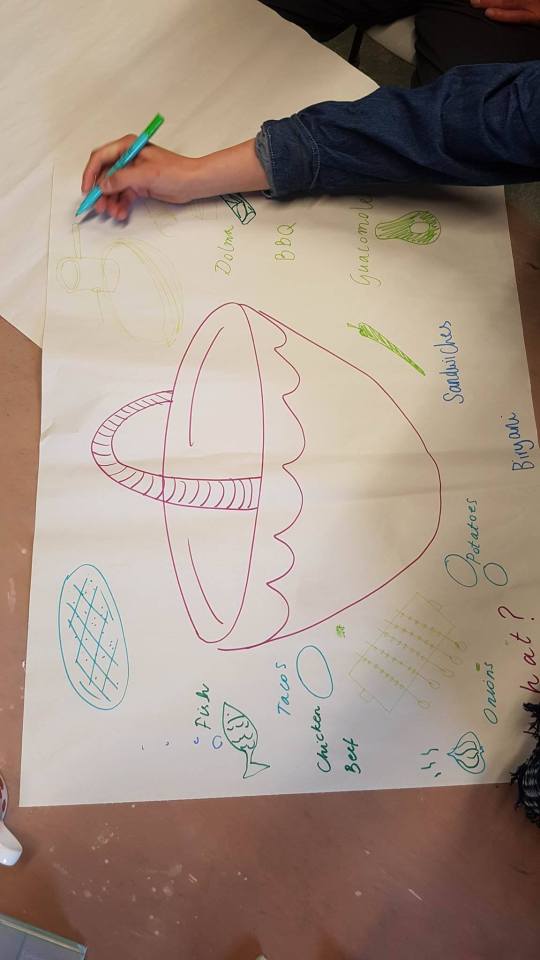
0 notes
Text
Artist In Training Programme ‘World In One City’
Friday 7th April was our final session with the Burslem Jubilee group as part of World In One City with the British Ceramics Biennial. We had a lovely, relaxing session creating a tile table runner with decal transfers. This was a collaborative, team effort. The group worked together in such a concerted way, swapping places, making sure the design was consistent. The final result was fantastic! The participants spent some of the session working in sketchbooks, documenting each week and discussing the development of the project. The group seem to really enjoy working in this way, I can see they have taken real pride in their sketchbooks. Although it is really sad to see the sessions ending, it was great to know the group have enjoyed it so much, and learned a great deal about place, heritage, clay, ceramic process and design. The group have clearly taken ownership of, and feel pride in the work they have created. It is wonderful to hear the participants talk about their work and how they wish to continue to use these skills in the future. Their new skills and knowledge have been valuable in so many ways, particularly for their relationship with the city of Stoke-on-Trent, and their connection to the new place they live in. The highlight of the week was our BBQ in the Spode Rose Garden. Everyone brought a dish each, we also used our oven, created from bricks and clay to cook bread, made by the Bread In Common team. Each week we have shared food, conversation and ideas. This project has been extremely vital in my own professional development, also. I have learned a great deal from working alongside artist Joanne Ayre, as well as working with the participants themselves. An extremely valuable and humbling experience! Each week we have collected 5 words, in a discussion at the end of the sessions, as part of our evaluation:- COMFORTING INSPIRING NEW FRIENDSHIPS WORKED TOGETHER HAPPY CALM EYE-OPENING EDUCATIONAL SURPRISING REFRESHING REFLECTIVE CONFIDENCE INDEPENDENCE LEARNING TALENT SKILLS BELONGING TEAM-WORK SUPPORTIVE WARM UNITY FAMILY UPLIFTING ACHIEVEMENT COMPANIONSHIP CONVERSATION VALUABLE CONNECTION WONDERFUL FANTASTIC DESIGN IDEAS QUALITY CONSIDERATION MATERIAL Alice Thatcher, Artist in Training 19/04/2017
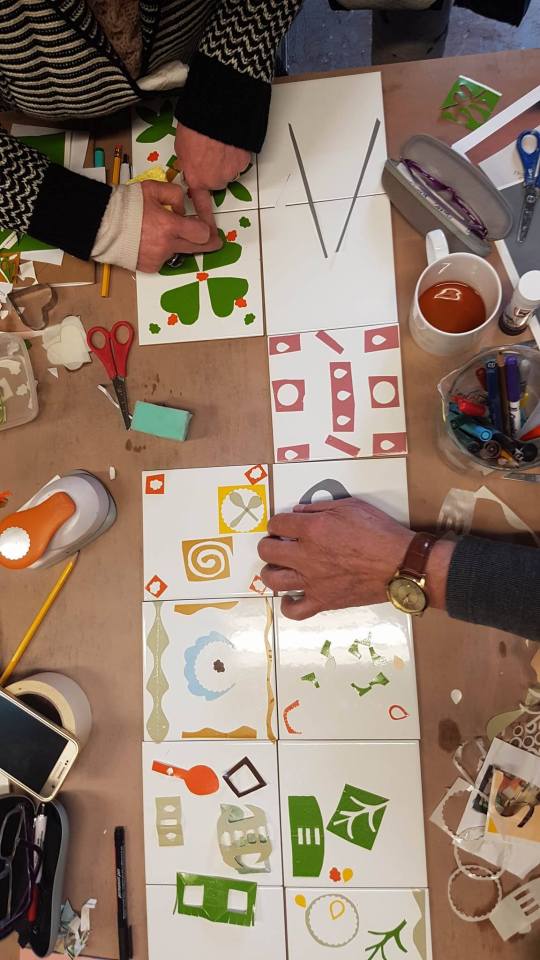
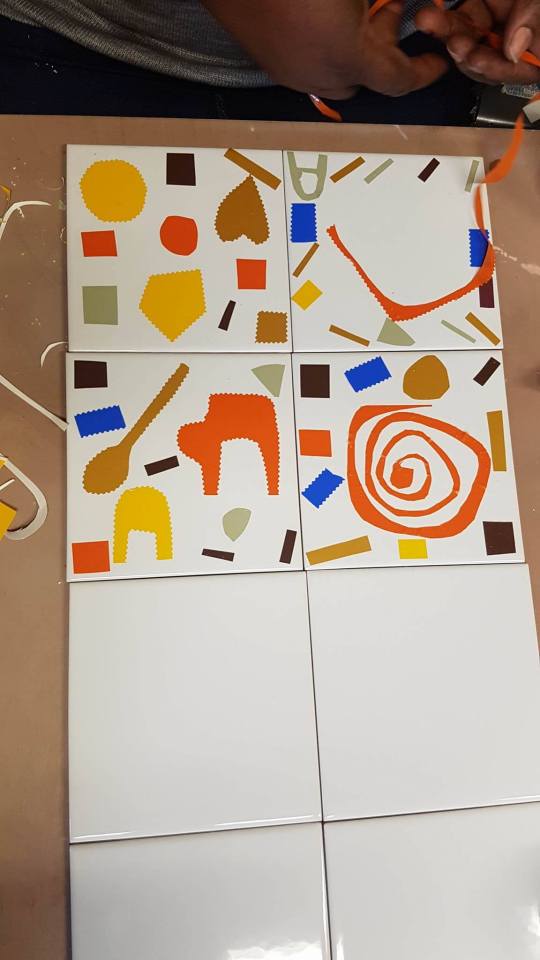
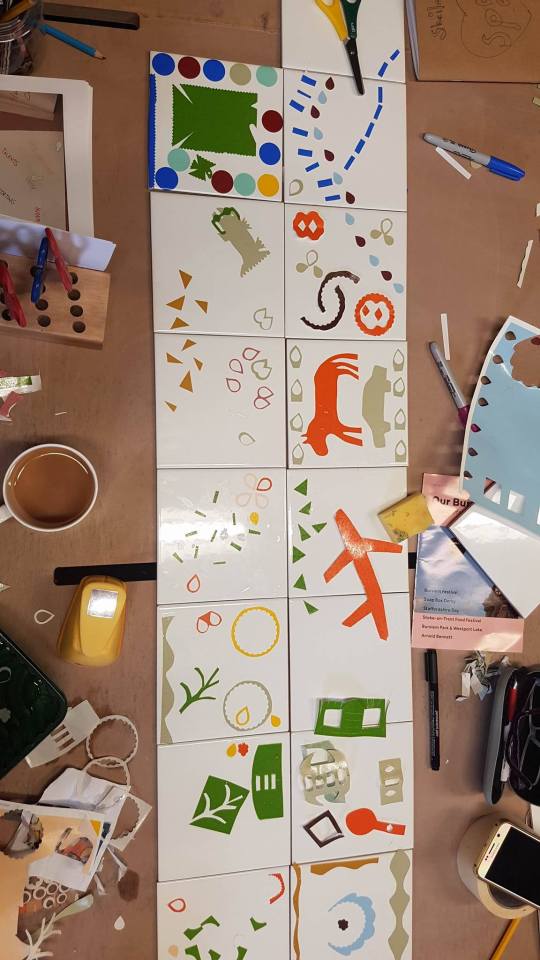
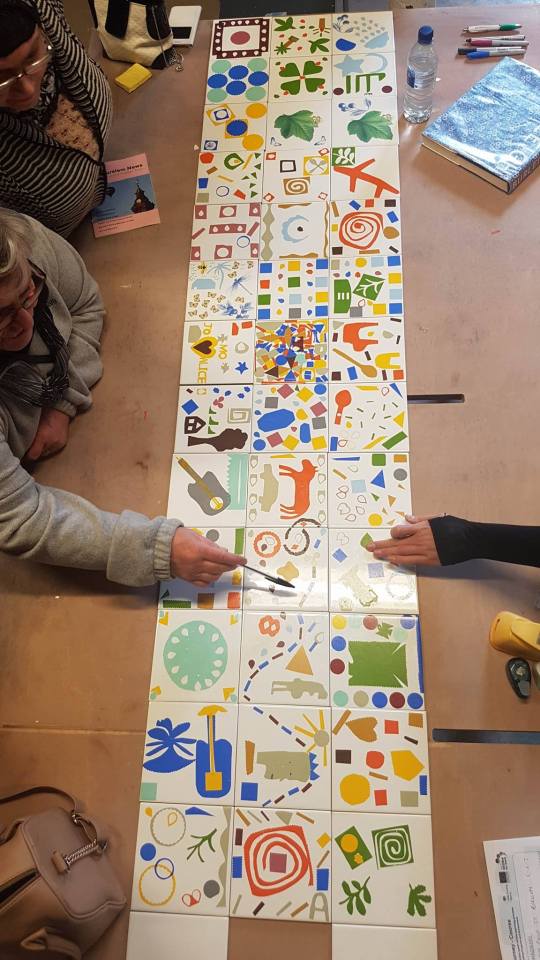
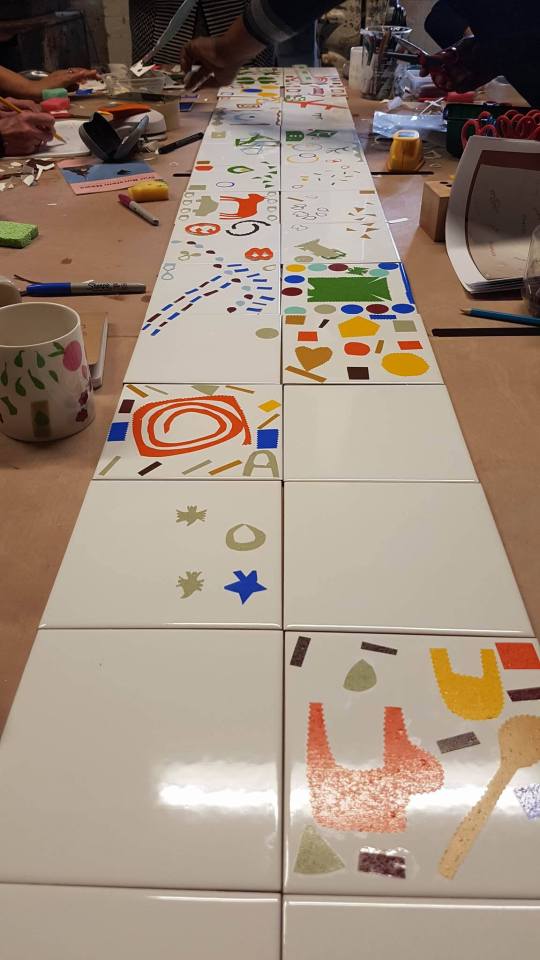
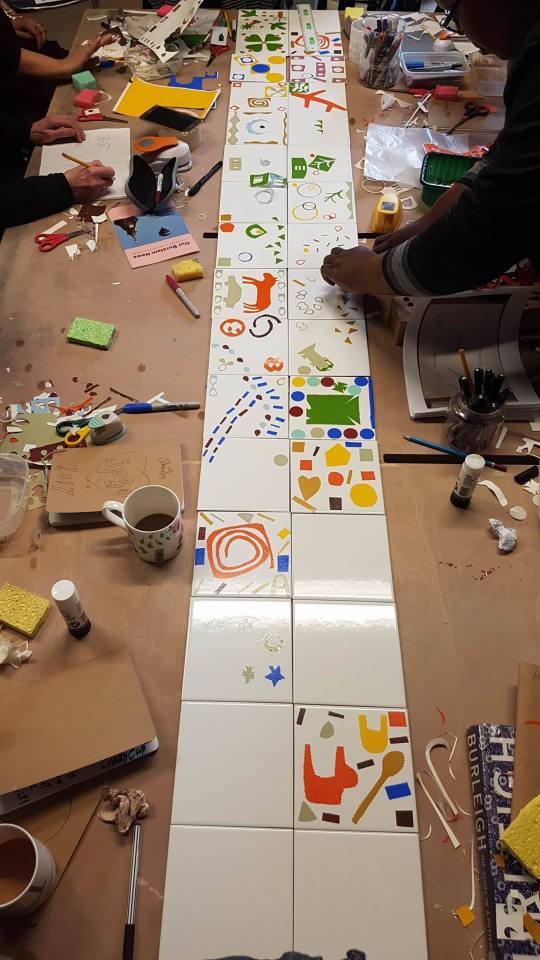
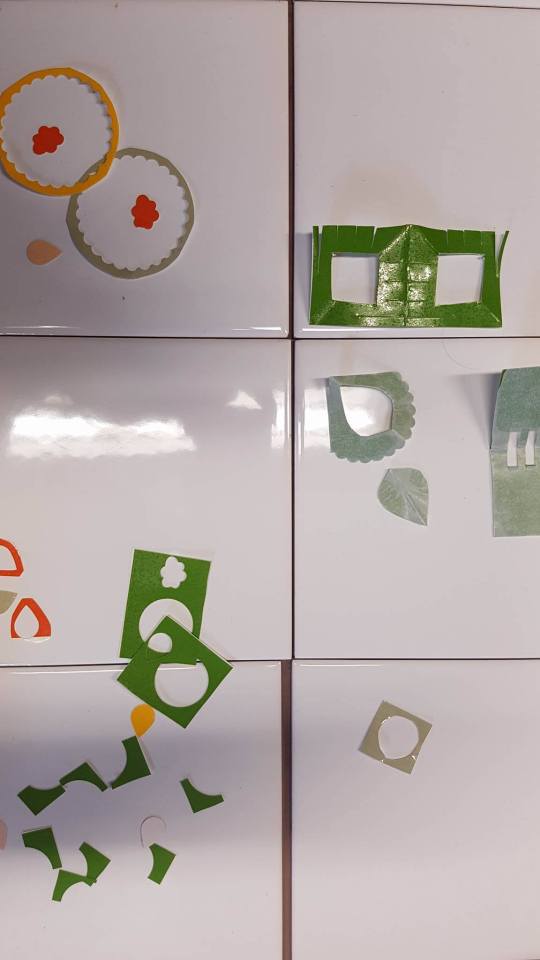
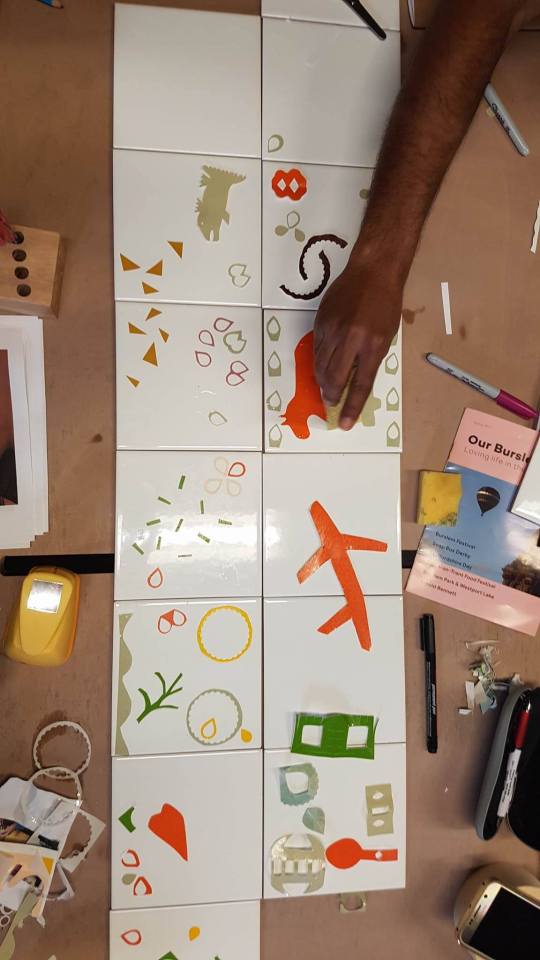
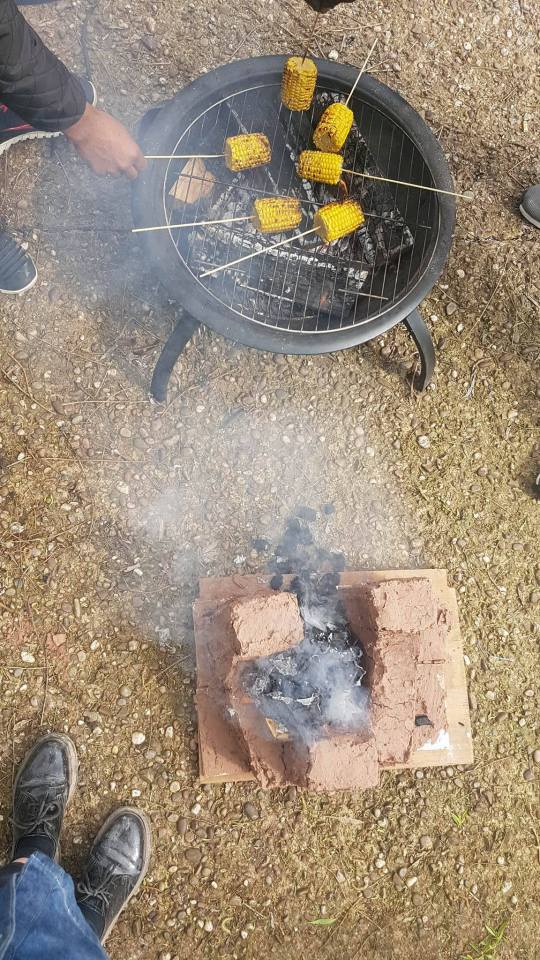
#aitp#artistintraining#stokeontrent#britishceramicsbiennial#workshop#clay#ceramics#wellbeing#connection#heritage
0 notes
Text
Artist In Training Programme ‘World In One City’
World In One City enters it's sixth, penultimate week. It has been such a fantastic project to be involved in, and I am amazed by the wonderful work which has been produced. The group have shown some great skills, and their creativity, confidence knowledge of the city has grown throughout. One thing that has shown this week is the participants ability to realise ideas and follow design processes well. This session, we created plates for our feast in June. This was a group decision, as Joanne Ayre, Dena Bagi and I asked the group what they would like to create. We used textured wallpaper, cut into shapes and rolled onto slabs. We took inspiration for our surface design from the table runner created in our last session. Wooden bowls were used to form the pieces, a process similar to a technique some of the group tried out at Emma Bridgewater factory at the start of the project. The results were lovely, and the quality was excellent. There was real consideration for the material and it's qualities. "This has been such a great opportunity to create fantastic things. I am grateful!" said Abosede. We designed a new outdoor clay oven to be used for cooking in our final session next week, and began to plan our feast day. The group will be cooking food to be shared with the public and we will be running clay workshops inspired by our seven sessions, this will give the group a chance to show the skills they have learned. "I am very much looking forward to using the work we have created for our feast! We are nearly all set!" said Diane. Joanne Ayre has taken inspiration from Sabbah's foil tabbouleh containers by slip casting them. The results look really lovely and it's great for the participants to see the material transformation through the casting process. It is fantastic to see artist Joanne Ayre sharing her knowledge and skills with the group, it has been really important for the group to not only be creative, but to learn about Stoke-on-Trent pottery heritage. The group have a real interest in the city they are living in and are finding a real connection with clay.
Alice Thatcher, Artist in Training 05/04/2017
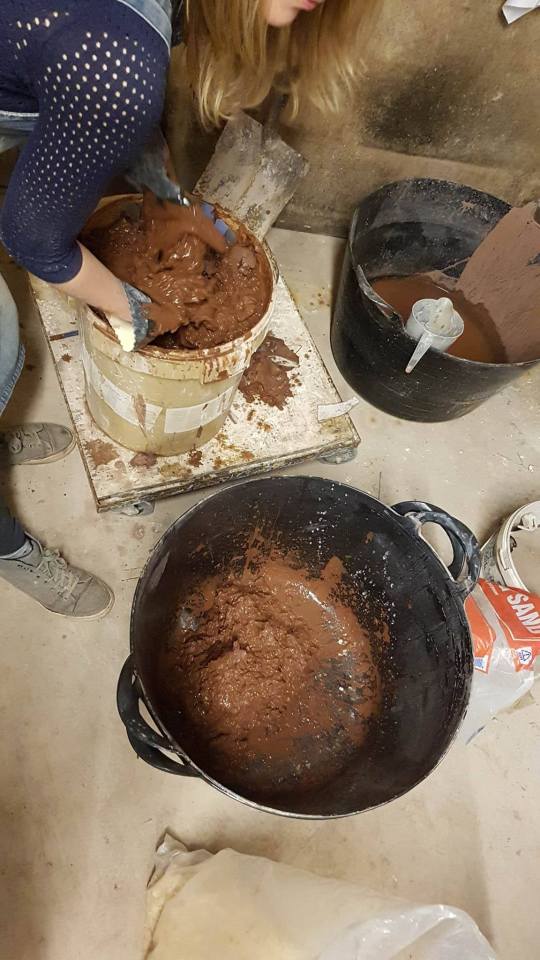
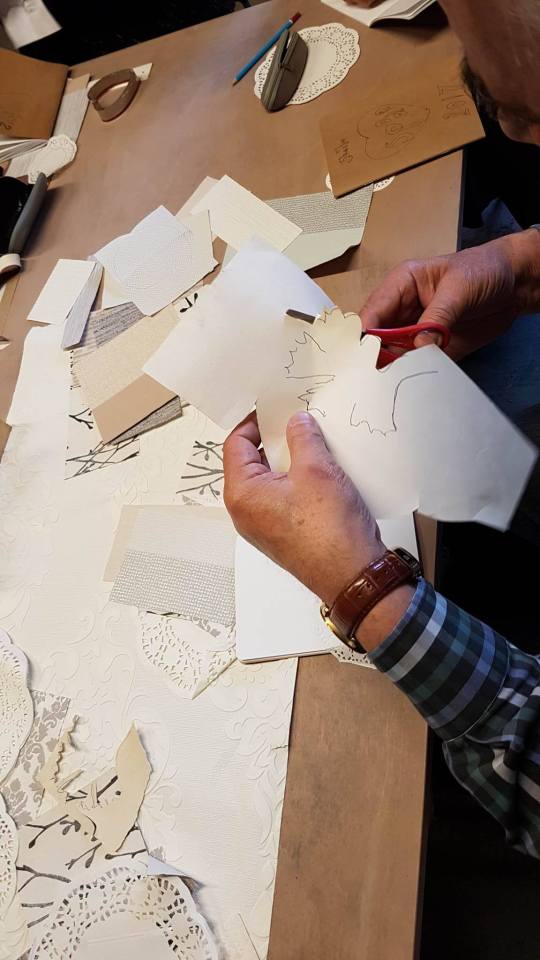



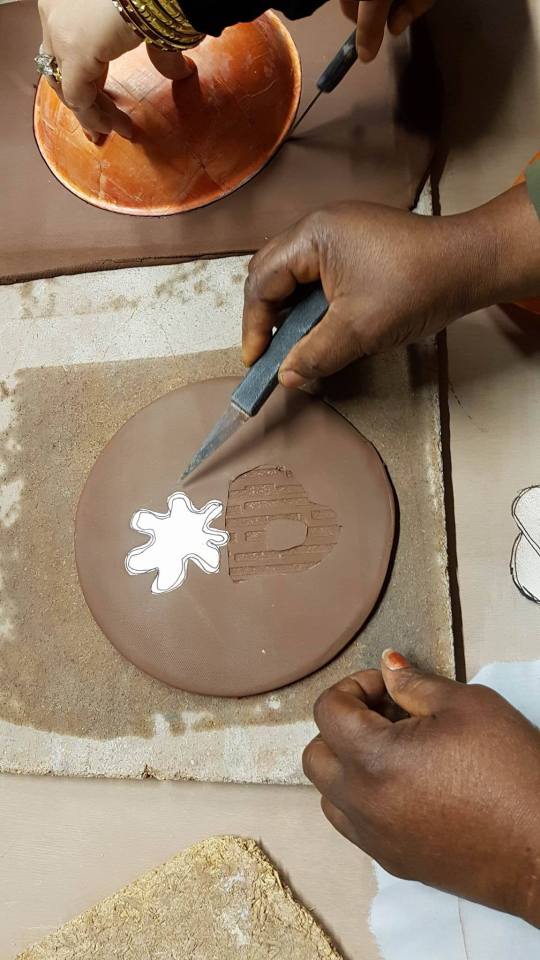
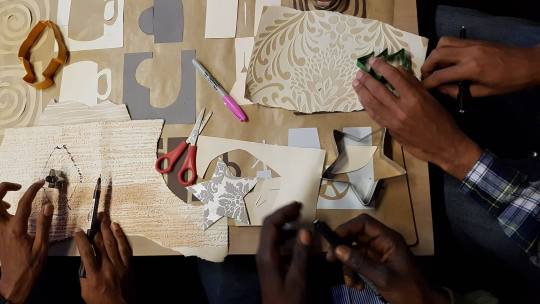
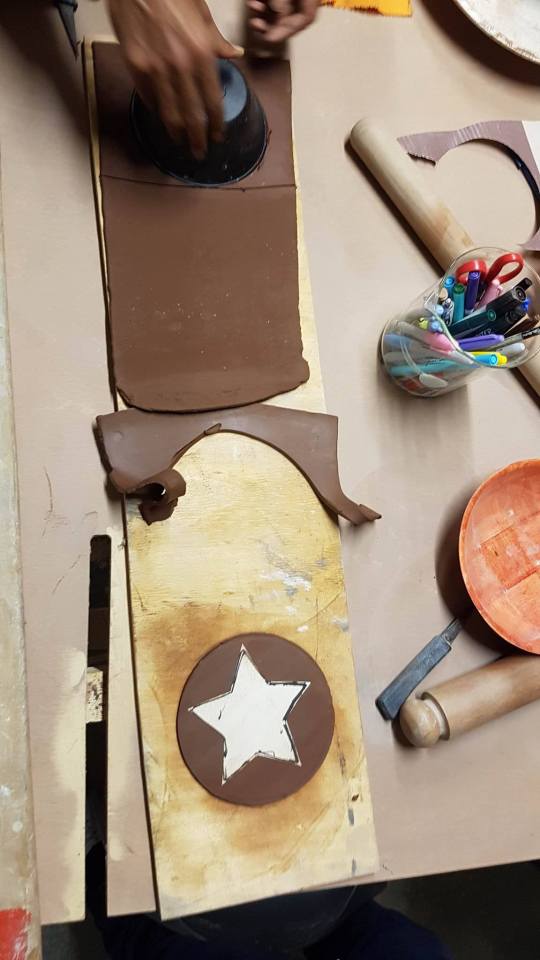

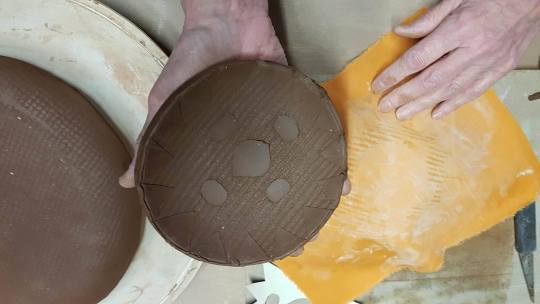
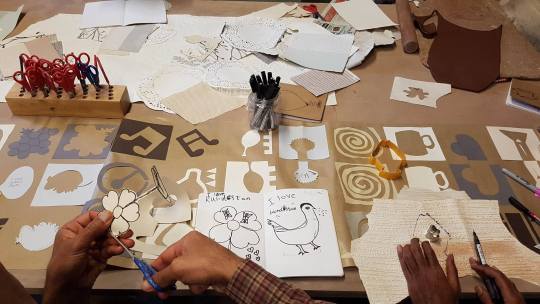
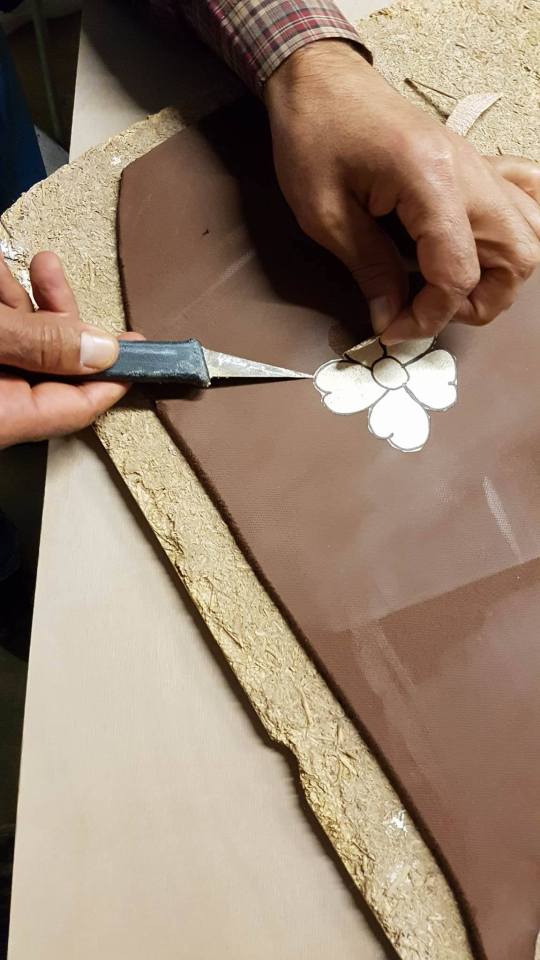

#aitp#artistintraining#stokeontrent#britishceramicsbiennial#workshop#clay#ceramics#design#wellbeing#material
0 notes
Text
Artist In Training Programme ‘World In One City’
Yesterday's World In One City session at the British Ceramics Biennial was a pretty special one. Not only did we create spoons, dishes and collage with Jo Ayre, we also had a visit from BBC Radio Stoke. The participants from the Burslem Jubilee had the chance to talk to presenter John Acres about their experiences of working with clay and their impressions of Stoke-on-Trent. Eyob spoke of the difference the World In One City project makes to him. It has given us a huge insight into how important our weekly sessions are. "I have never used clay before and I have learned many things. It makes me feel like I have a bright future. My family, friends and I learn to use clay together and I love seeing people enjoy themselves. Comparing what we are doing in the studio to what we saw at our tours around Emma Bridgewater and Burleigh is fantastic, it is historical. I was living in darkness, but this is real life for me now. I feel safe! Stoke is my home and this is my family." Sabbah and Mohammed spoke about the new skills they have learned and how amazed they are by the things they have made. Seeing the participants relationships, skills and confidence growing throughout the weeks has been amazing. Artist Joanne Ayre was interviewed on the show. "World in One City is extremely important for the participants to get to know the material which has formed our heritage. Clay gives you a way of taking something raw and shaping it into something beautiful and useful, and they are getting to experience this. It's a real break away from the things which are most likely preoccupying them." Our picnic feast day will give the Jubilee group chance to use the pieces we have created to share food with. I hope the group will sense a real achievement through this. "Being able to give is so important to the participants." "This has been one of the most rewarding things I have done in recent years." said Jo. To listen to the show. Click here! It is wonderful to see the unity of the group, and how uplifting these sessions are for the participants. It is clear to me that the group have found companionship amongst one another. Below are some images from today's session. We began by creating a table runner from paper, using a collage technique Jo has designed. This was designed and made to share. The result was fantastic! This technique gave the group a new insight into design. We then played around with creating small scale spoons for our feast, and created some small square dishes inspired by our collage work. A wonderful session with some inspiring outcomes and humbling conversation!
Alice Thatcher, Artist in Training 21/03/2017
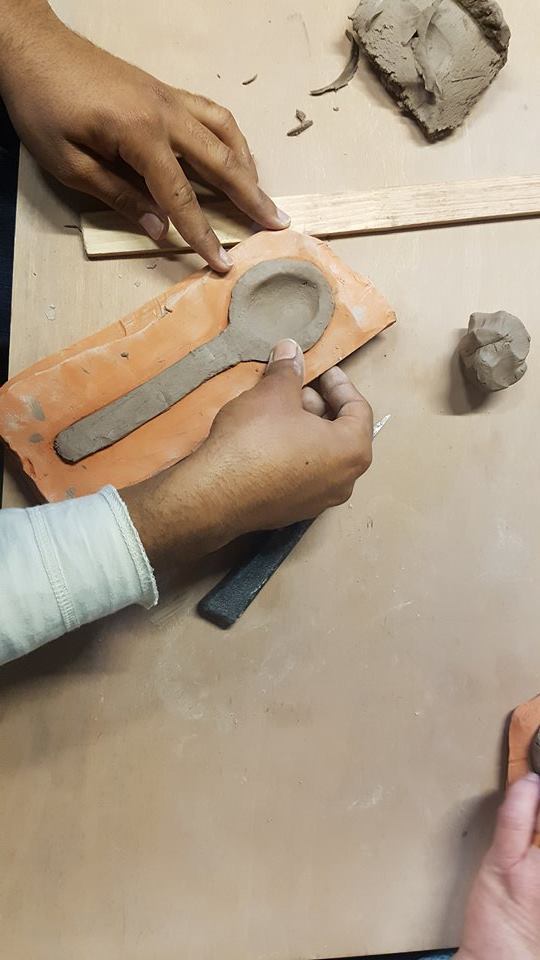
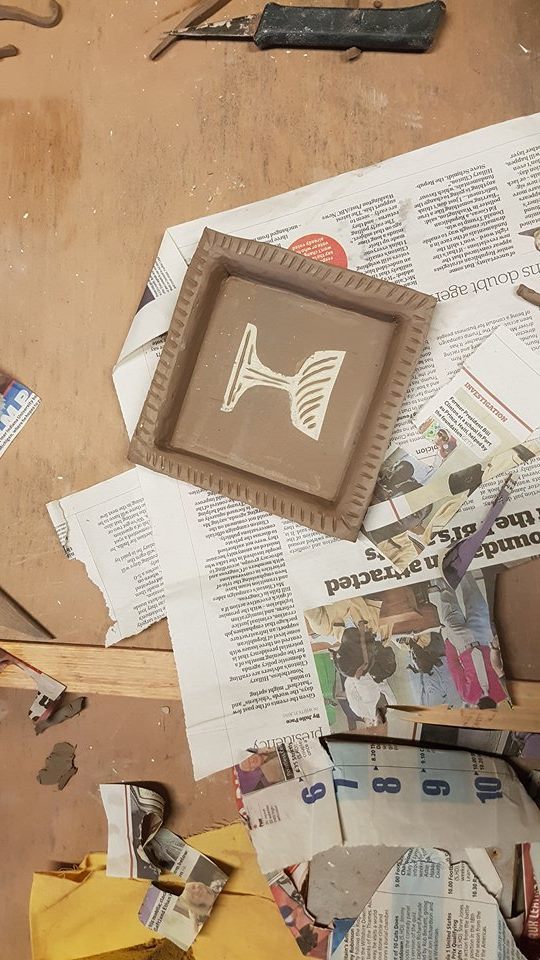
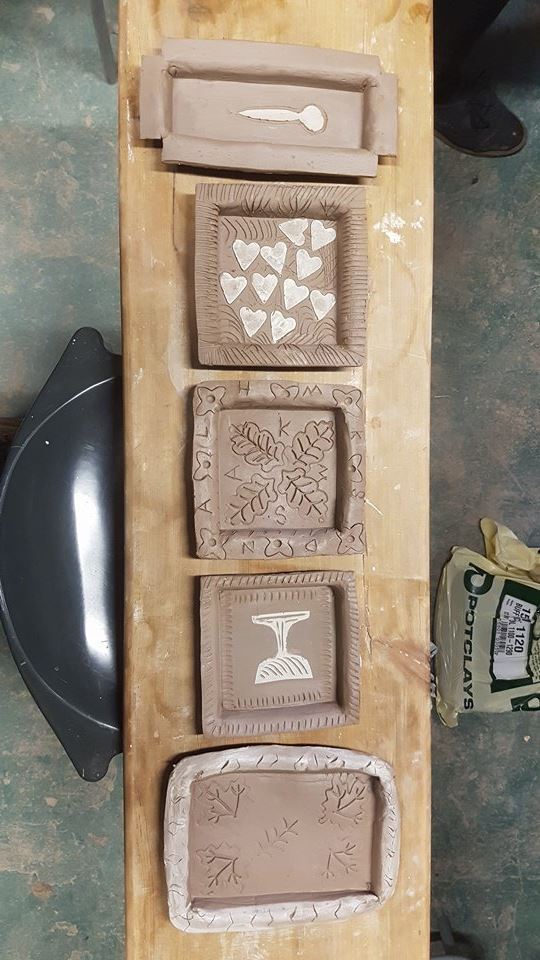
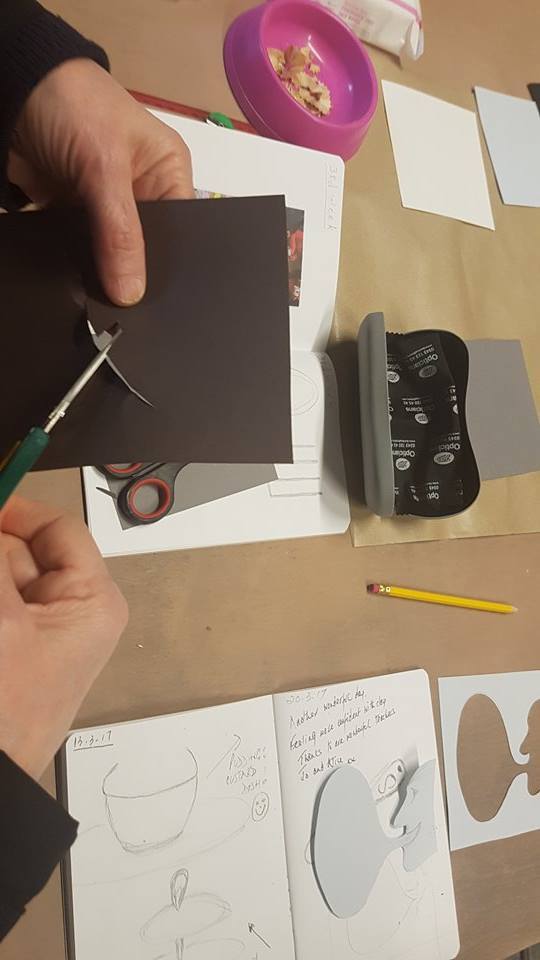
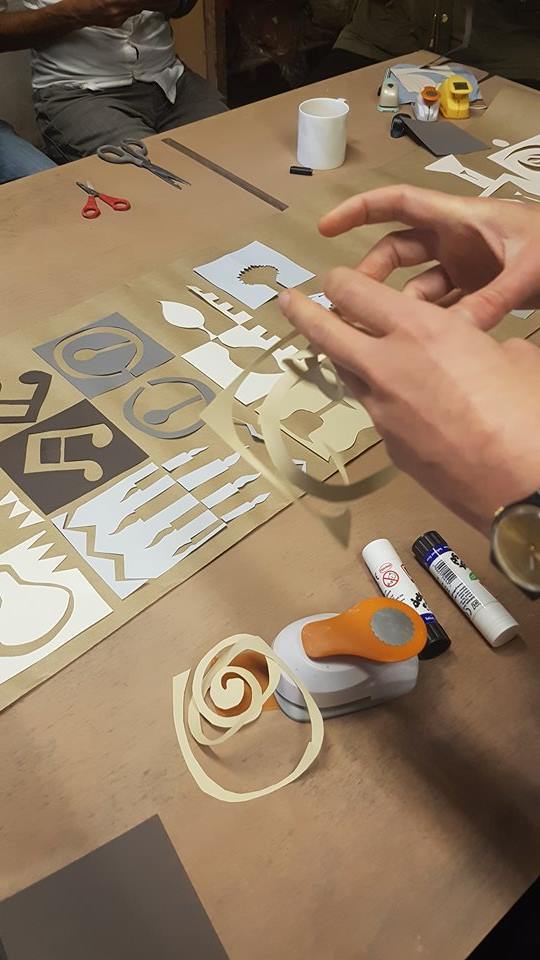
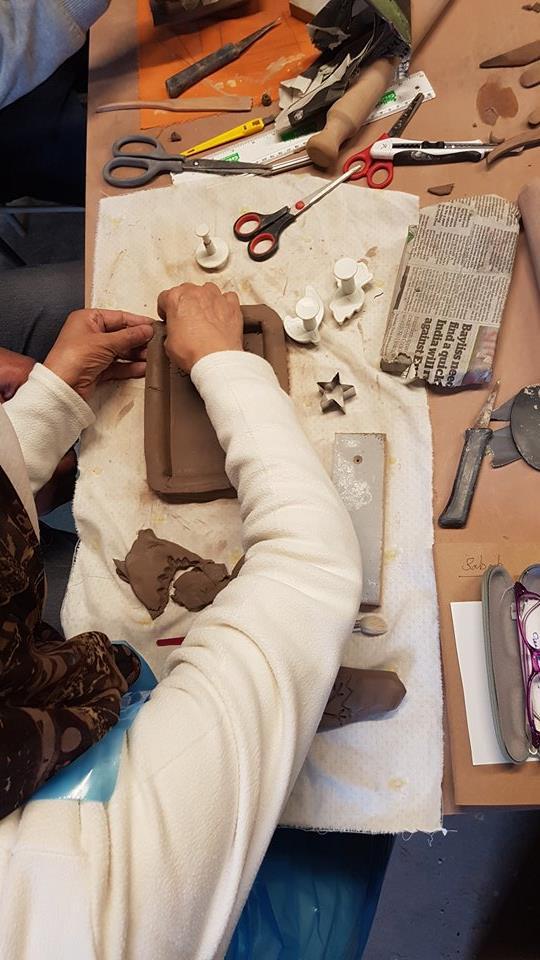
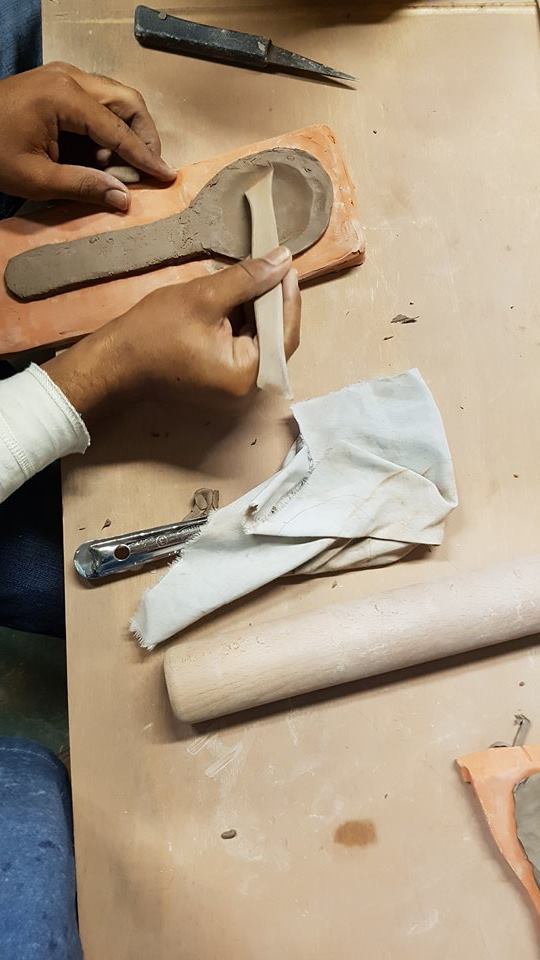
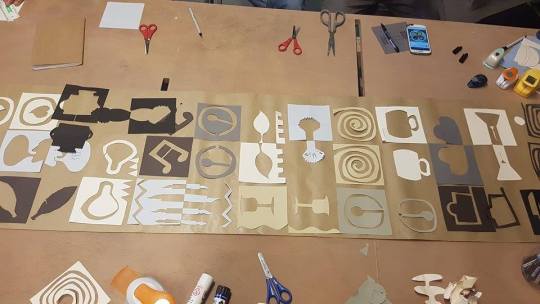
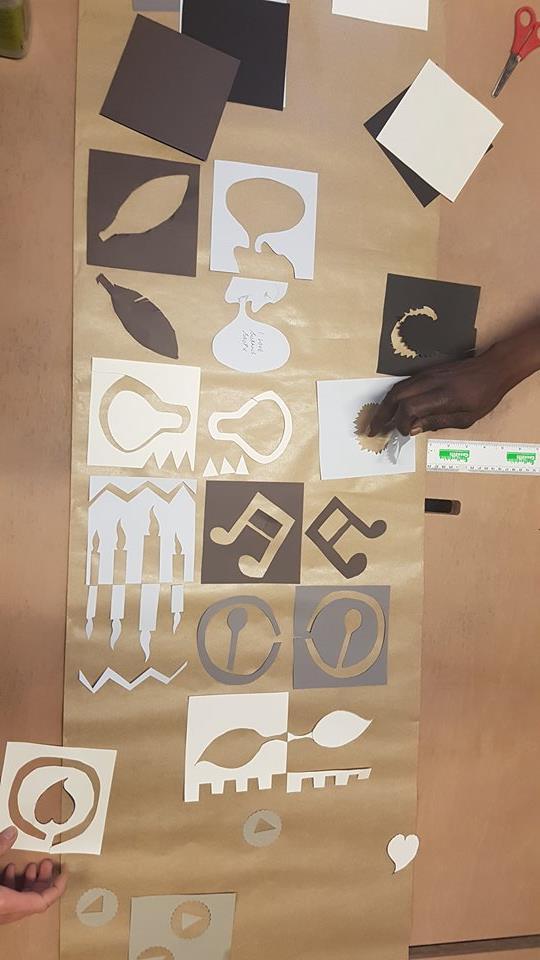
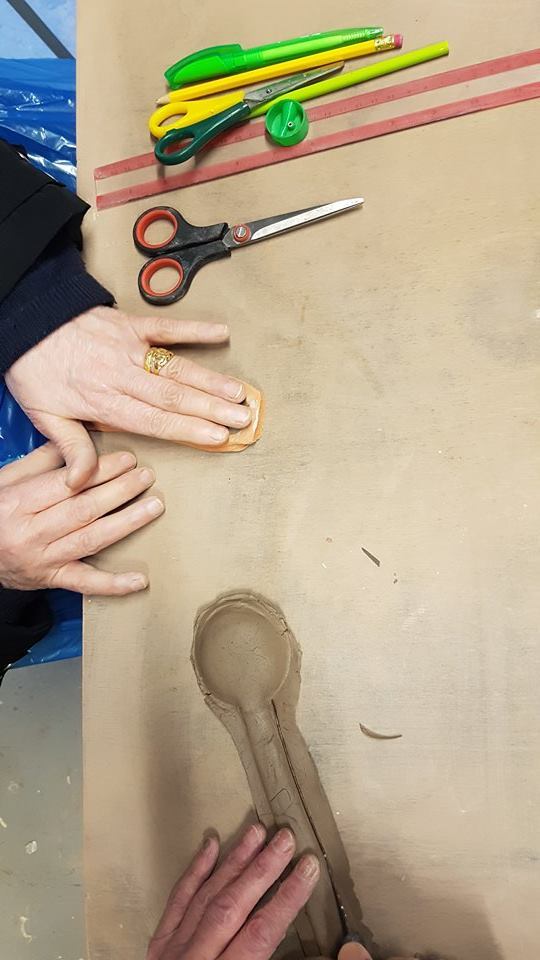
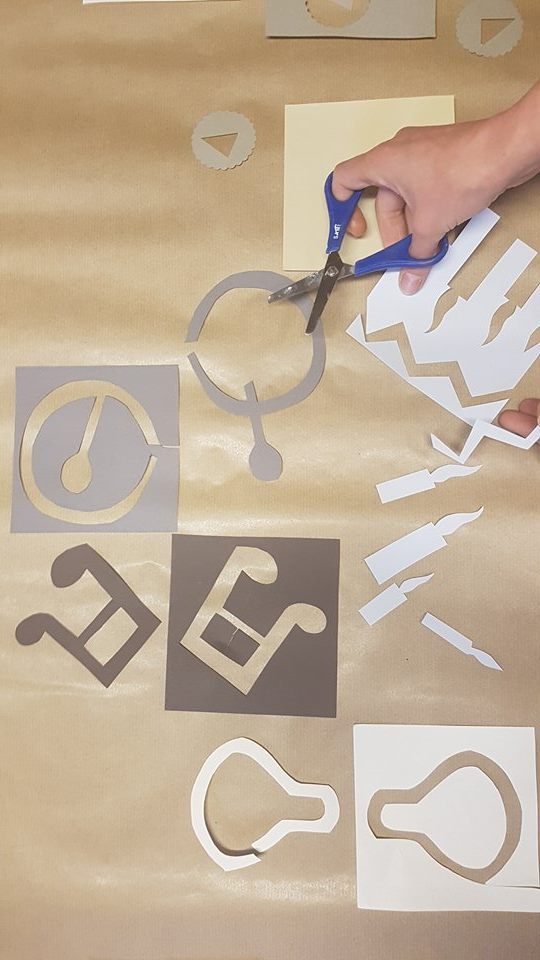
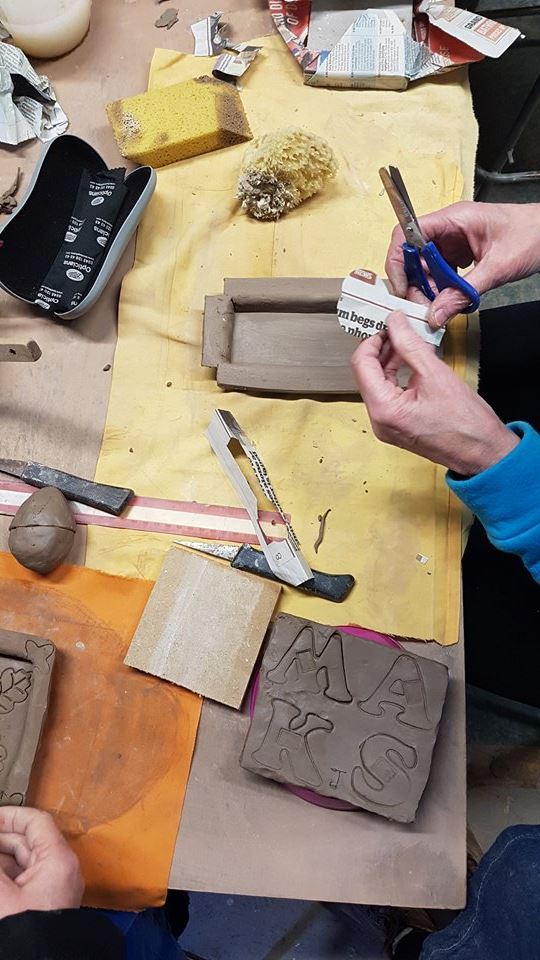
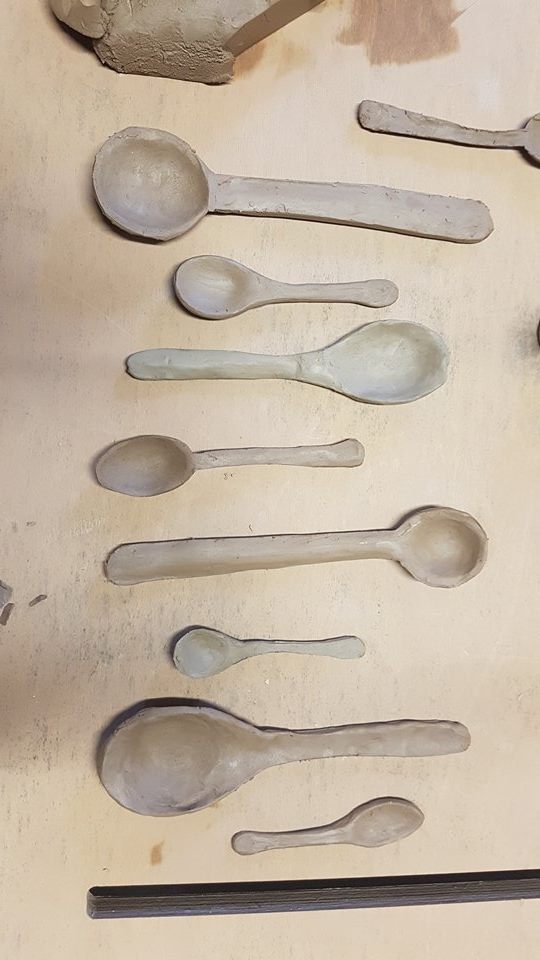
#stokeontrent#artistintraining#aitp#britishceramicsbiennial#workshop#clay#ceramics#participatoryart#wellbeing#heritage#studio#bbcradiostoke
0 notes
Text
Artist Training Programme ‘World In One City’
Monday morning's spoon making session with Jo Ayre at the BCB studio was fantastic. The group created some wonderful pieces in response to our discussion on feasting. We spoke about the food we would use our spoons for; rice, dulma, tabbouleh and stew, being the favourites, then we began planning our picnic. This will be an event where we can share our favourite dishes and feast together, using the ware that we will be creating in the studio. I felt a real sense of empowerment from the participants in Monday's session. The group have clearly taken a lot from the workshops so far. Their skills and knowledge have improved vastly, with the group taking ownership of their work, and the confidence of the group is clearly growing. 'I could have never imagined making the things I have made' 'We have discovered a new world through clay' said Sabbah. Our afternoon was spent at Middleport pottery. The tour was a great insight into the heritage of Stoke-on-Trent, and I believe the group were surprised at how much they already knew about a working pottery and the history of the city. I feel very grateful to be part of such a wonderful project. Assisting Jo with her work has been really insightful and inspiring for the improvement of my artist practice. I have learned a great deal from the way that she works, especially with people. Her warm, welcoming attitude, good communication and clear instruction are essential. Her work is explorative yet tailors to the groups needs. With feasting being the key inspiration for this project, the group will automatically feel a sense of belonging as we discuss something so relevant to each and every culture. Linking food with the heritage of Stoke-on-Trent is vital for the group to feel welcome and to learn about the city they find themselves living in. During the session, the group spoke about the great teamwork, and how their confidence growing every week and the supportive, warm nature of the BCB team and the fellow group members. Two of the group members commented 'Our relationships with each other, Stoke-on-Trent and clay are growing each week' Usman. "I am so happy to be a part of this. Thank you!" Abosde. Alice Thatcher, Artist in Training 15/03/2017
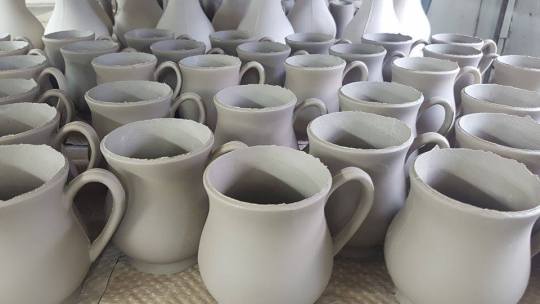
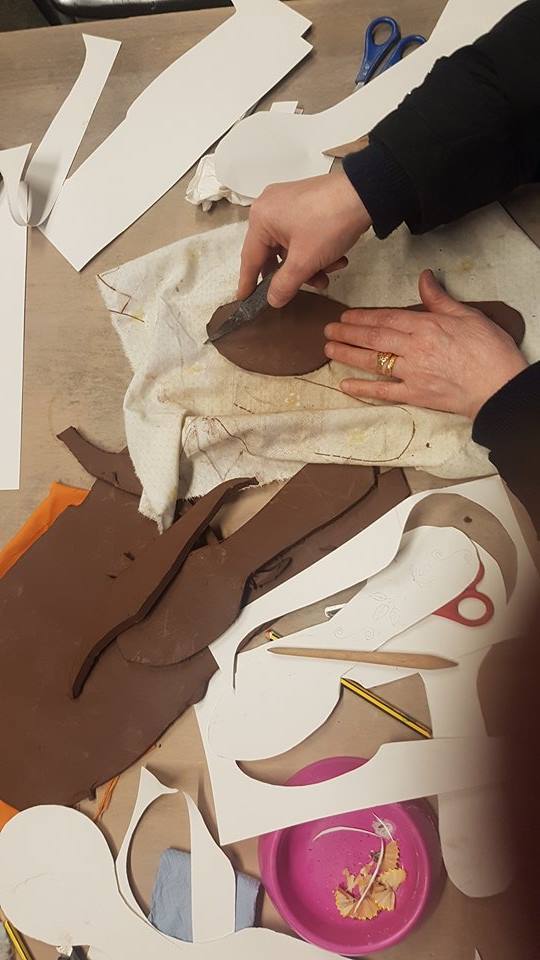
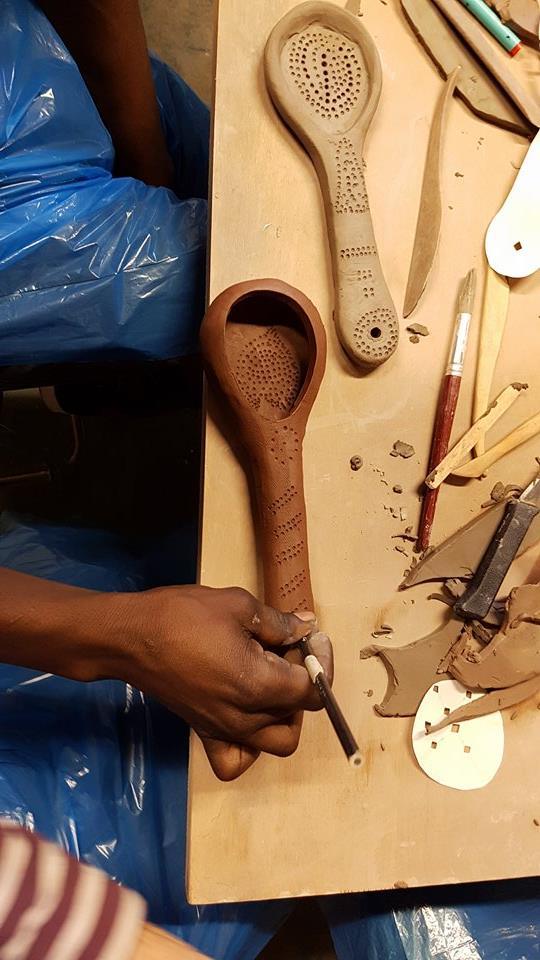
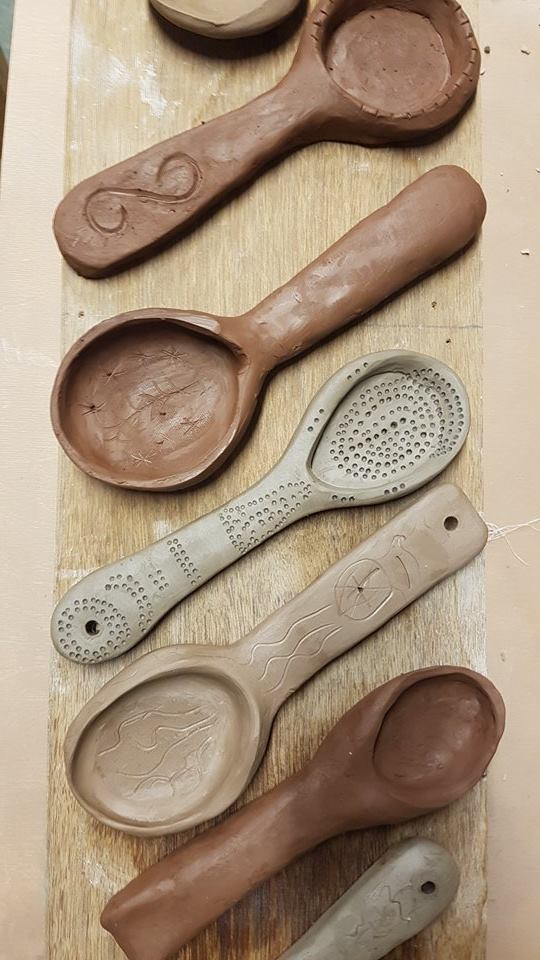
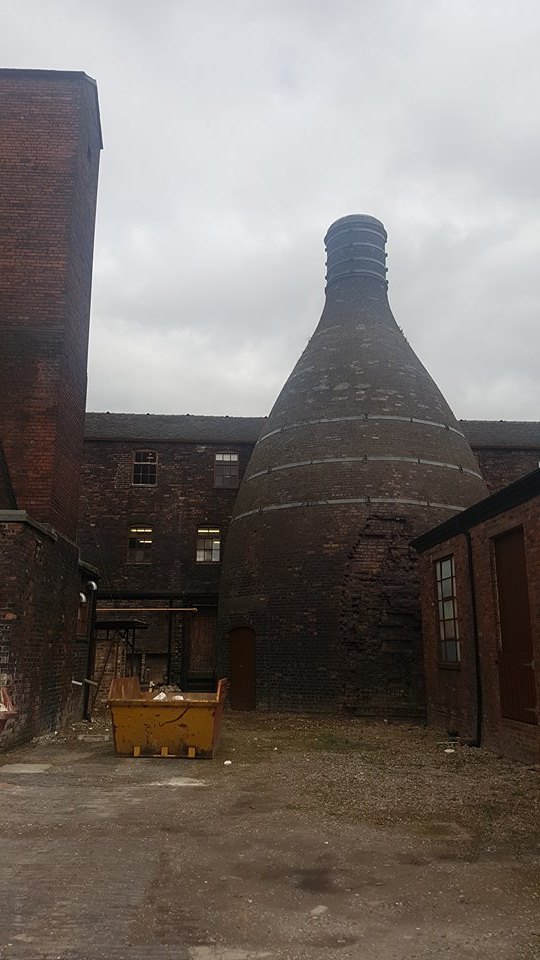


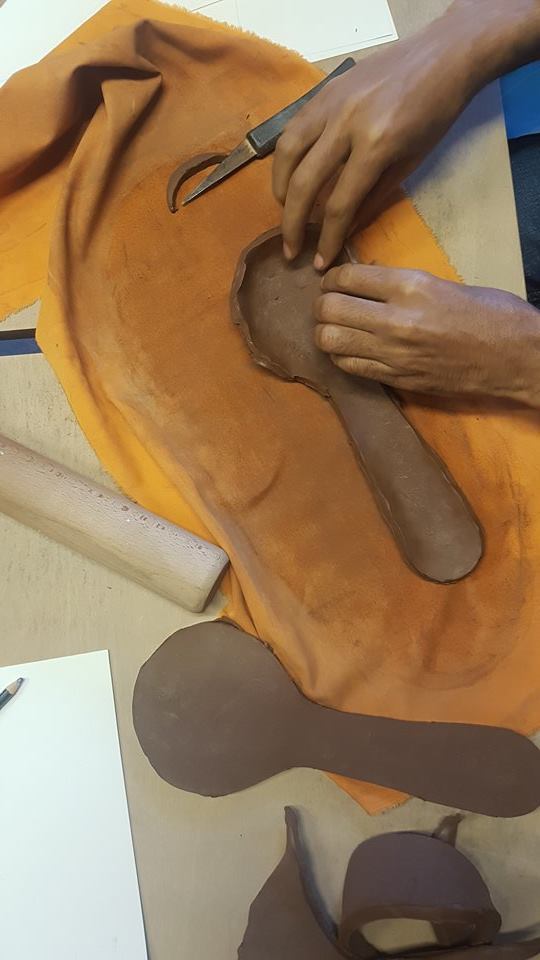
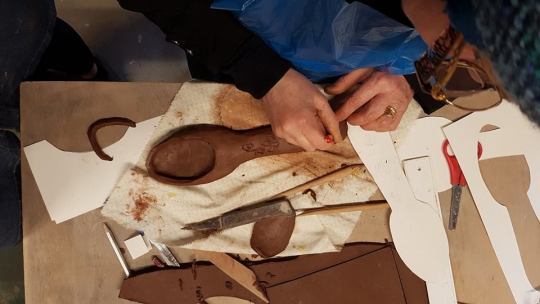
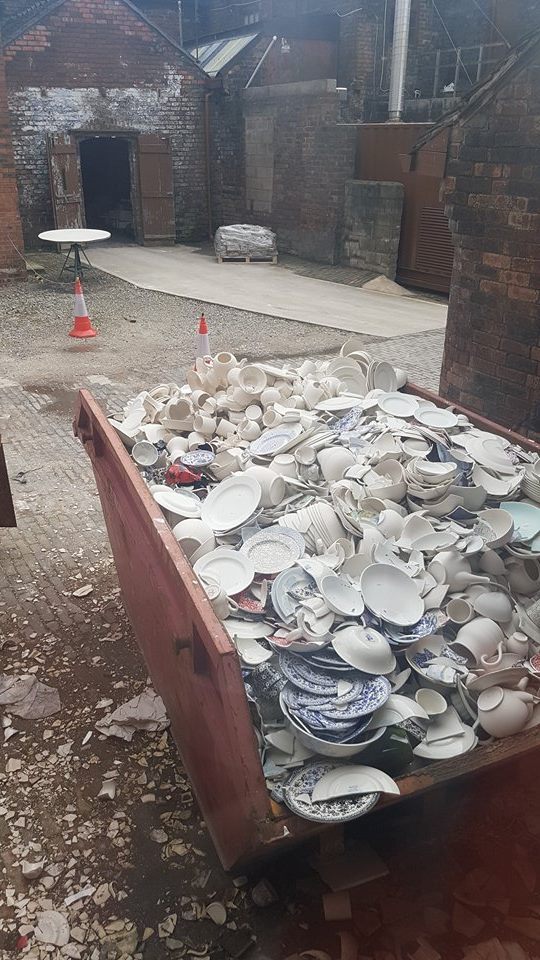
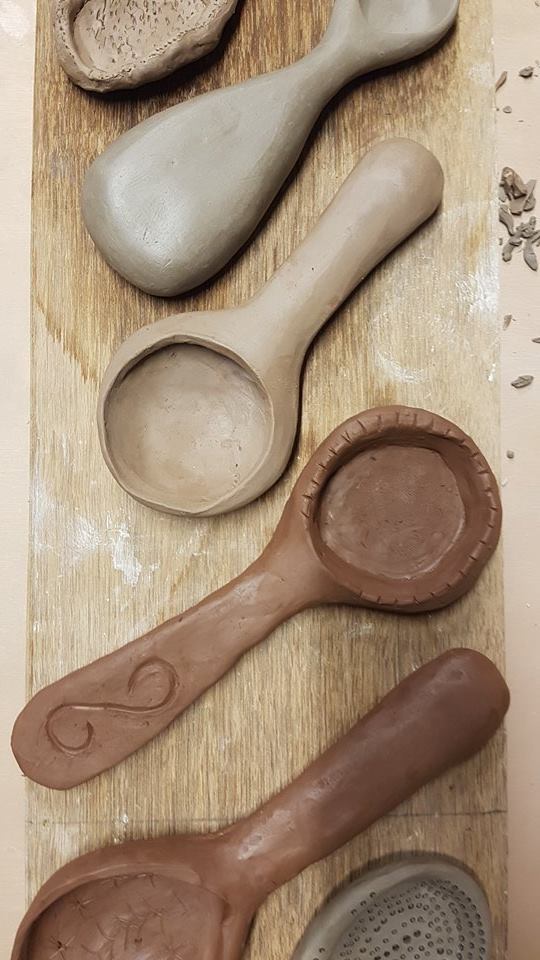
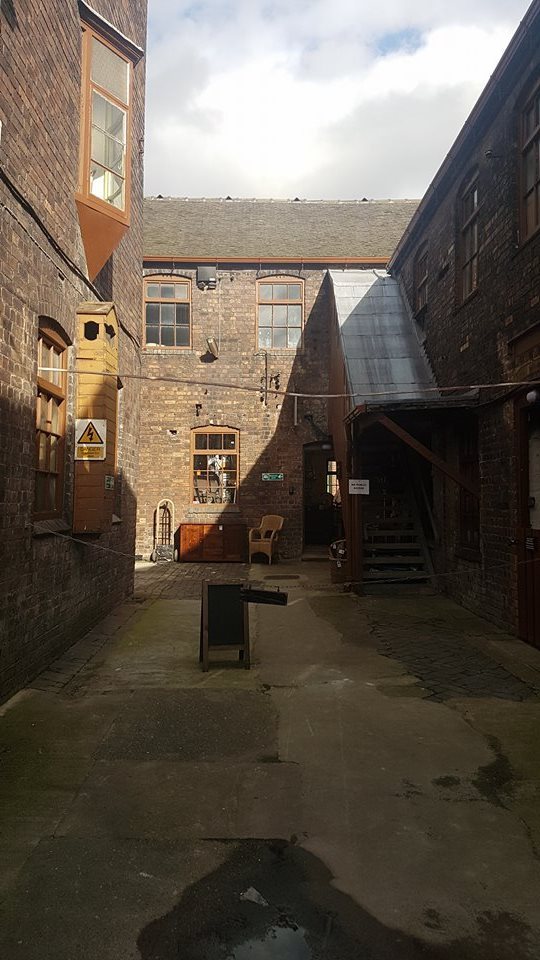
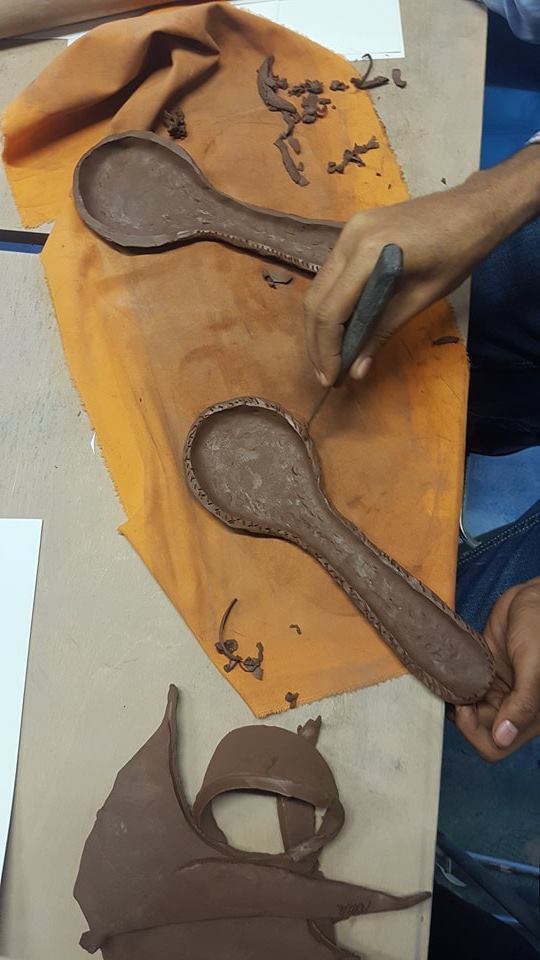
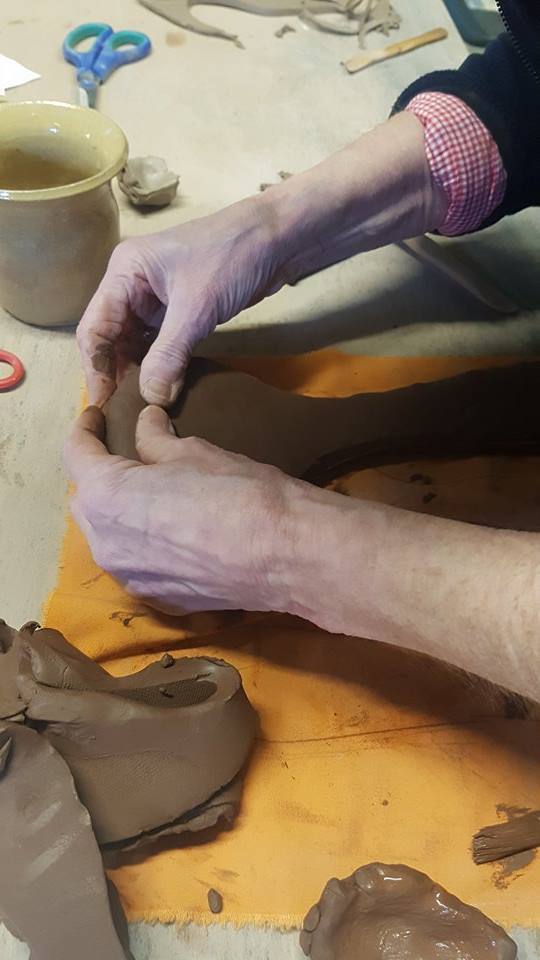
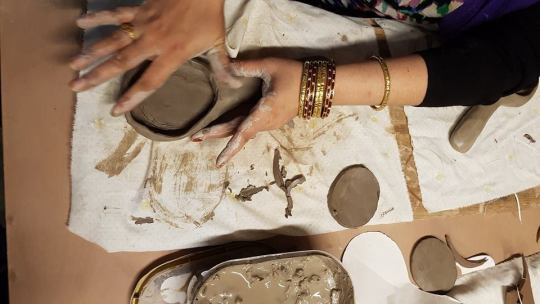
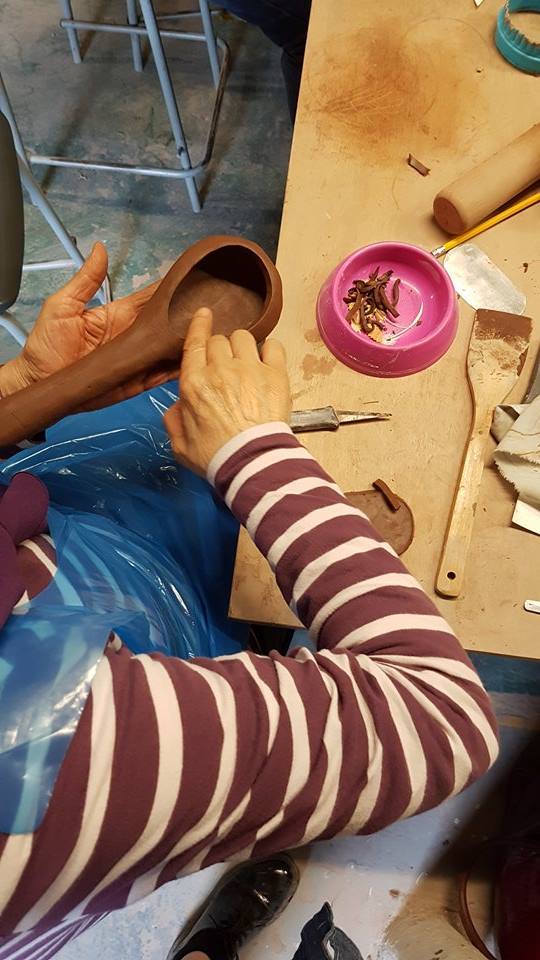
#stokeontrent#artistintraining#aitp#britishceramicsbiennial#workshop#clay#ceramics#participatoryarts#wellbeing#heritage#spoons#studio#middleportpottery
0 notes


